

Best Time to Visit Fiji: Month by Month Breakdown
Fiji is a tropical paradise, and this idyllic archipelago in the South Pacific can be visited any time of the year if you’re looking for hot weather and an escape from the cold.
The country enjoys beautifully warm weather regardless of the season, and it’s a popular place to visit for anyone looking for winter sun.
Fiji does have a wet and a dry season, but unlike other parts of the Pacific, it’s only rarely hit by cyclones in the worst of the wet season.
The wet season runs from November to April, and this is when Fiji is hot and humid. You can expect rainfall but it’s often short, although fierce, and it’s a good time to visit for lower prices and quieter tourist spots.
The best time to visit Fiji is in the dry season, which coincides with winter. This is from May to October, and you can expect beautiful, warm weather, and clear skies. This is also the peak season of course, and prices can be much higher.
To help you to plan your Pacific getaway, here’s our month by month guide to choosing the best time to visit Fiji.
Don’t leave home without: Lonely Planet Fiji (Travel Guide)
Table of Contents

January in Fiji
January is the middle of the wet season in Fiji, and that means that it’s also the height of summer.
Temperatures rise well above 30 degrees Celsius and remain hot even through the night, which can be an uncomfortable experience if you’re not used to dealing with constant humidity.
January is a popular time though despite the heat because many Europeans or North Americans will visit to escape the cold of winter back home.
It’s also one of the busiest times outside of the dry season because many Australians and New Zealanders visit too, in order to enjoy their Christmas and New Year holidays.
It can be an expensive place to visit in January and it’s not the best time to visit Fiji if you are on a budget.
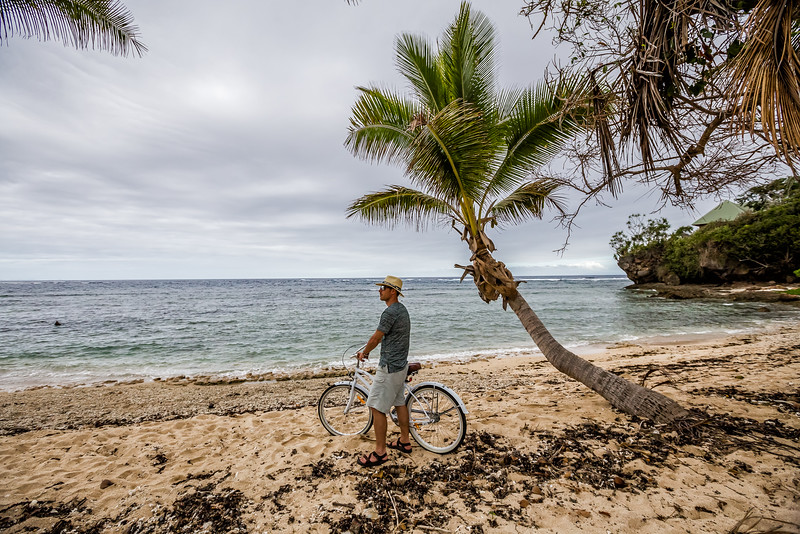
February in Fiji
February is also the middle of the rainy season, but this is the best time to visit Fiji if you’re looking for a bargain resort getaway.
The flights to Fiji tend to be much cheaper in February, and because this is low season, the hotel deals can be fantastic.
It’s so much quieter than January but the weather remains the same, with lots of heat and humidity.
You can expect to be caught in frequent rain showers, but generally speaking, these are usually short, although very fierce. Pack the raincoat and umbrella for February.
February is the best time to visit Fiji if you’re looking to see the waterfalls at their best because the swimming areas and the drops are powerful after heavy rainfall.
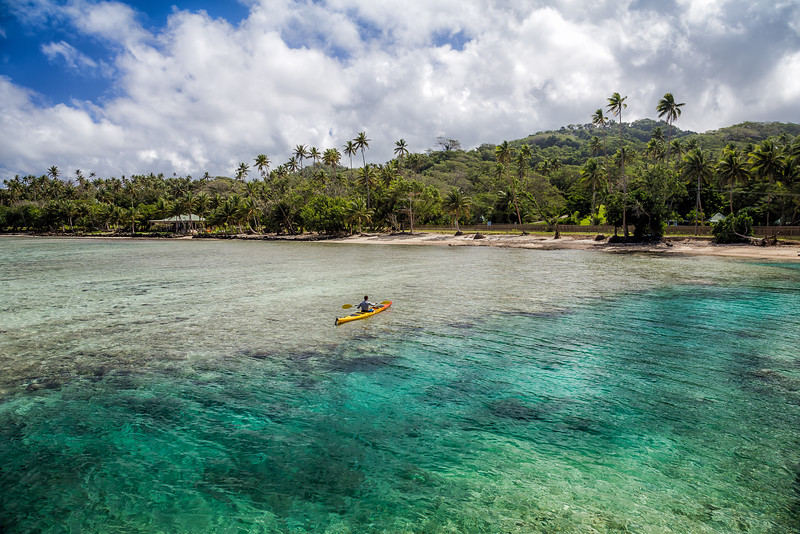
March in Fiji
Just like February, you can expect there to be a lot of rain in March and it’s not the best time to visit Fiji if you’re looking to stay dry.
This is the rainiest month of the year and it’s also the middle of cyclone season, meaning that if Fiji does get hit by tropical storms it’s likely to happen in March.
But for budget travelers , the deals on flights and hotels can be a steal compared to the high season.
If you want to experience luxury on a budget, then consider March, and book out a swanky beachside resort or overwater bungalow.
You’ll also find the jungles and forests at their most pristine, as the heavy rainfall ensures that flowers are blooming and the trees and foliage are verdant and beautifully green.
The waterfalls, of course, are easily at their most powerful extent in March too.
The Yasawas Islands are also a good pick for March because they receive less rainfall than places like Suva or Nadi.
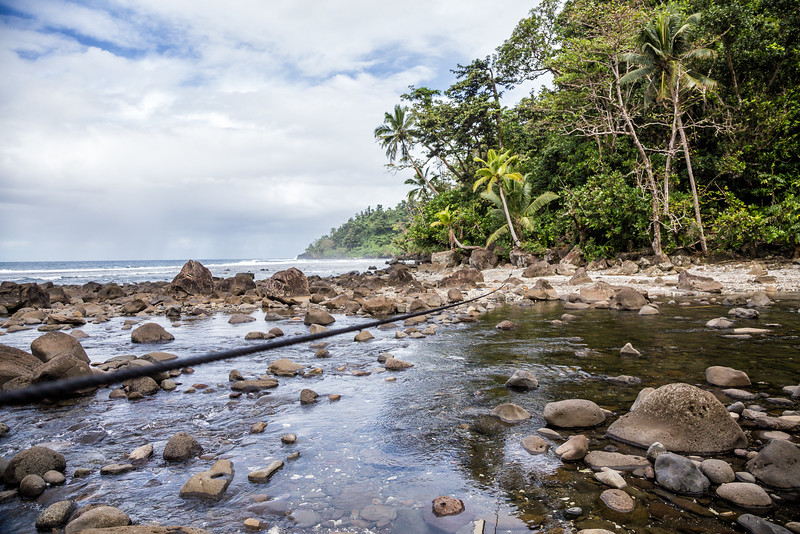
April in Fiji
April is the last month of the wet season, and it’s a lovely time to be in Fiji if you’re looking to avoid the summer crowds that will soon arrive and enjoy fairly glorious weather too.
Temperatures are still very hot, and you’ll find it often rises above 30 degrees Celsius in the daytime and still stays high in the night.
The humidity is dropping though as Fiji transitions into winter.
You’ll still have rain showers in April but these drop off towards the end of the month.
The Yasawas and Mamanucas Islands will have much less rainfall so head here for a lovely tropical getaway.
A beachside resort is a good choice for April as you’ll be able to jump into the ocean to cool off.

May in Fiji
May is the start of the dry season and it can easily be the best time to visit Fiji.
You’ll avoid the real high season crowds that arrive in June and July and you’ll still have wonderfully gorgeous weather.
There might be the odd rain shower in May but it’s mostly dry across the islands.
The sun is shining and the temperatures are still hovering around 30 degrees Celsius, which is why this is a great time to explore Fiji.
Go scuba diving or snorkeling, as the water is still warm and the visibility is already much better than during the rainy season.
Fiji has some of the best coral in the world and one of the largest reefs in the world too.
Head to Vanua Levi for the pick of the snorkeling, or visit Denarau Island to explore the beautiful offshore paradise before the crowds arrive next month.
June in Fiji
June is the start of the high season because weather-wise this is the best time to visit Fiji.
The rain is now over and the skies are clear, while the temperatures are starting to drop too.
This is a great time for snorkeling and diving, so head to the tropical idylls of Yasawas or Mamanucas for some world-class underwater views and marine life.
June gets busy in Fiji because in Australia and New Zealand its winter and winter sun-seekers flock to the islands.
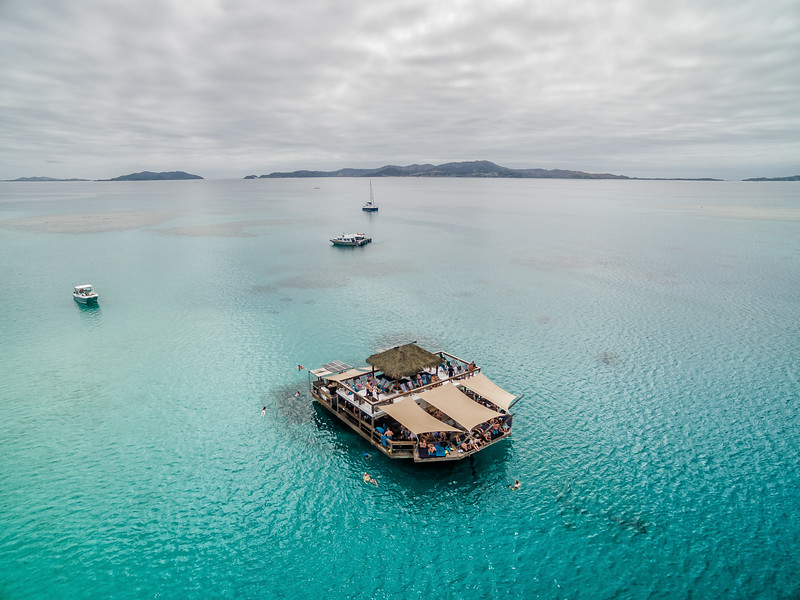
July in Fiji
It’s winter in Fiji in July but that means that it’s a prime time to be exploring.
Everyone else will have the same idea though because this is peak season.
Not only is Fiji packed with winter sun-seekers but it’s the school holidays in Australia and New Zealand too, and for many, it’s the only chance they get to take a vacation.
If you are looking for peace and quiet then July isn’t the best time to visit Fiji.
It’s not a good time if you’re on a budget either because of the prices across the country skyrocket.
You’ll be paying a premium for resorts and paying a lot more for flights too.
It’s a beautiful time weather-wise but if you do go in July be sure to book everything in advance.

August in Fiji
August can be just as busy as July, especially during school holidays, and August is best avoided if you are looking for a quiet getaway.
Prices remain high in August, but everywhere in Fiji looks beautiful this time of the year.
You can’t really pick a bad destination in August so try and get off the beaten track if you absolutely have to travel now.

September in Fiji
September is much quieter than August so try and hold off and visit now instead.
This is getting towards the end of the dry season but the weather is still perfect. It’s getting hotter and it’s very dry.
This is the best time to visit Fiji if you want to snorkel or dive because the water is incredibly clear.
It’s also manta ray season and you can swim with these beautiful creatures off the coast in the warm waters of the Pacific Ocean.

October in Fiji
October is the last month of the dry season, so make the most of the dry weather and clear skies before the wet season soon begins.
This is very much a shoulder month and it’s a great time to be in Fiji if you’re looking for a quiet escape.
Visit the Coral Coast or other popular destinations for excellent underwater activities in the clear waters that surround Fiji.
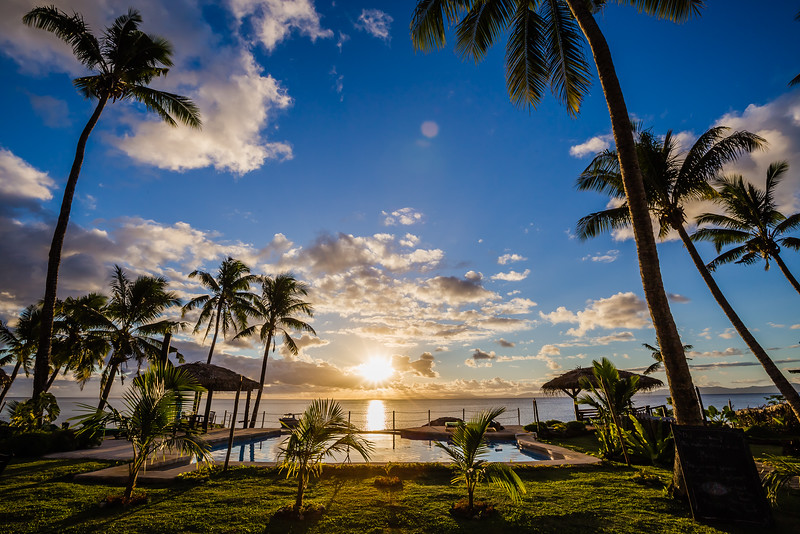
November in Fiji
November is the start of the rainy season again in Fiji, although it’s more of a transitional month.
This can actually be the best time to visit Fiji if you want to avoid the summer crowds.
You can still enjoy some great weather because there’s only a spattering of storms and rain clouds throughout the month.
Prices are cheap after summer and before Christmas so take advantage of the low costs and book into some luxury bargain resorts.
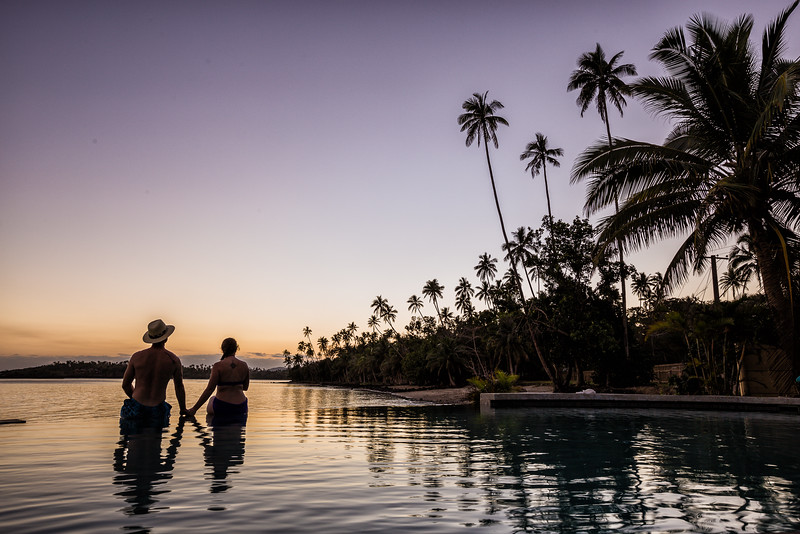
December in Fiji
Although December is well into the wet season now, and temperatures are high and the humidity is at times unbearable, Fiji experiences a mini high season, especially over Christmas.
Holiday-makers flock here looking for a hot and sunny Christmas or a tropical getaway over the holiday period and prices skyrocket.
There are lots of rain showers, but actually, the wet weather isn’t too bad in December, which is why Fiji is still so popular a choice.
The warm waters are welcoming for snorkelers and divers and you can book a beachfront resort to enjoy the cool ocean breezes.
Our Top Recommended Tours:
- Wanderlands Fiji Tour – 8 days
- Fiji Expedition Tour – 9 days
- Fiji Viti Levu Island Experience – 6 days
- Community Development Expedition in Fiji – 14 days
More on Fiji:
- 16 Bucket List Things to do in Fiji
- 9 Adventures You Cannot Miss in Pacific Harbour, Fiji
- Fiji Honeymoon: Ultimate Romance and Adventure Guide
- Cloud 9 Fiji: Is It Worth Visiting?
- 11 Epic Day Trips from Denarau, Fiji
- 10 Epic Things to Do in Taveuni, Fiji (Plus Planning Tips)
- 7 Reasons to Stay at the Koro Sun Resort and Rainforest Spa in Fiji
- 16 Exotic Islands That Are Worth Adding to Your Bucket List
Did you like this story? Share it!
Travel planning resources, about lina stock.
Lina is an award-winning photographer and writer that has been exploring the world since 2001. She has traveled to 100 countries on all 7 continents. Member: SATW, NATJA, ATTA, ITWA
Leave a Comment Cancel reply

Fiji Travel Guide
Courtesy of Bruce Hood | Getty Images

Best Times To Visit Fiji
The best time to go to Fiji is whenever you have the chance. This is Fiji we're talking about! Temperatures stay pretty constant through the year, with highs resting in the 80s; however, from November to April, you might have to contend with some tropical storms. For the Fiji experience that you've always dreamed of, the best time to visit is from July to September, but you will have to contend with sky-high prices as this is also peak season. The shoulder seasons are short – May to June and October – but they're nice times to visit since heavy crowds will either have just departed or have yet to descend.
Weather in Fiji
Data sourced from the National Climatic Data Center
Find Flight and Hotel Deals
Navigate forward to interact with the calendar and select a date. Press the question mark key to get the keyboard shortcuts for changing dates.
Navigate backward to interact with the calendar and select a date. Press the question mark key to get the keyboard shortcuts for changing dates.
Popular Times to Visit Fiji
Tourism volume is estimated based on in-market destination search query interest from Google and on travel.usnews.com in 2015-2016. Hotel prices are sourced from a sample of U.S. News Best Hotels rates through 2015-2016.
Explore More of Fiji

Things To Do

Best Hotels

You might also like

Cayman Islands
# 3 in Best Family Vacations in the Caribbean

# 1 in Best Places to Visit in Asia

# 1 in Best Places to Visit in Australia and The Pacific in 2023
If you make a purchase from our site, we may earn a commission. This does not affect the quality or independence of our editorial content.
Recommended
The 50 Best Hotels in the USA 2024
Christina Maggitas February 6, 2024

The 32 Most Famous Landmarks in the World
Gwen Pratesi|Timothy J. Forster February 1, 2024

9 Top All-Inclusive Resorts in Florida for 2024
Gwen Pratesi|Amanda Norcross January 5, 2024

24 Top All-Inclusive Resorts in the U.S. for 2024
Erin Evans January 4, 2024

26 Top Adults-Only All-Inclusive Resorts for 2024
Zach Watson December 28, 2023

Solo Vacations: The 36 Best Places to Travel Alone in 2024
Lyn Mettler|Erin Vasta December 22, 2023

26 Cheap Beach Vacations for Travelers on a Budget
Kyle McCarthy|Sharael Kolberg December 4, 2023

The 50 Most Beautiful White Sand Beaches in the World
Holly Johnson December 1, 2023

The 26 Best Zoos in the U.S.
Rachael Hood November 16, 2023

44 Cheap Tropical Vacations That Feel Expensive
Holly Johnson|Alissa Grisler November 10, 2023

- facebook-official
- pinterest-circled
- youtube-play
The Best Time to Visit Fiji: 🗓️ A Month-by-Month Guide
When to visit fiji.
As cliché as it might sound, there’s never really a “bad” time to visit Fiji . It all depends on how important the weather, crowds and the cost of travel is to you. Fiji is a tropical country that experiences warm temperatures year-round. It only really experiences two distinct seasons: the dry season (winter) and the wet season (summer), which brings with them a set of conditions that makes certain activities, like surfing and manta ray swimming, better to do. There are also, of course, certain events and festivals that only occur at particular times of the year that you might want to coincide your trip with. We go through all of these factors and more in this guide to the best time to visit Fiji!
The Best Months to Visit Fiji
For those who have the privilege of choosing any month to travel, the shoulder season months are the best months to visit Fiji (see the “ When is the High and Low Season in Fiji? ” section below).
To narrow it down further, May , October and November are the best months to visit Fiji as they have warm temperatures leading into (or out of) the wet season yet less rainfall than the wet season. May and October are also when you can do seasonal activities, such as surfing and swimming with manta rays.
When is the High and Low Season in Fiji?
I.e. when is the peak, shoulder and off-season in fiji.
In terms of the tourist seasons, Fiji experiences three: a high season, a low season and shoulder seasons in between.
High Season (June – September & December)
The high season falls during the southern hemisphere’s winter season. This is when the New Zealand and Australia school holidays are, coinciding with it being the coldest months in these two countries where most travellers to Fiji are visiting from. Being in the middle of the dry season, it’s also a favourable time for travellers wanting to avoid the rain as much as possible while temperatures are warm. December is also included in the high season months, as there is a lot of travel to the country during the Christmas period for locals and visitors alike.
Low Season (January – April)
After the Christmas holidays, the tourism industry in Fiji is at its quietest in terms of tourist numbers. Although temperatures are at their highest, the higher likelihood of rain puts some travellers off. January to April, however, is a slightly more popular time for travellers from the northern hemisphere escaping their winter. Check out more benefits of visiting in the least-popular season in the 10 Reasons to Travel in the Low Season in Fiji .
Shoulder Seasons (May, October & November)
The shoulder seasons are all the months in-between the low and high seasons. These months tend to experience the best of both seasons: weather that’s warm but not too humid nor too cold, less rain than in the wet season yet fewer tourists than in the high season, etc. In our opinion, the shoulder seasons are the best time to travel to Fiji.
The Best Time to Visit Fiji for the Weather
Weather plays a huge role in many of our minds for determining the best time to visit Fiji. There are two seasons you need to be aware of: the dry/winter season (May to October) and the wet/summer season (November to April).
Skip the next bit and just check out Fiji Weather, Seasons & Climate + Weather by Month to get a full rundown of the weather. Otherwise here’s a quick overview of Fiji’s weather month by month.
Fiji Weather in the Dry Season (Winter)
Months : May, June, July, August, September and October Tourist Season : High season Temperature : 19-29 ° C (66-84 ° F) Rainfall/month : 70-150 mm (2.8-6 in)
About the Dry Season in Fiji
The dry season is the most appealing time for most holidaymakers to come to Fiji, due to this season typically having the least amount of rainfall and the most comfortable temperatures coinciding with cold winters in the nearby countries of Australia and New Zealand. That’s not to say that it doesn’t rain at all, so it’s best to set expectations right to avoid disappointment.
Because it is the most popular time to visit Fiji, airfares and resort rates tend to be at their highest, especially from June to August . Later in the season is when you will start to see fares decreasing and the tourist numbers dwindling.
The Best Places to Visit in the Dry Season
There’s not really a “bad” place to visit in the dry season in Fiji. Nevertheless, here are a few suggestions…
- Coral Coast
- Lomaiviti Islands
- Yasawa Islands
For more great places to visit, check out The Best Islands to Visit in Fiji .
Weather in May
Temperature : 28°C / 82°F in the day, 21°C / 70°F at night Sea temperature : 27°C / 81°F Rainfall : 142 mm / 5.6 in
See the Fiji Weather in May for a full guide.
Why Visit in May
- The surf season kicks in with consistent southerly swells
- The manta rays start appearing in the Yasawa Islands for amazing snorkelling trips
- Experience the idyllic winter weather before the tourist crowds arrive.
Weather in June
Temperature : 27°C / 81°F in the day, 20°C / 68°F at night Sea temperature : 27°C / 81°F Rainfall : 113 mm / 4.4 in
See the Fiji Weather in June for a full guide.
Why Visit in June
- Windsurfing conditions are at their best, especially around Nananu-i-Ra Island on the Suncoast
- Escape the winter of the lower Southern Hemisphere
- Fishing is good for wahoo, GT and sailfish.
Weather in July
Temperature : 26°C / 78°F in the day, 20°C / 68°F at night Sea temperature : 26°C / 79°F Rainfall : 86 mm / 3.4 in
See the Fiji Weather in July for a full guide.
Why Visit in July
- It’s the driest time to visit some of Fiji’s “wettest” areas like the rainforests of Taveuni
- Temperatures are comfortable to hit the hiking trails of Viti Levu’s interior
- For families, it likely coincides with the school holidays.
Weather in August
Temperature : 26 ° C / 78°F in the day, 19 ° C / 66°F at night Sea temperature : 25°C / 77°F Rainfall : 103 mm / 4.1 in
See the Fiji Weather in August for a full guide.
Why Visit in August
- See firewalkers in the Southern Indian Fire Walking Festival
- Go scuba diving or snorkelling in clear waters
- Join in on the manta ray swimming in the Yasawas .
Weather in September
Temperature : 27 ° C / 81°F in the day, 20 ° C / 68°F at night Sea temperature : 25°C / 77°F Rainfall : 123 mm / 4.8 in
See the Fiji Weather in September for a full guide.
Why Visit in September
- Swim with manta rays
- Surf the big reef breaks
- Check out Regatta Week at Musket Cove Marina on Malolo Lailai Island.
Weather in October
Temperature : 27 ° C / 81°F in the day, 21 ° C / 69°F at night Sea temperature : 26°C / 79°F Rainfall : 152 mm / 6 in
See the Fiji Weather in October for a full guide.
Why Visit in October
- See the festivities of Diwali Festival of Lights
- Celebrate all things Fiji in Fiji Week
- Enjoy the dry weather without the crowds.
Fiji Weather in the Wet Season (Summer)
Months : November, December, January, February, March and April Tourist Season : Low season (except Christmas & New Year) Temperature : 22-33 ° C (72-91 ° F) Rainfall/month : 180-310 mm (2.8-6 in)
About the Wet Season in Fiji
The “Wet Season” or the “Rainy Season” can’t help but conjure up damp and dreary images ruining your holiday in paradise, but it sounds worse than it actually is. Sure, Fiji’s summer season is the wettest and most humid time of the year to visit Fiji, but rainfall patterns tend to be short, heavy and soon change back to sunshine.
Because of this higher rainfall rate than in winter, the wet season is the quietest time to visit Fiji, resulting in fewer crowds, lower airfares and resort rates. That’s all with the exception of the December holiday season, where things get more expensive and busy around Christmas and New Year .
The Best Places to Visit in the Wet Season
If you’re looking for the driest climates in Fiji, these are the island groups and regions of Viti Levu to consider travelling to.
- Mamanuca Islands
- Nadi , Viti Levu
- Denarau , Viti Levu
- The Suncoast , Viti Levu
Weather in November
Temperature : 29 ° C / 84°F in the day, 21 ° C / 69°F at night Sea temperature : 27°C / 81°F Rainfall : 181 mm / 7.1 in
See Fiji Weather in November for a full guide.
Why Visit in November
- Check out the Balolo Rising celebrations
- Game fishing kicks off for blue marlin, black marlin, yellowfin tuna and more
- Get reasonable rates of airfares and resorts for the shoulder season.
Weather in December
Temperature : 29 ° C / 84°F in the day, 22 ° C / 72°F at night Sea temperature : 28°C / 82°F Rainfall : 226 mm / 8.9 in
See Fiji Weather in December for a full guide.
Why Visit in December
- Check out the holiday celebrations for Christmas
- It’s usually when you can get time off work
- Six weeks of partying, singing and dancing kick off from the beginning of December in the Rotuma islands, if you’re lucky enough to be able to get there…
Weather in January
Temperature : 30 ° C / 86°F in the day, 23 ° C / 73°F at night Sea temperature : 28°C / 82°F Rainfall : 308 mm / 12.1 in
See Fiji Weather in January for a full guide.
Why Visit in January
- Check out how Fiji celebrates the New Year
- Resorts are quiet outside of the holiday period
- Airfares start to decrease in mid-January.
Weather in February
Temperature : 33 ° C / 91°F in the day, 21 ° C / 70°F at night Sea temperature : 29°C / 84°F Rainfall : 293 mm / 11.5 in
See Fiji Weather in February for a full guide.
Why Visit in February
- You often feel like you have the whole place to yourself
- Sipping cocktails and getting in the water is more refreshing
- Opportunity to experience Holi – the Festival of Colours.
Weather in March
Temperature : 31 ° C / 89°F in the day, 23 ° C / 73°F at night Sea temperature : 29°C / 84°F Rainfall : 356 mm / 14 in
See Fiji Weather in March for a full guide.
Why Visit in March
- It’s quiet, so you can enjoy the serenity of “ Fiji time “
- It’s cheap, resort rates and airfares are usually at the lowest
- It’s fun to watch a tropical storm!
Weather in April
Temperature : 31 ° C / 89°F in the day, 20 ° C / 68°F at night Sea temperature : 28°C / 82°F Rainfall : 288 mm / 11.3 in
See Fiji Weather in April for a full guide.
Why Visit in April
- Those holiday costs are still going to be affordable
- This is a good time to experience some of Fiji’s largest and most luxurious resorts without the crowds.
Again, head to our Fiji Weather, Seasons & Climate + Weather by Month for a complete weather and climate rundown.
The Best Time to Visit Fiji for Seasonal Activities
If you’re visiting Fiji with the intention of doing a particular activity, then be sure to research the best seasons to do your chosen activity. Scuba diving, surfing, fishing and wildlife activities all have “seasonal” elements.
The Best Time for Scuba Diving in Fiji
In terms of visibility, the winter season a.k.a the “dry season” is considered the best time for scuba diving in Fiji. June to November experiences much less precipitation than the rest of the year, which can improve visibility. Visibility in the winter season can be 30-50 m (98-165 ft). See how this compares to scuba diving in summer in When is the Best Time to Dive in Fiji?
The Best Time to Surf in Fiji
There’s never really a bad time to surf in Fiji but there are better months for different skill levels. In short, the best months to surf in Fiji are for:
- Beginners – November to May
- Intermediates – March to April and September to October
- Experts – May to August.
Be sure to check out our guide, The Best Time to Surf in Fiji , for much more tips.
The Best Time to See Wildlife in Fiji
One of the most popular seasonal wildlife activities is swimming with manta rays , which can only be done between May and October . If you’re visiting Fiji to see other wildlife, then the wildlife seasons are as follows:
- Manta ray season : May to October
- Whale season : June to October
- Turtle season : All year round
- Bird season : All year round
- Shark season : All year round
- Dolphin season : All year round.
For more details, head over to The Best Seasons for Seeing Wildlife in Fiji .
The Best Time for Fishing in Fiji
Fishing can be enjoyed all year round in Fiji, but particular game species have better seasons than others. Aim for the following months for your targeted species:
- Blue Marlin : November to January
- Black Marlin : November and December
- Sailfish : June to September
- Yellowfin Tuna : November to March
- Dogtooth Tuna : October to March
- Skipjack : January to February and August to October
- Mahimahi : October to January
- Spanish Mackerel : October to December
- Wahoo : June to September
- Giant Trevally : June to September.
Again, we have much more advice that you won’t want to miss in What is the Best Time of Year for Fishing in Fiji .
Finally, if you’re getting married in Fiji, then we have a guide for that too. Check it out in When is the Best Time to Plan a Wedding in Fiji?
The Cheapest Time to Visit Fiji
If you’re on a bit of a budget, travelling in the right season can help reduce some costs.
The Best Time to Visit Fiji for Cheap Accommodation
The biggest saving you can make is on the nightly rate of accommodation if you stay during the shoulder or low season – usually anywhere between November and March . Not only will you see prices change across the months on platforms like Booking.com and Expedia , but many accommodations offer special low-season deals on their websites. We’ve seen the difference between low and high season rates as much as FJ$500 per night! Plus, low-season deals such as “stay five nights, pay for four” are common in the low season.
The Best Time to Fly to Fiji
The best time to fly to Fiji for cheaper flights is late-January to May if coming from the southern hemisphere – typically for the direct flights we list in Which Airlines Fly Directly to Fiji? If coming from the northern hemisphere, you’re more likely to find cheaper airfares to Fiji between September to November or March to May . All of this is explained in more detail in How to Book a Cheap Flight to Fiji .
In Conclusion: 4 Things to Consider for Choosing a Time to Visit Fiji
As you can see, the best time to visit Fiji is different for everyone. In conclusion, choose the right season that appeals to you based on the four main aspects to consider when choosing the best season to travel Fiji:
1. The Weather
Let’s not beat around the bush. You’re not planning a tropical getaway to be cold and miserable. Luckily, Fiji is warm all year round, but there are seasons with higher rainfall and humidity that you might want to think about before you book your flight.
2. The Crowds
Fiji is a country that never really feels too “crowded”, with the exception of the largest resorts in the high season… So if you want to really escape from it all, consider choosing a less busy tourist season to visit Fiji. Alternatively, there are plenty of remote boutique island resorts which always feel quiet.
3. The Cost
The resorts, airlines and even some activity providers know when most tourists want to visit Fiji, and they are not afraid to take advantage of this with their prices. If you’re on a budget , you might want to consider visiting Fiji in its low season.
4. The Activities
While most activities can be done year-round, there are times of the year that are better for certain activities than others. Plus, there are a few seasonal activities too, such as swimming with manta rays, which is only available between May and October. There are also distinct seasons for fishing and for surfing.
Frequently Asked Questions About the Best Time to Visit Fiji
Still haven’t had your question about the best time to visit Fiji answered yet? Perhaps these frequently asked questions about the best time to visit Fiji will help!
What is considered the best time to visit
In general, the best time to visit Fiji is during its dry season, from May to October. During these months, the weather is cooler, less humid, and there is less rainfall, making it ideal for outdoor activities and exploring the islands. This period also offers the clearest waters for snorkelling and diving.
But for our personal opinion for the best time to visit Fiji, we consider the fringes of the dry season, May and October, to be the best months to visit Fiji to enjoy the benefits of the weather while avoiding the crowds.
Are there any advantages to visiting Fiji during the wet season?
Visiting Fiji during the wet season (November to April) can have its advantages, such as fewer tourists, lower prices and more vibrant landscapes thanks to the frequent rain showers. While there’s a higher chance of rain and it’s the cyclone season, there are still many sunny days, and the water temperatures remain warm for swimming and water sports.
How does the peak tourist season affect travel to Fiji?
The peak tourist season in Fiji, which coincides with the dry season from May to October, sees the highest number of visitors. This can lead to higher prices for flights, accommodations and activities. However, it also means more events and festivals, making it a lively time to experience the local culture. Booking in advance is recommended to secure the best deals and availability.
What is the off-peak season in Fiji, and why might it appeal to some travellers?
The off-peak season in Fiji is during the wet season, from November to April. This season appeals to travellers looking for lower prices and fewer crowds. It’s an excellent time for those interested in experiencing the lushness of Fiji’s natural environment at its peak, as well as for travellers willing to be flexible with their plans due to the unpredictable weather.
Can I enjoy water activities in Fiji outside of the dry season?
Yes, water activities can be enjoyed in Fiji year-round. Even during the wet season, the sea temperatures are warm, and there are many sunny days between the rain showers, allowing for swimming, snorkelling and diving. However, it’s always important to check local weather conditions and heed safety advice, especially during the cyclone season .
What months offer the best balance between good weather and avoiding crowds?
The shoulder months of the dry season, such as May and October, offer a good balance between enjoying the favourable weather conditions and avoiding the peak tourist crowds. These months provide pleasant weather, less crowded attractions, and often better deals on accommodations and activities.
Are there any specific times to avoid travelling to Fiji?
If you prefer to avoid the risk of cyclones and the heaviest rainfall, it might be best to avoid the late wet season months of February and March. Additionally, if you’re looking to steer clear of higher prices and more significant crowds, consider skipping the peak months of July and August, which coincide with Australian and New Zealand school holidays.
What is the best month to go to Fiji?
November is the best month to go to Fiji by having warm and dry weather yet fewer tourists. There also tends to be good travel deals during this month.
What is the hottest month in Fiji?
The hottest months in Fiji are typically January or February.
How bad is the wet season in Fiji?
Some years have been worse than others, with some wet seasons bringing cyclones. Find out more in How to Prepare for a Cyclone in Fiji .
Does Fiji have a hurricane season?
Yes, the hurricane season is otherwise known as the cyclone season, which runs from November to April. However, the greatest risk of cyclones occurring is in December, January and February.
More About the Best Time to Visit Fiji
That’s it for our guide to the best time to visit Fiji but by no means the end of our advice! Check out the following guides for more tips concerning the best time to visit Fiji and when to travel:
- What is the Weather Like in Fiji?
- Public Holidays in Fiji (& Other Important Dates)
- Do You Need a Visa to Visit Fiji?
For the best durations of time to visit Fiji, take a look at our compilation of itineraries: The Best Fiji Itineraries for 2 Weeks , The Best Fiji Itineraries for 1 Week , The Best Fiji Itineraries for 5 Days and The Best Fiji Itineraries for a Weekend .
This article was reviewed and published by Robin, the co-founder of Fiji Pocket Guide. He has lived, worked and travelled across 16 different countries before settling in the South Pacific, so he knows a thing or two about planning the perfect trip in this corner of the world. Robin is also the co-founder of several other South Pacific travel guides and is a regular host of webinars with the South Pacific Tourism Organisation.
Was this article useful?
Related posts, will your phone work in fiji, the best sim card in fiji for travellers, 5 best travel adapters for fiji 🔌, visiting fiji: main island vs. outer islands, fiji electrical outlets & power plugs ⚡, 20 essentials you need to pack for fiji 🤿, recommended for you, when is the best time to plan a wedding in fiji, how to get internet in fiji, accommodation, destinations, things to do, connect with us.
To contact us directly, use our contact page.
Travel Tips
Welcome/Bula! By using this website you agree to our Privacy Policy and terms of use within it which includes sponsored posts and affiliate links.
Connect with us
Welcome/Bula! By using this website you agree to our Privacy Policy and the terms of use within it.
© 2024 Fiji Pocket Guide. Contact – Disclaimer
What you need to know before going to Fiji

Oct 17, 2023 • 7 min read
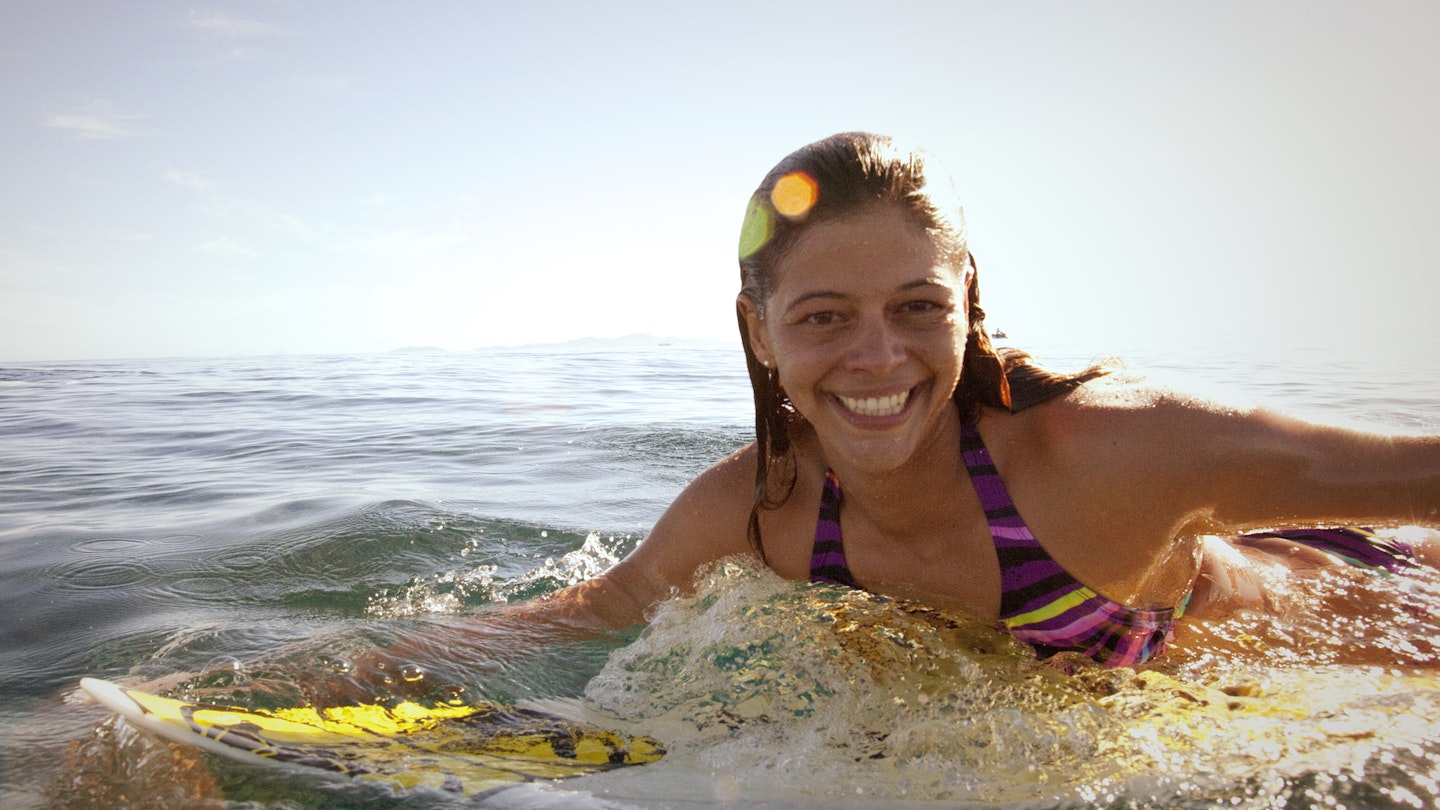
Read on for our best local tips before you touch down in the Pacific Island paradise, Fiji © Justin Lewis / Getty Images
With 333 islands making up this South Pacific dreamscape, it would take a lifetime to truly explore every corner of Fiji . For the past six years, I’ve been living in Fiji’s capital city of Suva and have made many travel mistakes and cultural snafus so you don’t have to.
From which island to choose to kava drinking etiquette to packing essentials, these are the dos and don’ts of traveling to Fiji.
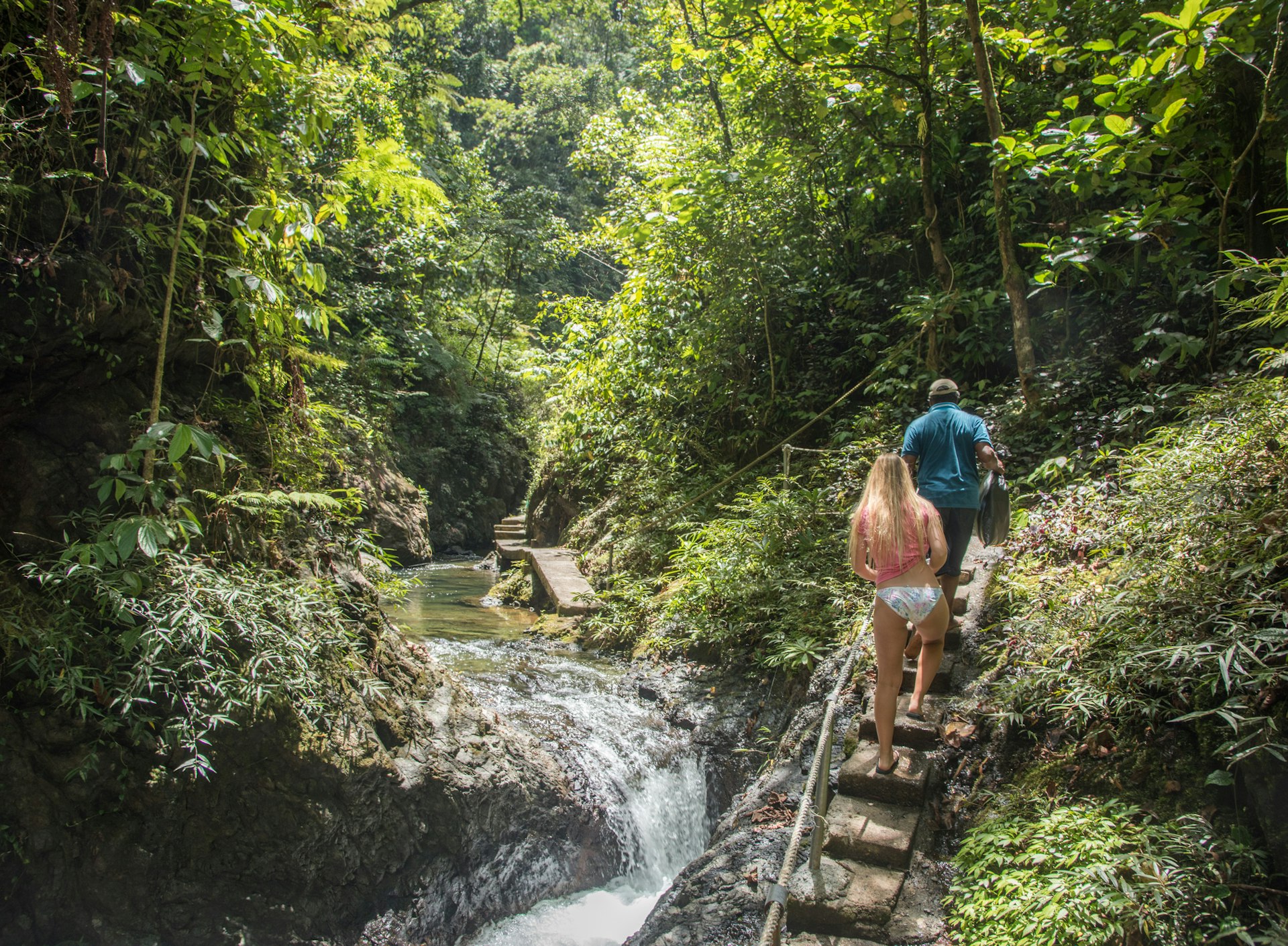
1. What do I need to know before going to Fiji?
No two islands are exactly alike in Fiji and it’s worth researching the main ones before you arrive.
If you’re limited on time and want to see some of the country’s best beaches, spend your time island-hopping around the Yasawa and Mamanuca Islands . For waterfall-laden hiking trails and technicolor coral reefs, Taveuni awaits. Viti Levu , the main island, is home to Fiji’s capital city of Suva and hosts some of Fiji’s best-value resorts, cultural activities, hiking, and most of Fiji’s population.
To stay somewhere truly novel, try Beqa, which is famous for its firewalkers and has a strong cultural connection to the bull sharks that cruise around its surrounding reefs. Vanua Levu , Fiji’s second largest island, hosts the quaint town of Savusavu, a hub for scuba diving, freediving and laidback living.
If you’re keen to splash out on a five-star stay, take your pick of private island resorts – accessible by private helicopter, seaplane or boat – that offer an air of exclusivity not easily found elsewhere. Some top recommendations include Kokomo Private Island Fiji , Vomo Island Resort , and Castaway Island Resort .
2. Stay at small resorts and homestays for a Fijian experience
As a rule, the larger the resort, the less Fijian your trip may feel. Most of the international chain resorts are found on Denarau Island , a manmade island that makes up for its lackluster beach with plenty of pools, bars and restaurants.
Smaller resorts and homestays tend to be decorated with locally made art, offer guided trips to nearby villages and serve Fijian fare. Once staff members knock off for the day, they’re likely to invite you for a round or two of kava. If you want an intimate stay, Finding Islands Tours hosts immersive cultural trips on land and sea where you’ll learn about traditional ways of life and interesting facts about Fiji.

3. Schedule your outdoor adventures towards the beginning of your trip
Life in the tropics means that no matter the weather forecast, you could experience rain or bluebird skies (or both) on any given day. Plan your hikes, scuba dives, snorkel tours, sailing trips and other outdoor adventures towards the beginning of your stay. That way, you’ll have time to reschedule should the weather interfere with your plans.
4. Come for at least a week – the longer the better
If you plan to visit just one or two areas of Fiji, a week is enough time to have a balance of sightseeing and relaxing. If you hope to see more, you’ll lose at least half a day in transit whenever you island hop. There’s no way to see everything on one visit, so it’s best to slow down and pick just a few places to stay. If you’d prefer to do more rather than less, embark on day trips from your accommodation rather than changing sleeping spots every other day.
5. Go all-out when it comes to packing floral patterns and color
Go ahead and pack the floral button-up shirt or dress hiding in the back of your closet. Fijians tend to dress in bright, bold colors, often covered with Pacific Island patterns or tropical prints. A nice pair of sandals and a cheerful outfit will carry you from casual beach bars to fine-dining venues to the streets of Suva. If your outfit covers your shoulders and knees, it’ll also suit for village and church visits.
6. The buses and taxis are affordable on the main islands
Save money traveling around Viti Levu by riding the bus. The large buses connecting Nadi International Airport have space for luggage storage and are air-conditioned; Sunbeam and Pacific offer express services between Suva and Nadi. Public buses tend to be even cheaper but stop frequently and lack air conditioning. Taxis are metered, and generally affordable, but are only available on Fiji’s larger islands.

7. Get ready to embrace the bula spirit
Wherever you go, you’re likely to hear a hearty “ bula !” from those around you. Fijians are famous for their hospitality and generally forgiving of etiquette blunders. A few Fijian words will carry you through many social situations. Bula means "hello," vinaka means "thank you" and moce (pronounced "mo-they") means "see you later."
If you ask a Fijian a question and they raise their eyebrows, you can take the answer as a yes. The word "set" is usually used as "okay." If you hear someone blowing kisses in public, it’s likely not a catcall – Fijians use this sound to grab attention from a person they know.
8. Don’t enter a village empty-handed
Whenever you enter a village, it’s customary to bring a sevusevu (gift). Traditionally, this gift is yaqona or kava , a pepper root that is ground into a fine powder and drunk from a large wooden bowl called a tanoa . Depending on the reason for your visit, the village representative might invite you to drink kava with the community or simply grant you access to their land if you’ve come to go on a hike, visit a waterfall, or simply want to take a tour.
9. Avoid wearing anything on your head whenever you enter a village
When you dress to enter a village, both men and women are typically expected to wear a sulu (sarong), wrapped around their waists and a shirt that covers the shoulders. Wearing anything on your head, like sunglasses or a hat, is considered impolite. If you’re bringing a backpack, carry it like a purse in the nook of your arm rather than on your back. Avoid lingering in doorways for too long once you’ve been invited into a room.
10. Don’t be afraid to ask for etiquette tips on drinking kava from a local
If you are invited to drink kava in a village, it will likely be with the head of the village and other members of the community and served in the community hall. When you enter, take off your shoes at the door and sit cross-legged on the floor near your village representative, who is usually someone assigned to host you for the experience. Kava is poured from a large bowl and served in a coconut shell, called a bilo .
It’s customary to accept the first bilo of kava offered to you. Every village is slightly different when it comes to how they drink kava : some clap before drinking, some say “ bula ” and clap after drinking, and some receive the bilo with both hands instead of one. When in doubt, ask the Fijian you’re sitting near. It’s okay to politely skip rounds and request "low tide" (a half-full coconut shell) if you wish to pace yourself.

11. Rugby is the sport of choice
There’s no sport more beloved than rugby in Fiji. After work and on weekends, rugby pitches are abuzz with activity, and making small talk about the sport is a surefire way to gain fast friends. Even if you don’t know the ins and outs of rugby playing, it’s worth attending a game or pulling up a chair to watch a televised match at a bar.
12. Not all tap water is drinkable
The tap water is typically potable in Suva, and most hotels provide filtered drinking water. Elsewhere, you’ll want to bring your own bottled water or carry a filter, like a Lifestraw, to drink from.
13. Take extra care in the cities after dark
When it comes to safety in Fiji, follow the same precautions you’d take in any major city. Stow your belongings out of sight and keep your wits about you. Crime against tourists is low in Fiji and typically involves theft. Avoid going out drinking alone at night and take extra care around the bars near Nadi and Suva late at night as this is where most muggings and assaults occur.
14. Contact the police, hotel, or head of the village should things go wrong
On the major islands of Fiji, contact the police (911 for emergencies, and 917 for police services) for assistance. On Fiji’s outer islands, there may not be an official police posting. In this case, it’s best to seek help from your accommodation or the head of the village, called the turaga ni koro.
Explore related stories
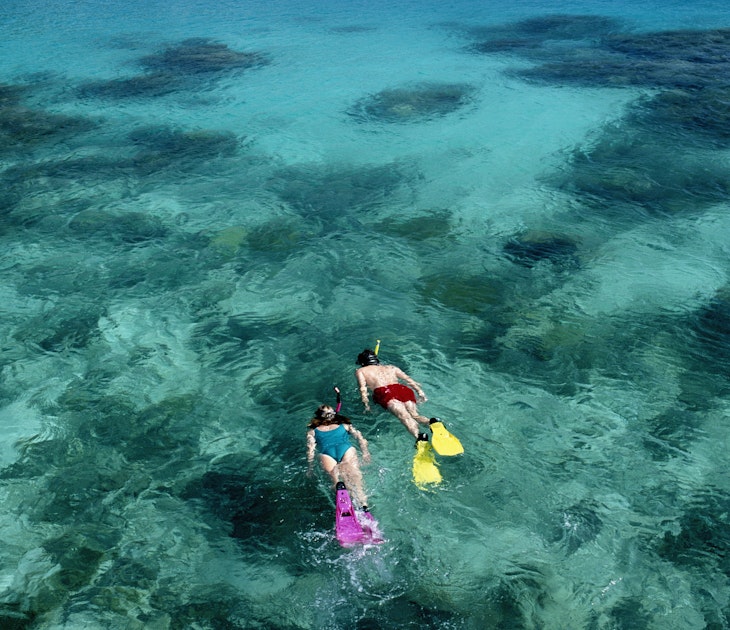
Budget Travel
Oct 19, 2023 • 7 min read
If you’re visiting Fiji and don’t want to break the bank, here’s how to save money on food, accommodation, day tours and transportation.
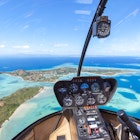
Oct 14, 2023 • 4 min read
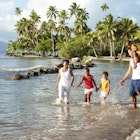
Oct 13, 2023 • 5 min read
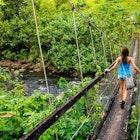
Oct 4, 2023 • 6 min read
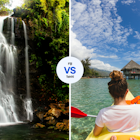
Jun 28, 2023 • 6 min read

Feb 18, 2022 • 6 min read
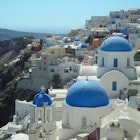
Jul 30, 2020 • 9 min read
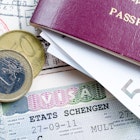
Dec 11, 2019 • 5 min read
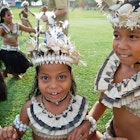
Oct 12, 2023 • 3 min read

Oct 12, 2023 • 7 min read
- Best time to visit Fiji
Book your individual trip , stress-free with local travel experts
- roughguides.com
- Australasia
- Travel guide
- Itineraries
- Travel Advice
- Accommodation
The best time to visit Fiji, and the most comfortable, is during the dry season between May and October when temperatures hover around 25°C by day and drop to a pleasant 19–20°C at night. At this time of year the southerly trade winds bring cool breezes off the sea and sometimes blustery conditions on the south and eastern coasts.
Festivals and Holidays in Fiji
Coinciding with the southern hemisphere winter, the dry season is also the busiest time to visit, with holiday-makers from New Zealand and Australia flocking to Fiji to escape the cold. Hotels in the popular resort areas are often booked out months in advance, especially around the school holidays between June and July.
The summer months from November to April are known as the wet season when temperatures rise to a fairly constant 31°C but with greatly increased humidity. Rainfall during these months is substantially higher, although most of it falls in sudden torrential tropical downpours , usually in the mid-afternoon. Mornings and late afternoons generally remain sunny and the sea is often beautifully calm – a great time for scuba divers.
During the wet season the islands are lush with vegetation and waterfalls are at their most impressive; however, note that walking trails can get slippery and dirt roads impassable. Low pressure between December and April sometimes brings stormy weather from the northwest lasting around five days. In extreme cases tropical cyclones can develop. Direct hits on the islands are infrequent and damage quite localized.
Another aspect of Fiji’s weather are the microclimates found on the leeward and windward sides of the main islands. For example, Nadi, on the dry west side of Viti Levu, has reliably sunny weather while Suva, on the opposite side of the island but barely 100km away is often drenched by showers rolling in off the ocean.
Ethnic Fijians tend to express their culture in day-to-day life rather than through specific festivals. By contrast, Fiji-Indians celebrate most events with gusto, whether it’s a local wedding, religious festival or one of the many fascinating firewalking ceremonies held around the country. The country enjoys twelve public holidays; the most likely of these to feature traditional dance and other public displays are Ratu Lala Sukuna Day on May 30 and Fiji Day on October 10.
The main towns of Nadi, Lautoka and Suva each have a commercially driven week-long festival (see calendar) with fairground rides, food stalls, parades, beauty-queen crowning and an alternative Priscilla night when gays and transvestites take centre stage. The town festivals held in Levuka and Savusavu are more culturally inclined.
Indian festivals are commonly celebrated in public and with great fanfare, with Diwali the biggest and loudest for Hindus and Eid a serious affair for Muslims – towns with a large Fiji-Indian population are naturally the best, especially Lautoka and Tavua on Vanua Levu or Labasa on Vanua Levu. There are over forty Indian firewalking ceremonies held around the country between April and September. These are fascinating and very spiritual experiences – ask around at local temples to find out where one is being held. The two largest are listed here.
Coconut Tree Climbing Competition
1 Jan. Held at Denarau Island, this zany event tests the skills of Fiji’s most daring personalities.
Thaipusam Festival
End Jan with main day being the last Sat. This ten-day Hindu festival at the Nadi temple has devotees piercing their bodies and dragging chariots using meat hooks.
One day after full moon, usually early March. Hindu festival celebrated with throwing of coloured turmeric powder, feasting and the singing of religious poems.
Indian fire walking
First Sun after the full moon. Held at the Malolo Temple south of Nadi, with devotees walking across a pit of burning wood embers.
13 May. Dance and feasting amongst Rotumans throughout Fiji to celebrate Rotuma’s cession to Fiji and Britain.
Ratu Sir Lala Sukuna Day
30 May. Public holiday remembering statesman Ratu Sukuna, sometimes with organized dance and fundraising events in urban centres, but generally a family holiday with lovo .
Bula Festival
Mid to end of the month ( t 670 0133). Nadi’s yearly week-long celebrations at Koroivoli Park.
fijiswims.com . Three ocean races from 1km to 18km centred around Beachcomber Island in the Mamanucas.
Indian firewalking
First Sun after the full moon. The largest of the Fiji-Indian firewalking event is held at the Mahadavi Temple on Howell Rd, Suva.
Hibiscus Festival
Mid-Aug, coinciding with school holidays ( t 331 1168). Suva’s yearly week-long celebrations at Albert Park.
Fiji Regatta Week
Musket Cove Marina, Mamanucas ( w musketcovefiji.com ). Pirate trips, races (in small hobie-cat boats) and general yachty hoo-ra.
Sugar Festival
Usually the first week of Sept ( t 666 8010). Lautoka’s yearly week-long celebrations at Churchill Park.
10 Oct. Public holiday celebrating the day when Fiji was both ceded to Britain (1874) and given independence (1970). Dance performances are sometimes held in Albert Park, Suva.
Back to Levuka Week
10 Oct. Traditional re-enactments of cession, art displays and agricultural shows.
Late Oct to mid-Nov, depending on lunar calendar. Fireworks and lights are the star attractions of this Hindu celebration.
Rising of the Balolo
Mid-Oct to mid-Nov, depending on moon. Naturally occurring event at a dozen or more coral reefs around the islands – the tail of a mysterious worm rises to the surface, is collected and eaten as a delicacy.
Savusavu Music Festival
fiji-savusavu.com . Local musicians and dance troupes perform throughout this week-long event.
1 Dec to mid-Jan. Door-to-door dancing and merry-making on the outer island of Rotuma, known as fara . Sometimes indulged in by Rotumans living in urban centres, particularly Suva.
The Rough Guides to Fiji and related travel guides
In-depth, easy-to-use travel guides filled with expert advice.

Travel advice for Fiji
From travel safety to visa requirements, discover the best tips for traveling to Fiji
- Culture and Etiquette in Fiji
- Eating and drinking in Fiji
- Travel Health Fiji
- Sports and Outdoor activities in Fiji
- Travel Tips Fiji for planning and on the go
- How to get to Fiji
- Getting around Fiji: Transportation Tips
- Shopping tips for Fiji
- Travelling with children in Fiji
Find even more inspiration here

- Travel Tips

written by Andy Turner
updated 16.05.2021
Ready to travel and discover Fiji?
Get support from our local experts for stress-free planning & worry-free travels.
- Where to stay
- Travel advice
visitor information

GETTING aROUND
Fiji airways.

EXPAT GUIDE

ENVIRONMENT
Flora and fauna.

HISTORY & cULTURE

INSPIRATION
Wellness retreats, water activities.

NADI TOWN & DENARAU ISLAND
Denarau island.

CORAL COAST & PACIFIC HARBOUR
Coral coast, pacific harbour.

LAUTOKA CITY & SUNCOAST
Lautoka city.

Suva, the Capital of Fiji, was developed in the late 1800s and retains much of the character of the colonial period. Its many attractions include shopping, restaurants, markets, museums, and nightclubs. You can enjoy a walk around the central city area, which will uncover numerous surprises. A leisurely stroll down Victoria Parade you’ll see the blending of traditional, early 20th-century South Pacific buildings juxtaposed with modern high-rise structures. Towards the end of the Parade are the Government Buildings, which open onto Albert Park, Thurston Gardens, and Suva Point, guiding you to the architecturally striking Parliament Buildings.

YASAWA & MAMANUCA ISLANDS
Yasawa islands, mamanuca islands.
The Mamanuca Group – a volcanic archipelago of around 20 small islands nestled within a lagoon, offers an ideal haven for sun-seekers. Here, an array of water-based activities awaits (Windsurfing, snorkeling, diving, sailing). Meanwhile, the Yasawa Group , comprising 20 volcanic islands known for their rugged terrain, pristine beaches, and azure lagoons, captivates travelers with its remote allure. Situated north of the Mamanuca Group, the Yasawa islands stretch some 90 km in a roughly linear formation, providing a tranquil escape from the bustle of urban life.

Vanua Levu – Fiji’s second-largest island and is an independent traveler’s dream. Often referred to as one of the best-kept secrets in Fiji. Easily accessible from Viti Levu, Vanua Levu still retains much of its remoteness and isolation making it a popular destination for tourists who are looking to travel off the beaten path. The Ringgold Isles is 218 hectares in size and mostly uninhabited, an area that supports globally and regionally significant populations of marine turtles, humpback whales, seabirds, and reef fish.

KADAVU ISLAND & LAU GROUP
Kadavu Archipelago – A secluded tropical island paradise, the Kadavu Group makes for an amazing getaway. With lush rainforests to hike through, incredible reefs to dive in, excellent surfing, and a whole host of water-based activities to enjoy; this island group is an idyllic retreat. Situated some 100 km south of Viti Levu in the Great Astrolabe Reef. Lau Archipelago – Spread out over 400 km, the Lau islands are often quite small and are either volcanic in nature or have been formed from pure limestone.

Best time to visit Fiji: Weather and Seasons
- Published: March 24, 2023
- Updated: March 22, 2024

Fiji enjoys a sub-tropical maritime climate without great extremes of heat or cold. Trade Winds in Fiji mostly come from the southeast; these winds are usually light to moderate, with stronger winds more common in the May to November period. The Fijian weather has a mild, comfortable daytime temperature throughout the year; however, it can climb to above 31 °C (88 °F) in summer (January, February, March, April, and December) and sink to the coolest temperature of 28 °C (82.4°F) in winter (July and August).
Table of Contents
When is the best time to visit Fiji?

Peak Tourism Season in Fiji
Peak Tourist Season – coincides with school holidays in New Zealand and Australia, with the highest number of visitors in the months of June and July when Fiji is the perfect escape from the Southern Hemispheres’ dry winter. The increased prices during these months reflect the demand. Most resorts, however, have air-conditioning or breeze-cooled areas and bures for times when the midday sun hits its peak. But no matter how hot it gets, there are always ways to cool down if you’re staying in one of the many Fiji resorts. The 4-5 star hotels have huge lagoon-style swimming pools or natural air-conditioning provided by the South Pacific ocean breezes and swaying palm trees. It gets hot in the summer in Fiji, but not unbearably so.
Off-Peak Season in Fiji
Off-Peak Season – is between the months of early December and mid-January to March . This is when the quietest and cheapest time to visit Fiji. Festive seasons – during mid-December to mid-January, there is normally a small spike in tourists as the Festive Season intertwines with the Southern Hemisphere summer break. The weather during these months is cooler, with more frequent short afternoon humid showers.
Spring Break in Fiji
Spring Break – Spring Break occurs normally in the month of November and Fiji has become one of the top destinations for college students to come and party for a week. This can result in some of the major attractions being fully booked, for example, Cloud 9 a world-class pizzeria on a floating platform surrounded by crystal clear waters in the middle of the reef, might be booked out for a couple of days, during your adventures to the islands.
Manta Ray Season in Fiji
Manta Ray Season – Fiji is a reliable place for year-round manta-ray sightings, however, the most frequent encounters are from May to October. This is a life-changing experience and should be on everybody’s bucket list, the chance of seeing one of the true goliaths of the ocean, this gentle giant glides through the ocean with the simplicity and beauty of a ballet dancer, displaying the vast natural diversity of our oceans.
Best time to go Diving in Fiji
Diving – With the diverse kaleidoscope of Fiji’s water world, and the many different types of diving available across the Islands, from Wreck Diving, Shark Diving, and Night Dives to Free Diving, visibility levels are one of the most important considerations, May to October should have you covered.
Fishing – Fiji has excellent all-year-round fishing. We have created an in-depth guide to this subject helping you pinpoint the type of fish and season, offering you the best opportunity to find and reel in the elusive gamefish.
Best time to go Kitesurfing & Surfing in Fiji
You are welcome to come and try these sports throughout the year, from April to late December with the winter months providing the best chance of trade winds. If you’re interested in learning to kite or perfecting your wave riding, check out one of Ben’s Kite Weeks at Namotu Island Resort , This world-class athlete takes all levels of people from the beginners level to the advanced who wish to tweak their art.
Month with Highest Humidity Temperature in Fiji
The highest humidity temperature – is typically in the month of March, however, go to Fiji between the months of May to November and you will find a good combination of humidity, temperature, and very little rainfall. All these combine to make the perfect weather temperatures for your holidays. At night time the temperature will only fall by a couple of centigrade and the need for overcoats or jumpers are generally not needed. You can safely leave heavy clothing at home.
Eight Basic Fijian Weather Facts
- The month with the DRIEST WEATHER IS JULY when on balance 53 mm (2.1 in) of rain, falls across 4 days.
- The month with the WETTEST WEATHER IS MARCH when on balance 418 mm (16.5 in) of rain falls across 19 days.
- The TEMPERATURE IN FIJI ALL YEAR ROUND generally stays at a CONSTANT 26°C to 31°C.
- There are ONLY TWO SEASONS in Fiji, SUMMER (WET SEASON) and winter (DRY SEASON)
- The SUMMER SEASON is between the months of NOVEMBER TO APRIL (WET SEASON)
- The WINTER SEASON is between the months of MARCH and OCTOBER (DRY SEASON)
- WATER TEMPERATURES CAN VARY BETWEEN 24 °C to 29°C , if you are looking to scuba dive you will find the water temperature is at a comfortable level all year round across the two main islands of Vanua Levu and Viti Levu with a few degrees difference, thou in the months of JUNE to OCTOBER in the EASTERN DIVISION the water temperature CAN DROP DOWN TO 23°C-24°C and divers may wish to increase the thickness of their wetsuits.
- The PEAK TROPICAL CYCLONE (TC) ACTIVITY is usually between JANUARY TO FEBRUARY (TC season is between November to April). While Fiji has had some devastating tropical storms in the past, they are relatively rare with the majority reaching the meager status of a mild disturbance. Tropical Cyclone Outlook
Monthly Weather Patterns: Western Division Fiji
Monthly weather patterns: northern division fiji, monthly weather patterns: eastern division fiji, questions and answers: weather in fiji.

What is the best month to go to Fiji?
The optimal period for visiting Fiji, characterized by clear blue skies, stretches from May to September. On the other hand, October to April marks the wet season, posing a higher risk of cyclones. Nevertheless, this time frame also boasts the highest temperatures of the year.
Which month is coldest in Fiji?
‘Winter’ (May – October) – During the dry season, temperatures in Fiji typically hover around 23-24°C on average, with daily variations ranging from 19-28°C. July and August are notably the coolest months within this period.
What is the coldest day recorded in Fiji?
The Nausori weather station recorded the coldest day in the past 73 years, with a temperature drop to 12.3°C in January 2010. Situated at an altitude of seven meters above sea level, Nausori experienced its chilliest winter in 1986, with an average temperature of 21.4°C.
I’ve heard the weather can be a bit unpredictable in January any recommendations for the best area to stay during this time of year?

We’ve found the weather is more stable during that period when you head out to the islands. There are so many options depending on your budget, you could start researching Mana , Castaway , Plantation , Barefoot Manta Island Resorts .
Latest Tourism News
Cultures of Fiji and the South Pacific with Jann Arden
Tavola treasure | artisanal style, ihg fiji hotels install medallia zingle’s guest engagement platform to communicate with guests on whatsapp, mana island’s generous contribution to fiji cancer society: making a difference, sponsored advertisement, upcoming events.

Cultivate the Calm with Emmie Allwood-Holmes

Learn the Intricate Skill of Weaving - 26 April
Learn the intricate skill of weaving - 31 may.

© Fiji Journal 2024 | All Rights Reserved.
Change Location
Find awesome listings near you.
Change location
- UK / International
- Call toll-free from 10am EDT 617-223-4521 617-223-4590 or
- REQUEST A QUOTE
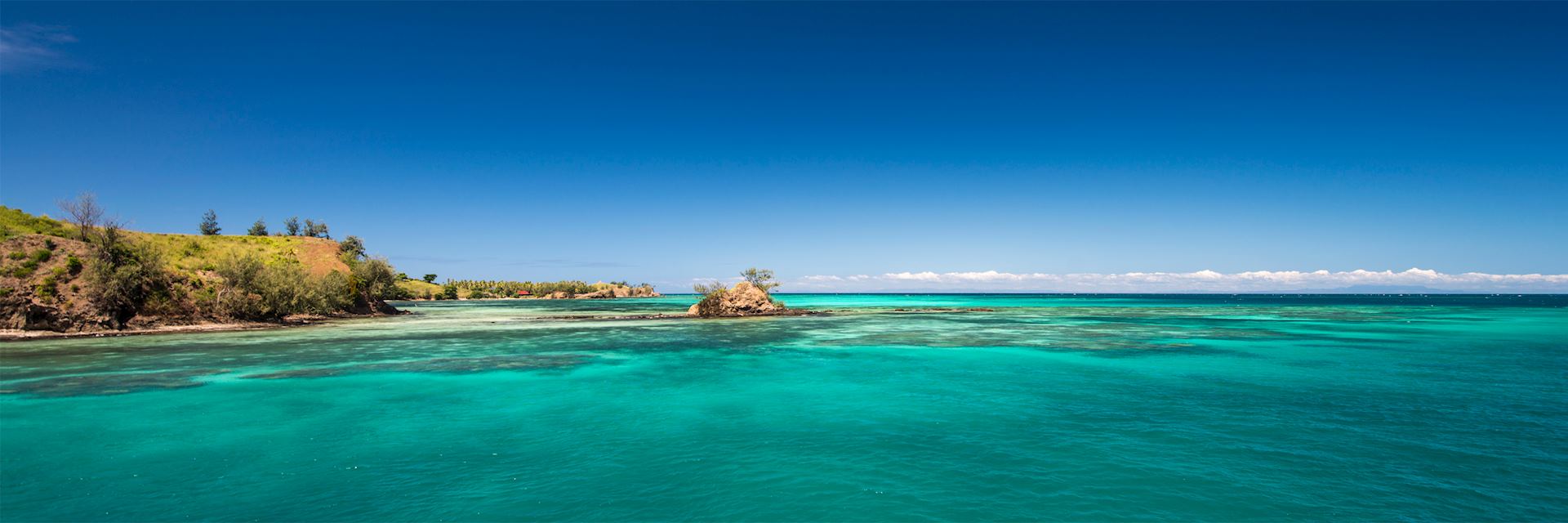
When is the best time to visit Fiji?
- Month-by-month
The best time to visit Fiji depends on what you want to do while you’re there. It has a warm, tropical climate year-round, with minimal extremes, but there are distinct wet and dry seasons.
The wet season lasts from November to April, and the dry season runs from May to October. Temperatures throughout the year are pleasant, rarely dropping below 68°F, and there is plenty of sunshine.
- Make an inquiry
- Request a brochure
Month-by-month guide for traveling in Fiji
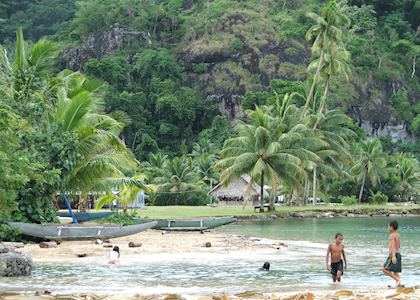
Visiting Fiji in November - April
Although officially considered the wet season, the period between November and April can still be a good time to visit. The higher temperatures do result in storms bringing wind and rain, but these pass very quickly. The prices are lower at this time of year and there are fewer visitors too. The tropical climate helps sustain Fiji's vibrant and colorful flora and fauna, which is particularly impressive at this time of year.
Events & Festivals
- Diwali Festival (November): Diwali is recognized across Fiji. Although it's the Hindu festival of lights, every local resident — regardless of their religion — seems to put candles out and set off fireworks.
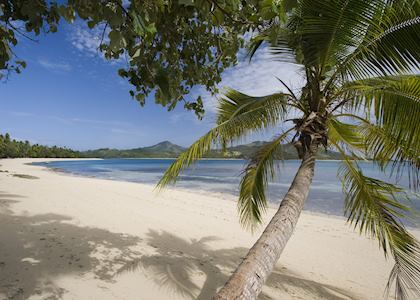
Visiting Fiji in May - October
The dry season is cooler and less humid than the wet season and a more popular time of the year to travel. The waters encircling Fiji's islands are warm and perfect for swimming, snorkeling or diving, while the beaches are at their pristine best. Although it can be busy in certain resorts there are enough locations on land or on water for some rest and relaxation.
- Bula festival (July): Celebrated in Nadi, this festival brings the city to a standstill with marching bands and a lively parade complete with dancers and hundreds of entertainers in traditional Fijian costumes.
- Independence Week (October): A nationwide celebration of independence with a week of religious and cultural ceremonies and events.
Fiji Climate Guide
Why travel with audley.
- 100% tailor-made tours
- Fully protected travel
- Established for over 25 years
- 98% of our clients would recommend us

Travel advice
Practical tips for traveling to Fiji, from social protocols to guidance on money matters, with a link to the latest US State Department travel advice.

Request our brochure
Covering all seven continents, The World Your Way shows you how you can see the world with us. It features trip ideas from our specialists alongside hand-picked stays and experiences, and introduces our approach to creating meaningful travel experiences.
Trip ideas and travel guides for exploring Fiji
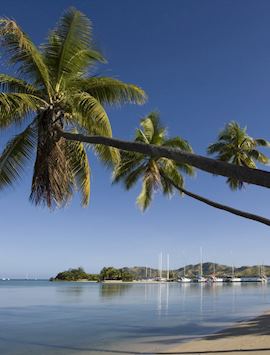
Discover Fiji
9 days from $4,150pp
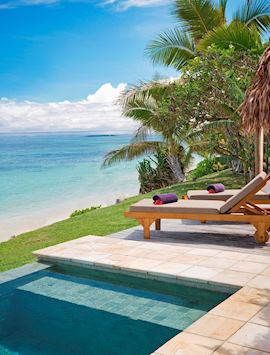
Fiji uncovered
15 days from $7,170pp

Honeymoons in Fiji
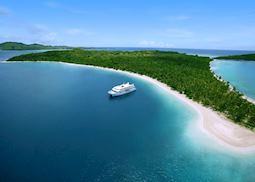
Cruises in Fiji

Your Fiji Guide
Your Gateway to Beautiful Fiji
Best Time to Visit Fiji for Good Weather, Surfing, and Peak Off-Peak Seasons

What is the best month to go to Fiji?
Good and bad weather in Fiji is then determined by the wet and dry season, meaning how much rainfall you’re likely to get each month. The best time to Fiji for clear blue skies is from May through to September. October through to April make up the wet season which is also the time of year most at risk of cyclone.

Weather Conditions
Fiji Island is a tropical country owing to which the weather condition here is more or less pleasant throughout the year . But yes, there are mild variations that occur in different months here too like few months are considered as dry months, and a few are wet months.
Beginning with the dry season of Fiji which starts around May to September is usually considered as the best period to visit Fiji . The temperature during these months stays around 27 degrees (27°C or 81°F) which is a perfect temperature to enjoy water sports and activities. So, if you are the one for who water or beach activities like swimming, diving, snorkeling, sunbathing are the priorities, these dry months are the best time to plan your vacation in Fiji.
Coming to summer wet season that starts from November and stays till March hold the temperature of 30 degrees (30°C or 86°F). A little hotter and more humid, these months in Fiji are more prone to cyclones.
Now concluding, so we can say that period of ending weeks of October and beginning weeks of November can be considered as the best time to visit Fiji if weather and pricing are one of the deciding factors of your Fiji vacation. These months are dry and also working months. So you can expect heavy discounts and fewer crowds in Fiji.

Peak Season and Off Season
Peak and Offseason is yet another factor that you cannot ignore as it affects the pricing, activities, and ambiance of the place. The period of July to August is considered the Peak Season of Fiji . It is the busiest period of Fiji as it attracts the majority of the tourist families from countries like Australia , which are closed for winter vacations during these times. This time in Fiji you can expect heavy crowds as schools are closed, and families head to Fiji for summer breaks.
The period around Christmas and New Year also is the peak period as this is the time for vacations for countries falling in Southern Hemisphere.
So, if you are planning a vacation in Fiji with friends or just your partner, you can grab amazing discounted deals during off-season months like February, March, June, October & November. The period of February to November is also the perfect period for couples to plan a vacation in Fiji, as they can enjoy privacy and peaceful time with their partner. However, there is less choice for families because of the vacation period of schools . You have not much choice left but to choose a vacation in Peak Season only.
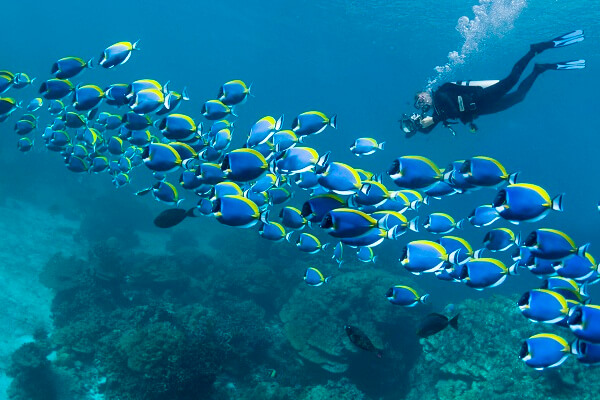
Fiji is an absolutely fantastic destination to visit any time of the year especially if Surfing is on your mind. Let’s understand the weather conditions a little in detail here. If you are planning a vacation in November, December, January, February, or March, you can expect storms and cyclones coming from North Queensland .
For a stable swell period for Surfing , you can consider a vacation in Fiji during April and October. In this period you can experience good surfing time between 8- 10 feet.
You can consider these factors while planning your vacation but if you are not specific about any of the factors, Fiji is a destination to visit any time of the year.
Read More Articles: Why should I visit Fiji? Which Fijian Island is the best to visit?
A vacation in Fiji is like a dream come true to many of us who falls for the love of oceans, coral reefs, colorful marine life, and beaches. Fiji is the ultimate destination for an island holiday. More so, because of the pleasant tropical weather conditions , the island country is filled with travelers and holidaymakers from all parts of the world.
Though the island destination offers a perfect experience any time of the year, you can choose to plan your Fiji Vacation as per your choices and considerations like travel package prices, climate, peak season, or off-seasons. You can plan a vacation in Fiji, here is our guide that mentions all the factors that you can closely consider to choose the right time of vacation in Fiji. Let’s read here about Best Time to Visit Fiji for Good Weather , Surfing, and Peak Off-Peak Seasons.
Related Posts
Does fiji have golf courses.
December 29, 2023 December 29, 2023
Does Fiji have good snorkeling?
December 29, 2023
What is the best of year to visit Fiji?
About ricky.
Ricky is a leading travel writer and author who loves everything Fiji. He is an expert in providing/offering content on everything Fiji related things.
- Deutschland
Best Time To Visit Fiji

Sun, sand and surf in Fiji
Those looking for the perfect beach vacation need look no further than Fiji, an archipelago of more than 300 captivating islands. Find the best time to visit Fiji so you can relax on the island’s sun-drenched beaches, and swim in its crystal clear waters.
It is possible to visit throughout the year, but the best time to visit Fiji is during the drier months between May and October . The skies are clear, and the warmer conditions are great for those who want to go diving and snorkeling. The dry season is also ideal If you are looking to relax on one of Fiji’s stunning beaches.
However, the months of June and July are extremely popular due to the school vacations, and resorts can get booked out months in advance. It is advisable to plan your trip well in time if you want to beat the holiday rush.
Best Time To Visit
We recommend.
- Make your way to Colo-i-Suva Forest Park to catch sight of the most exotic birds
- When the skies clear up, head to the beaches and work on that perfect tan
- Savor the best of Fijian cuisine
- Visit the colorful Nadi Temple
- Witness an incredible fire walking ceremony, an age old tradition where Fijian men walk over a bed of hot stones
- Hike to Tavoro Falls, now full after the monsoons
- Sit back and relax amid the island’s blues and greens
- For a glimpse into the island’s lush interiors and rich culture, go on a Sigatoka River Safari
- Spend some time kayaking over Fiji’s turquoise blue waters
- Head to Mamanuca islands to watch experienced surfers catch some of the biggest waves
- Hike your way to Des Voeux Peak and be rewarded with stunning vistas
- Dive in at Monuriki Island for a fascinating coral reef show
- It’s the perfect time to go island hopping
- The Bula Festival is the perfect introduction to the island’s culture
- Get an adrenaline high with water sports at the Mamanucas Islands
- Beauty pageants, live music, and free entertainment are part of the Fiji Hibiscus Festival
- Head out for a hike in the Garden Island of Taveuni and discover the region’s rich biodiversity
- Get a bird’s eye view of the islands with an exciting helicopter ride
- Experience the warmth and genuine hospitality of Fijians as you explore the green countryside
- Fiji Day is celebrated with colorful parades and cultural programs
- There are plenty of underwater marvels to see at the ‘Soft Coral Capital of the World’
- See the Hindu ‘Festival of Lights,’ Diwali, celebrated with much pomp and joy
- Explore the sights, sounds and flavors of Suva’s Municipal market
- Get a traditional welcome with a Kava ceremony at Navala village
- Pamper yourself with a banana leaf massage
Best Time to Visit by Season
A perfect beach destination, Fiji sees temperatures in the range of 78°F to 88°F throughout the year.
The islands of Fiji experience a typical tropical weather system – with a cool, dry period that runs from May to October that the locals refer to as winter and a wet season that runs from November to March. Fiji sees the maximum number of tourists in July and August. Warmer temperatures and humid conditions characterize the wet season. Rain showers during the wet months are typically heavy but short lived. Cyclones are not uncommon during this time.
The bigger islands of Viti Levu and Vanua Levu receive significantly more rainfall than the smaller islands. Due to the trade winds, the capital Suva, which is on the south-eastern side of Viti Levu, sees a lot more rain than the northern parts of the island.

What to Pack for Fiji
With endless beaches to explore and water activities to try out, swimsuits need to be an essential part of your luggage. High SPF sunscreen, sunglasses, and sun hats are also a must. If you are planning to spend most of your time on the beach, a tote bag will prove useful. Also, remember to pack a sarong or cover-up as you shift from the poolside to the lunch table to the beachside. While flip flops work well for the beach, you will need walking shoes if you are planning to hike or explore the interiors. Do remember to dress modestly while visiting the villages on the islands – tops covering the shoulders and knee-length shorts or dresses are recommended.
While the months from November to March see the maximum rainfall, it can also rain outside of these months. It is best to carry good quality rainwear for times when you might get caught in a sudden downpour. Also, pack a light shawl or cardigan for those windy evenings that might bring about a slight chill.
Get in touch with us to find out more about the best time to visit Fiji. With a safe, private and tailor made itinerary, we will help you experience the of this tropical island paradise seamlessly!

Popular Trips to Fiji
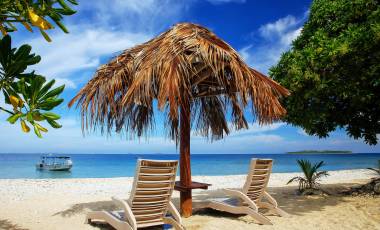
Road Trip: New Zealand and Fiji Explorer
Incredible natural phenomenon and dazzling city lights, adrenaline-pumping adventures, and luxurious experiences – it’s all part of this fantastic journey through New Zealand and the Fiji Islands. First up, discover the highlights of the Coromandel Peninsula. Discover the mysteries and wonders of our planet as you come upon bubbling mud pools and geysers in Rotorua…
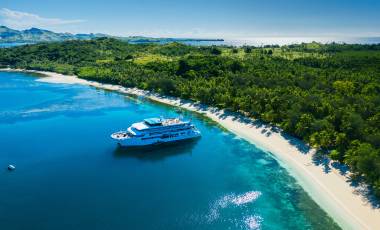
Road Trip: Paradise Islands of Fiji
Get ready for an unforgettable beach vacation to Fiji as you discover the wonders of this island paradise. Experience thrilling river safaris and off-roading adventures as you explore the island from water and on land. Hike through Suva’s verdant interiors and reach a state of bliss as you soak in one of its many natural…
Best Places To Visit
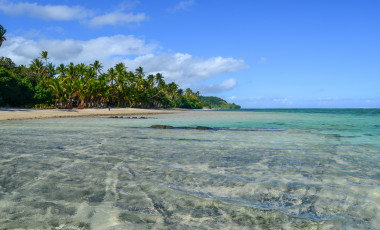
Coral Coast is the stunning coastline that stretches between the towns of Sigatoka and Suva on the Viti Levu island. A few minutes’ drive south of Nadi Town, the Coral Coast attracts travelers the year round with its spectacular natural beauty.
Coral Coast
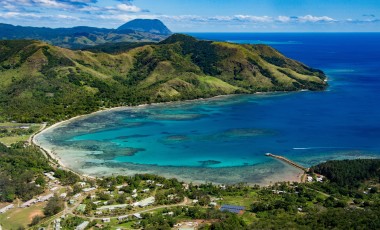
Kadavu Island, the fourth-largest island in Fiji, has a craggy, rugged coast, framed by coral reefs and mangrove forests. Due to its uneven terrain and lack of roads, the main form of transport is water taxis.
Kadavu Island
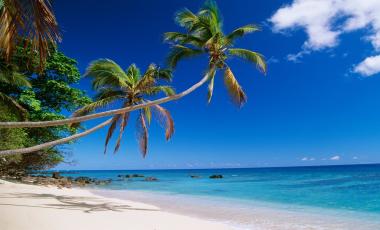
Malolo Island, part of the renowned Mamanuca Islands, is a beach paradise for travelers seeking some sun and adventure! Just a 10-minute seaplane flight from Nadi International Airport in Fiji, the island boasts turquoise waters, white sands, and scenic views along the coast.

Malolo Island
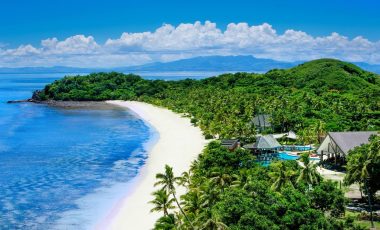
The Mamanuca Islands are a volcanic archipelago situated off the coast of Denarau, just 15 minutes by air from Nadi. With thriving coral reefs, epic waves to ride, and a tranquil lagoon, these tiny palm-fringed islands make the perfect escape for beach lovers!
Mamanuca Islands

Discover Nadi, a laid-back tropical destination on the western coast of Fiji’s largest island, Viti Levu. With plenty of rural charm, Nadi serves as a gateway and transportation hub, home to Fiji’s international airport.
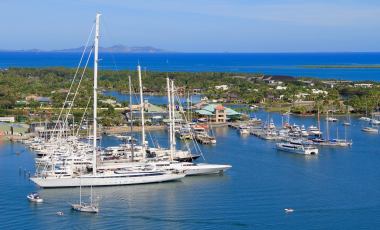
Port Denarau is a small man-made island, less than one square mile in size, built on reclaimed mangrove mudflats. The hub for exploring the sun-drenched islands of western Fiji, it is just 15 minutes away from Nadi Airport. The marina is the epicenter of the thriving cruise and sailing activity in this division of Fiji.
Port Denarau
The enchanting difference, authentic & unique.
Our award-winning, licensed local guides provide incredible insights and exclusive experiences for you.
Personalized & Private
Our experts completely customize your private tour to match your interests and preferences.
High-Quality Experiences
All our accommodations and services are personally tested by our team.
Fully Supported Travel
You’ll have a personal and dedicated trip coordinator, backed by 24/7 support in case of emergencies while you’re traveling.
Financial Protection & Flexibility
Your booking is flexible and completely secure with us.
Safe & Secure
Your safety and well-being are our top priorities.
Do you have a vacation in mind? Personalize your itinerary with our Trip Builder.
The Best Time to Visit Fiji: All About Fiji Travel Seasons!

- Latest Posts

- KLM vs Delta: Is KLM a Good Airline? - January 26, 2022
- The Best Time To Visit Brazil – Seasons, Events, Activities! - January 23, 2022
- The Best Time to Visit Fiji: All About Fiji Travel Seasons! - January 22, 2022
Fiji is a tropical delight with pleasant weather. The country is naturally beautiful Both the land and the underwater are sweet and offer a fantastic experience to visitors and tourists.
Fiji rarely experiences the winter cold. The minimum temperature in Fiji during the winter season is 18 degrees. This feature makes Fiji a great all-year-round tourist destination. However, that doesn’t mean that all months of the year in Fiji are sunny or feature blue skies.
Being a great year-round tourist destination , the best time to visit Fiji depends on individual preference and the type of vacation you’re aiming to have. Some of the factors that you may want to consider to determine your best time to visit Fiji for a vacation can include weather conditions, costs, and crowds.

Fiji Travel Season: The Best Time To Visit
Fiji has two travel seasons and these are the peak season and off-season. The peak and off-peak tourist seasons in Fiji are one of the most factors that may affect your choice of the best time to visit. The reason for this is because the most popular visiting time in Fiji is the peak season.
Besides being the most expensive time to visit Fiji, it is equally the busiest. July and August in Fiji fall within Australian and New Zealand school winter holidays and this is the peak travel season in Fiji because a lot of families go on vacation within this time. Also, the Christmas/New Year period equally falls into one of Fiji’s busiest time as a lot of families visit this time to take a break during the summer holidays of the Southern Hemisphere.
Thus, June to September during the Australians winter season is Fiji’s peak season with the July school holidays having the most crowds apart from Christmas with the largest crowds. If you’re traveling with kids and want to avoid crowds, avoid visiting during Fiji’s winter school holidays.
However, if you must travel within this period, make reservations for rooms as you would find it difficult to get a place to stay if you leave till the last minutes. If you want to visit Fiji from North America, the best time for you would be between late April to early June, or late July to August.
This is because you would normally get cheaper airfares on Air Pacific and Air New Zealand within this time. June to October is Fiji’s coldest and driest months. The months of November and April in Fiji is the Cyclone season. February and March have the least crowds and the prices of hotels and resorts are cheaper within this period.
Your choice may be limited if you’re visiting Fiji with the whole family. However, if you’re traveling with friends, you can grab one of the numerous off-peak deals and quieter islands during the low seasons of February, March, June, October, and November.
These months are the best time for couples to visit Fiji especially if they’re after a peaceful, relaxing and romantic vacation. Nonetheless, whatever is your best time of the year to visit Fiji, you a broad collection of hotels and resorts to choose from.

Looking for sports, concerts, or music festivals? Find your perfect holiday or city break and save now at Expedia.com
Fiji Travel Seasons

Fiji has three different travel seasons: The high season, the low season and the shoulder season.
1. The High Season
Fiji high season falls in July, August, December, and January. These months’ correlates with the European holiday season with Australia and New Zealand school breaks. The month with the largest crowds in August and during the Christmas and New Year period.
Within these periods, the hotel prices are costliest and inter-island boats and planes frequently fully packed. If you’re traveling during this time, remember to book ahead. Bear in mind that December and January are equally Fiji’s peak wet season when you could potentially experience tropical cyclones. This can result in cancellations of boat and plane trips.
2. Shoulder Season
The shoulder season in Fiji falls between May, June, September, and October which could either be the beginning or end of the wet season. These months don’t fall within Fiji’s peak holiday periods. The weather of the shoulder season is pleasant and comfortable.
You’d enjoy clear skies with cool and dry days. Besides, the travel cost within these periods is low yet to soar. It is equally easy to move around and immediately after the cyclone season; the outdoor events begin.
3 . Low Season
The low season in Fiji falls within November, February, March, and April. The prices of hotels fall at this time and it is not difficult to book seats on boats and planes. However, you may experience occasional cancellation services due to bad weather. There are constant rains during this period, the humidity is not frequently pleasant, and there are potentials of witnessing cyclones.
Best Time to Visit Fiji for Good Weather : May to October

Fiji has a pleasing and a bit mild weather all the year round because Fiji has a tropical climate. Like all tropical climates, Fiji experiences wet and dry seasons. The wet season in Fiji occurs during summer when temperature increase and high humidity result in increased precipitation. Fiji equally experiences cyclones during this period. The rainstorm of the summer season falls between November and March when the temperature is in the low 30’s during the day and a little less to 27 degrees Celsius at night.
Located in the Southern Hemisphere, the dry season occurs in Fiji from May to September when the weather is cooler and the temperature of the water is warm enough for swimming. The weather of this period is equally great for sunbathing and a collection of popular activities and tours.
By and large, the best time of the year to visit Fiji with regards to the dry and wet season is from late October to early November. During this time, the cost of traveling to and staying in Fiji is yet to reach its peak. Also, the weather is dry, relaxed and warm. The beaches and resorts are equally less crowded because it isn’t yet the school holiday.
Mean temperatures in Fiji
Between May and November of the winter season, the temperatures in Fiji are warm during the day and roughly 80 degrees Fahrenheit and cool at night and in the early mornings. During the summer and rainy season in Fiji which falls from November to April, the temperatures can rise to 95 degrees Fahrenheit.
There are usually late afternoon showers. Fiji has a tropical climate with high humidity and rainfall during the summer and low temperatures with dry air during the winter. Nevertheless, the windy weather creates a climatic difference from one island to the other. Discuss with your travel agent to find out what is the weather condition around your hotel or resort.
Fiji Rainstorm
When it normally rains during the winter, afternoon showers occur frequently. During moments of tropical storms or cyclones, the natives and visitors in affected areas are relocated to safe locations. Tropical storms are a common occurrence during the rainy season. The last serious cyclones that occurred in Fiji took place in December 2012, March 2010, December 2009, December 2007 and December of 2003.
If you visit Fiji when it rains, that’s a perfect time to have a task of kava with the locals. Kava is a traditional drink produced from the kava root. It has a mild and calm effect, and each sip is celebrated with a local ceremony. The drink tastes a little like dirty water but a sparkling flavor.
If the weather becomes incremental, you may want to let go of snorkeling and try to witness a Lovo. Lovo is a traditional feast in Fiji which tastes a little like the Hawaiian luau. It includes a pig roasted in an underground oven and wrapped in banana leaves. This is frequently combined with the Meke which is a traditional story-telling dance concert with the performance of an orchestra using percussion instruments.
Visiting Fiji and Weather by Month

Fiji January Weather
January in Fiji is still the peak of tourist season due to the Australian and New Zealand school holidays. January is equally the middle of the rainy season in Fiji. When there are no rainstorms, the temperatures rise but only roughly 5 degrees high to a maximum of 30 degrees Celsius. However, the high relative humidity can make it difficult for most tourists to visit during this time. Try to check the local media, hotel news and official website for information about potential cyclones.
Fiji February Weather
February carries the most risk of a potential cyclone. Fiji experiences an average of one cyclone in a year. Some years are cyclone-free. In April 2018, the country experienced two cyclones in a single week and Winston which was the strongest in the whole of pacific south caused serious disaster in February 2016.
Although most of the cyclones didn’t pass through the major tourist centers, the peripheral effects of the winds and rains make air, boat and road travel a bit difficult.
Fiji March Weather
March is the wettest month in many parts of Fiji. Suva, for example, experiences rain three days out of thirty-one days in a month. This month is usually characterized by heavy and short downpours. However, sunshine usually follows almost immediately after. Nonetheless, it still disrupts boat travel and flights may be canceled while some roads are damaged by floods.
April weather in Fiji
The heavy downpours begin to go down in the middle of April. This month equally marks the end of the standard cyclone season and the relative humidity is much lower. However, it may potentially rain. So, if you are traveling this time, don’t forget to still carry your umbrella and rain gear.
Fiji and May’s Weather

May is the beginning of the dry season and formally ends the potentials for cyclones. The weather fast gets cooler and drier, however less-heavy rains that don’t last long could still fall for one or two weeks more. Fiji Waters in May is clearer for snorkelers and divers, and the winds and waves are milder to pave way for the surfing season.
June’s weather in Fiji
This is great weather to visit Fiji with no more experience of heavy rains. The humidity is equally low and visitors have many days of the month dry and clear and this month starts the beginning of the peak season. The weather is cold at night and this makes sleep enjoyable and you may want to put on your sweater when the weather gets dark.
July’s weather in Fiji
From July, the weather in Fiji starts to get cooler and more pleasant. There is little or no rain. The weather can get chilly at night and become as low as 18°C.
Fiji and the August Weather
While the nights are becoming cooler and cooler, the weather during the day gets milder and no hotter and there is hardly any heavy rain during this time. The weather in Europe at this time is commonly hotter and so a lot of visitors come into the country from Europe for the calm and pleasant weather. Besides, the temperatures of the water are still sufficiently warm for swimmers to enjoy.
September visit in Fiji and the Weather
S eptember is one of the best months to visit Fiji. The month is blessed with continual dry and pleasant weather. The crowds have significantly reduced at this time and the hotel rates are cheaper.
Fiji and the October Weather
October is the last month that experiences calm and dry weather. The local gets anxious due to the potential of cyclones occurring. This results in the reduction of water sports activities or the entire close down of a few water-sports centers. It equally gets more frustrating to engage in diving and snorkeling at this time because the waters get cloudy. Surfers equally stop working due to the increase in temperature and humidity.
Fiji visit and November Weather

November is the beginning of the Fiji rainy season equally referred to as the ‘summer’, which continues to April. The temperature increases a bit and the humidity makes the weather a little uneasy.
Cyclones can potentially occur at this time. You must, therefore, be vigilant if you’re visiting at this time. The weather on the main mountainous islands of Viti Levu and Vanua Levu may differ along the coastlines.
December Visit and Fiji Weather
Fiji’s wet season continues in December and there could be heavy downpours that may disrupt holiday activities. This is made worse by the high humidity which can occur before it rains. Also, there are large crowds during the Australian and New Zealand school holidays. Because of the weather condition, boat and plane travel may be postponed. The roads may be flooded. However, the rain only lasts for a short while and flooding could rarely occur. Most days are also sunny.
Best Bargain Time To Visit Fiji
The peak tourist season in Fiji falls around July, August, December, and January. This time is crowded and hotel rates are high. Sometimes, you may find that the boat fares and air tickets are entirely booked out. If you’re looking to get a good bargain, avoid visiting Fiji during any of these months.
Best Time To Visit Fiji For Sightseeing
When visiting Fiji for sightseeing, there are two essential factors to look at. The first is the peak seasons, which covers the school holidays in Australia and New Zealand with the longest of it starting from the middle of December to the end of January. The second factor is the wet season which lasts from November to April.
At this time, cyclones are common, there is also constant heavy rain and the humidity can be discomforting. Therefore, your best times to visit would be May to October but especially- May, June, September, and October. If you’re visiting Fiji for Honeymoons, the best time is equally from May to October.
Best Time to Visit Fiji for Diving and Snorkeling

You will likely experience calmer and clearer waters during the dry season-May to October and potentially one month before and after. Thus, the best time to visit Fiji for Diving and Snorkeling is from May to October. The waves and winds can disturb the water during the wet season and affect visibility.
However, it is less of a problem in the calm and non-tidal lagoons which surround a lot of the isles and bigger islands. The Fiji water temperatures are warm throughout the year. However, if you hope to engage in deeper dives, don’t forget to pack some thin wetsuits.
In the north where the Vanua Levu and Taveuni Islands are located, the rainy season which starts from November to April will have a big effect on your diving. If you plan to dive in those locations, do that only during the dry season. For the Mamanucas, Beqa, and Viti Levu the effect of rain is less. Also, diving and weather are generally very pretty nice throughout the year.
Fiji locations popular for diving:
- The Black Forest
Here, you’ll find ancient black coral trees, different types of fish and marine life, close to Wananavu Beach Resort.
- Close to Taveuni, there are The Ledge, The Great White Wall, Jerry’s Jelly, and Annie’s Bommie; A few closes by resorts are Qamea, Laucala, Matangi, Taveuni Palms, Paradise Taveuni, Maravu, and Taveuni Island Resort.
- The Great Astrolabe Reef is close to Kadavu Island. It is taken as the biggest living organism in Fiji, with many different types of hard and soft corals and assorted marine life. It is roughly 40 miles from the key resorts at Beqa Lagoon
- Naiqoro Passage has both broad different types of coral with colleges of sharks and barracuda
- Beqa Lagoon, located close to Beqa Lagoon Resort, Lalati, Royal Davui, and Shangri La, is popular for encountering sharks and brilliantly colored coral. It is taken as one of the best diving lagoons in the South Pacific.
- The Mamanucas where there are beautiful corals, a few sharks, and a lot of colorful fish and marine life, particularly around the Malolo Barrier Reef. Popularly visited sites in this location include Supermarket, Salamander shipwreck, Plantation Pinnacles, and Magic Island. You have a lot of resorts in the Mamanucas. Thus, you have diverse options.
Any part of Fiji, you choose to dive in, the diversity and density of underwater life will amaze you. The Somosomo Strait is mostly used by divers who want the soft corals and wall dives. The Beqa Lagoon is popular because of the presence of sharks. The Malolo Barrier Reef offers divers a lot of things for sightseeing. It is located close to the Mamanuca islands and is not normally deep. It is great for fresh scuba divers and snorkelers.
Best Time To Visit Fiji for Outdoor Activities
As you’d expect, Fiji’s weather determines how easy you can access and enjoy everything outdoors during your visit. There are usually heavy downpours in the wet season which runs from November to April. The heavy rain can initiate landslides, high waves, and rough winds, and anytime there is no rain, the humidity can be uncomfortable.
You should not venture outdoors anytime there are cyclones. The best time to go hiking is between May and October, while the best time to go rafting is from December to May. For Outdoor Activities, concentrate on only May to October.
The Best Time to Visit Fiji for Beaches

The dry season which starts from May to October is frequently regarded as winter by the locals. Daytime temperatures can be roughly 25 degrees Centigrade. It can get a bit cooler in the afternoon and the evening. However, the sea temperature remains consistently inviting.
Swimming is more attractive in the wet season when people look for a respite from the heat and humidity. However, ensure you stay out of the waters during any bad weather especially when there is lightning. Remember always to use sunscreen even when the weather looks cloudy or mild.
Best time to Visit Fiji For Surfing
Because Fiji has pleasant weather throughout the year, any time of the year is great for surfing. The tropical storms and cyclones between November and March from North Queensland produce outstanding waves and smaller swells. Nonetheless, the wet season can cause strong winds and tropical downpours.
This period is equally less busy in Fiji and the crowds are less at the waves. The best time to visit Fiji for surfing is when you’ll find the most dependable swell which could go up to 8 to 10 feet high between April and October.
Best Time for Nightlife
Any time of the year is great for nightlife in Fiji. However, you may want to avoid visiting between November and April if you hope to stay in the smaller and far islands because this period has less to offer.
The best time to visit Fiji: Seasons consideration
1. fiji winter (dry) season: the dry season known as winter in fiji runs from may to october.
The winter months in Australia overlaps with the cooler months in Fiji. However, winter in Fiji or their dry season is warmer than the Australian winter. The daytime temperatures in Fiji at this time hovers around 26 to 27 degrees centigrade. Although it is cooler at night, the weather is still pleasant although may not feel the same to the Fijians. During Fiji’s dry season or winter, the sky is blue, clear, the rate of rainfall diminishes and the humidity is a mile.
Also, it is less likely for cyclones to occur. The benefit of visiting Fiji during the Winter besides the fantastic weather is many. These include favorable weather for surfing, snorkeling, and diving. Besides, you enjoy a lovely view of the sun at sunsets. At the beginning of Fiji’s winter or dry season, you experience a fantastic view of the color spectrum. The light displays found all over the sky is a great natural sight to behold.
This period is equally the best time to go diving and snorkeling. The clearest time falls between May and September ending. A few divers, nevertheless, fancy the wet season because the water temperature at this time is a bit warmer which means they won’t have to put on wetsuits.
What you can do when you visit Fiji this time
Fiji has a great sea life, and especially a very colorful coral. The Great Astrolabe Reef is the fourth- biggest barrier reef and wraps around the faraway island of Kadavu in the South. The Somosomo Strait between the northern islands of Vanua Levu and Taveuni, is popular for its attractive soft corals. At Savusavu located on the Vanua Levu Island, you can join in the Cousteau’s flippers, at the popular Jean Michel Cousteau Fiji Island Resort.
You can also try underwater diving on the following sites -Chimneys and Alice in Wonderland, where you’ll experience mushroom-shaped corals, sea enthusiasts, and clownfish.
You can equally go deeper to diving sites like the Grand Central Station located at Namana Marine Reserve. The locals of Cousteau take this site as one of the best ten dive sites around the globe.
Major Fiji Events in winter
The hibiscus festival.

The Hibiscus Festival is one of the largest events in Fiji. It is well attended and results in the stoppage of all other activities in Suva. It is celebrated in August and lasts for one whole week. The event celebrates different cultures and diversity in Fiji including their foods, rides, theatre, sporting activities, an opening march, floats parade, talent competition, village arts and many more.
Fijians are great party-lovers. You can join in the celebratory mood of the National Fiji Day when the country celebrates the anniversary of its independence from British colonial rule.
2. Summer in Fiji also known as the wet season falls within November to April
The summer season is characterized by heavy downpour and unlike regular tropical rains which are commonly short-lived, Fiji’s rain can last for some days. However, as soon as the rain is over, you’ll experience hot weather due to the high humidity.
The south-east part of Viti Levu close to Suva experiences a little more rainfall than the surrounding of Nadi which is most commonly utilized for resort and is located in a drier zone. Because of the drier environment in this area, you’ll get more resort located here. If you’re visiting during the summertime, you may want to put that into consideration.
It is important to mention that even while it rains, the weather is still sufficiently warm and if the sun emerges, the weather gets hot. What you can do at this time is to visit the beach and relax under a coconut tree and swim in the cooling waters filled with fishes. You can equally go over to the swim-up bar and purchase more coconut mojito.
The best time to experience Fijis waterfall is in March at the end of the wet season. The forest floors are commonly submerged at the end of the raining season. The rivers also flow at this time. There are equally abundant colorful flame trees during the festive season.
These brilliantly colored flame trees produce stunning flowers during the Christmas period.
A lot of tropical plants equally produce blooms and this implies Fiji has a lot of color outbursts and new life within this period. Even though the Christmas falls during Fiji’s Wet season, this festive period is very busy in Fiji because many families from Australia and New Zealand visit Fiji during this time. This is why December is the worst month to pay for airfares in Fiji. Nevertheless, you can get cheap flights in late January and February when the school holiday is over and kids have returned to school and their parents have gone back to their works.
The advantage of visiting Fiji during this period is that the crowds have reduced and the accommodation cost is low. However, the disadvantage of this time is the cyclone risks.
Although the locals are given sufficient warning. And they build cyclone-proof shelters, cyclones often occur and can sometimes disrupt your holiday plans. It can affect your ability to move about by road, boat or air. Get a ticket with flexible travel dates and don’t forget to get sufficient travel insurance.
Activities you want to try while visiting Fiji at this time
You can take to Sigatoka River Safaris to get an idea of the past life in Fiji. You can paddle through knee-deep water with hurricane lantern and visit the biggest cave in Fiji known as the Naihehe Cave.
It is located deep within the 170-meter cave and continues to be a horrid remembrance of Fiji’s past life of cannibalism. You’d see a cannibal oven, a ritual podium and the hallowed priest compartment.
Main Fiji Summer events
Coral coast sevens tournament .
This is a seven rugby tournament that is held annually in late January at Lawaqa Park, Sigatoka. During the event, you would get a fantastic opportunity to witness the tremendous pool of Fiji’s rugby talents.
The best time to visit Fiji and experience the comfort it has to offer is during Fiji’s winter or dry season and around October. The temperature around this time is 25 degrees centigrade during the day and at night, it drops around 19 to 20 degrees centigrade.
Although it is the best comfortable time to visit, it is the busiest period because it falls exactly during the Australian winter when many families escape the country on a holiday for warmer weather. The best time to visit Fiji, thus, depends on the type of holiday you’re aiming to have and the experience you’re looking forward to.

Fiji is a very costly country to travel around even for visitors who have a large budget. If you plan to visit any of Fiji’s outer islands, the numbers of available backpacker resorts in each Island is limited.
The best time to visit Fiji is from end of October to the beginning of November. This period is outside the school holidays, therefore, resorts and beaches have fewer crowds. Room rates are cheap and the weather is more stable, dry and constantly warm. The peak season is from July to September and if you visit outside these periods, you can save a lot.
The best time to visit Fiji starts from May, June, September and October. Thus if you’re looking to experience the best Fiji weather, the best time is from May to October.
Fiji takes roughly a 10 1/2-hour non-stop flight from Los Angeles. Although the flight schedule says a +2 arrival, it doesn’t take two days of flying but it only means two calendar days will pass.
If you want to avoid the crowd and reduce cost, avoid visiting during Antipodean school holidays as this period tends to be busy. Also, the air tickets and resorts tend to be fully packed at this time and the travel costs are on the high side.
This peak tourist season occurs mainly during the July, August, and Christmas vacations. For minimized cost and better weather, the best time to visit is between mid-October to mid-November.

Quick & Easy Way To Book a Hotel. Best Price Guaranteed! Find the Lowest Room Rates with One Easy Search. Book & Save Today.
- Bizarre Travel Stories
- Budget Friendly Travel
- Eco-Friendly Travel
- Packing Tips
- Points + Miles
- Travel Advisory + Alerts
- Travel Trends
- Cocktails + Spirits
- Dishes + Entertainment
- Restaurants
- Best Accessories
- Style + Fashion
- Travel Bags
- Travel Tech
- Animals Travel + Updates
- Celebrity Travel Alerts
- Meditation + Health
- Traveler Job Ideas
- Best Travel Guide
- Saving Tips
- Top Festivals
- Travel + Manners
- Travel Advisors
- Travel Tips + Tricks
- Trip Attractions
- Weather Updates + Places
- Bali Vacation
- Czech Republic
- Denmark Vacation
- UK Vacation
- Ecuador&Galapagos
- Montego Bay
- Turkey Vacation
- New Zealand
- South Africa
- Spain&Morocco
- Kenya Tours
- Madagascar Tours
- Mauritius Tours
- Morocco Tours
- Namibia Tours
- Seychelles Tours
- South Africa Tours
- Tanzania Tours
- Zimbabwe Tours
- Antarctica Tours
- Bhutan Tours
- Cambodia Tours
- China Tours
- India Tours
- Japan Tours
- Malaysia Tours
- Myanmar Tours
- Singapore Tours
- SriLanka Tours
- Thailand Tours
- Vietnam Tours
- Albania Tours
- Armenia Tours
- Austria Tours
- Bosnia Tours
- Bulgaria Tours
- Croatia Tours
- CzechRepublic Tours
- Denmark Tours
- England Tours
- France Tours
- Germany Tours
- Greece Tours
- Hungary Tours
- Iceland Tours
- Ireland Tours
- Italy Tours
- Latvia Tours
- Montenegro Tours
- Norway Tours
- Poland Tours
- Portugal Tours
- Romania Tours
- Scotland Tours
- Slovenia Tours
- Spain Tours
- Ukraine Tours
- Argentina Tours
- Belize Tours
- Brazil Tours
- Cancun Tours
- Chile Tours
- Colombia Tours
- CostaRica Tours
- Ecuador&Galapagos Tours
- Hawaii Tours
- Los Cabos Tours
- Mexico Tours
- Montego Bay Tours
- Patagonia Tours
- Punta Cana Tours
- Egypt Tours
- Israel Tours
- Jordan Tours
- Turkey Tours
- New York Tours
- Florida Tours
- Australia Tours
- BoraBora Tours
- New Zealand Tours
- Tahiti Tours
- Arizona Tours
- New Mexico Tours
- California Tours
- Nevada Tours
- Washington Tours
- Family Vacation
- Private Tour
- Special Interest
- Adventure Travel
- Cultural Travel
- Last Minutes Hotels
- Last Minutes Vacations
- Last Minutes Cruises
- Last Minutes Flights
- Last Minutes Car Rentals
- Botswana Safaris
- Gorilla Trekking
- Kenya Safaris
- Namibia Safaris
- Rwanda Safaris
- SouthAfrica Safaris
- Tanzania Safaris
- Uganda Safaris
- Zambia Safaris
- Zimbabwe Safaris
- Book flight
- Leisure Jets
- Alaska Cruises Travel
- Best All-Inclusive
- Caribbean Cruises
- Cruises for Family
- Disney Cruises + Destinations
- European Cruises
- River Cruises
- Amusement Park
- Beach Vacation
- Best National Parks
- Culture + Activities
- Fall Vacation + Ideas
- Holiday Tour
- Luxury Travel
- Plan Road Trip
- Romantic Places
- Solo Travel + Tips
- Spring Vacation + Tips
- Summer Vacation + Tips
- Trip Suggestion
- Weekend Getaway
- Winter Vacation + Tips
- Travel Books
- Travel sized Toiletries
- Shoes/Clothing
- Travel Apps
- Music Travel Playlist
- Personal Stylist
- Packing Lists
- Language Learning
- Travel related - Movies/TV shows
- International Airlines
- US Airlines
- Visit Island
- Latest Trends
- Destination Of The Year
- Write Review
- Start Planning
Seasonal Fiji: A Quick Guide For The Best Times To Visit

Fiji, with its pristine beaches, turquoise waters, and vibrant culture, is a dream destination for many travelers. However, to make the most of your trip to this South Pacific paradise, it's crucial to choose the right time to visit based on your travel interests. Whether you're an avid snorkeler, an island explorer, or simply seeking ideal weather conditions, this article will serve as your guide to the best time to visit Fiji for your preferred activities. From the best months for snorkeling in crystal-clear waters to the ideal time for island hopping and experiencing local festivals, we'll provide insights and tips to help you plan a memorable trip to Fiji that caters to your travel style.
Best Time to Visit Fiji for Snorkeling

Fiji boasts a stunning underwater world that is a haven for snorkelers and divers alike. The warm waters of the South Pacific Ocean are teeming with colorful coral reefs, vibrant fish species, and a myriad of marine life. With visibility often exceeding 30 meters, Fiji offers some of the clearest waters for snorkeling, providing a mesmerizing underwater spectacle. Snorkelers can encounter graceful sea turtles gliding by, majestic manta rays gracefully soaring through the currents, and an array of tropical fish darting among the corals. Fiji is also known for its soft coral dives, with intricate coral formations in a rainbow of hues that create a surreal underwater landscape. Whether you're a novice or an experienced snorkeler, Fiji's underwater world promises an awe-inspiring experience that will leave you captivated by its natural beauty.
Best Time to Visit for Optimal Snorkeling Conditions
Fiji is renowned for its remarkable snorkeling opportunities, with its crystal-clear waters and diverse marine life. To make the most of your snorkeling adventures, it's important to plan your trip during months when the conditions are optimal for underwater exploration.
Months with the Clearest Waters and Abundant Marine Life
The best time to visit Fiji for snorkeling is during the dry season, which typically runs from May to October. During these months, the waters are usually calm, with excellent visibility that can often exceed 30 meters or more, providing an unparalleled snorkeling experience. The lack of rainfall during the dry season also helps to keep the waters clear, making it an ideal time for exploring Fiji's underwater world.
Additionally, Fiji's dry season coincides with the Southern Hemisphere winter, meaning water temperatures are cooler compared to the summer months, ranging from around 23 to 27 degrees Celsius (73 to 81 degrees Fahrenheit). These cooler waters attract a plethora of marine life, including colorful coral formations, tropical fish species, and larger creatures such as sea turtles and manta rays, which thrive in nutrient-rich waters during this time.
Specific Snorkeling Spots and Their Seasonal Highlights
Fiji is home to numerous snorkeling spots that offer unique experiences and seasonal highlights. Here are some of the top spots and what to expect during the best time to visit:
The Yasawa Islands:
These picturesque islands are known for their pristine white sandy beaches and abundant marine life. Snorkeling in the Yasawa Islands during the dry season offers the chance to encounter colorful coral gardens, tropical fish, and even reef sharks. Some popular snorkeling spots in the Yasawa Islands include the Blue Lagoon, Naviti Island, and Drawaqa Island, which is famous for its resident population of manta rays that can be seen from May to October.
Taveuni Island:
Known as the "Garden Island of Fiji," Taveuni is renowned for its lush rainforests and pristine coral reefs. The island is surrounded by the Rainbow Reef, a world-famous snorkeling and diving destination. Snorkeling in Taveuni during the dry season offers the opportunity to witness the breathtaking soft coral gardens for which the island is famous, with their stunning array of colors and shapes.
Beqa Island:
Located off the coast of Viti Levu, Beqa Island is a hidden gem for snorkelers. The island is known for its clear waters and thriving marine life, including an abundance of hard and soft corals, tropical fish, and even the elusive hammerhead sharks. Snorkeling on Beqa Island during the dry season provides the best chances for encountering these magnificent creatures.
Best Time to Visit Fiji for Island Exploration

Fiji is a treasure trove of diverse islands, each with its unique offerings that cater to different travel interests. From the lush rainforests and pristine coral reefs of Taveuni Island to the luxury resorts and world-class snorkeling spots of the Yasawa Islands, Fiji's islands offer a myriad of experiences for every type of traveler. Beqa Island is renowned for its clear waters and thrilling encounters with hammerhead sharks, while the Mamanuca Islands are famous for their picturesque beaches and vibrant marine life. With over 330 islands to choose from, Fiji promises a diverse range of experiences, from adventure-filled snorkeling expeditions to tranquil beach getaways, making it a truly unparalleled destination in the South Pacific.
Things to Consider When Exploring Islands in Fiji
Weather patterns:.
Fiji experiences a tropical climate with two distinct seasons - the dry season (May to October) and the wet season (November to April). The dry season is generally considered the best time for island hopping as the weather is more stable with less rainfall and lower humidity levels. The skies are often clear, and the seas are calmer, making it easier to travel between islands and enjoy various outdoor activities. The wet season, on the other hand, can bring heavy rainfall and occasional cyclones, which may disrupt travel plans and limit access to some islands.
Accessibility to Remote Islands:
Fiji comprises over 300 islands, with some of them being more remote and less developed than others. The best time to visit for island hopping and exploration may vary depending on the accessibility of these remote islands. During the dry season, when weather conditions are favorable, most islands are easily accessible by boat or seaplane, allowing you to explore and experience the untouched beauty of Fiji's more secluded destinations. However, during the wet season, transportation to remote islands may be more challenging due to rough seas or the limited availability of services.
Festivals and Cultural Events:
Fiji has a rich cultural heritage, and various festivals and cultural events take place throughout the year, offering unique opportunities for travelers to immerse themselves in local traditions. These events can influence travel plans, as they may affect accommodation availability and transportation options. For example, the Bula Festival in July, which celebrates Fijian culture with traditional dances and competitions, may draw crowds to the main island of Viti Levu. Similarly, the Fiji Hibiscus Festival in August, known for its beauty pageants, live music, and food stalls, can impact travel plans to the capital city of Suva. Planning your trip during these events can provide an enriching cultural experience, but it's essential to consider the availability of accommodations and transportation during these peak times.
Best Time to Visit Fiji for Weather

Fiji's climate is characterized by tropical weather, with warm temperatures throughout the year. However, there are distinct seasonal variations that travelers should consider when planning their visit. Fiji experiences two main seasons - the wet season and the dry season - which can significantly impact the weather conditions and overall travel experience.
Fiji's climate and seasonal variations
Fiji's wet season generally occurs from November to April, with heavy rainfall, high humidity, and the possibility of tropical cyclones. The wet season can result in muddy trails, flooded roads, and limited outdoor activities, which may not be ideal for travelers seeking sunny and dry weather. On the other hand, Fiji's dry season typically runs from May to October, offering generally more favorable weather conditions with lower humidity, cooler temperatures, and less rainfall.
Best time to visit for favorable weather conditions
To avoid the rainy and cyclone seasons, the best time to visit Fiji for optimal weather conditions is during the dry season from May to October. These months typically offer pleasant temperatures ranging from 22 to 30 degrees Celsius (71 to 86 degrees Fahrenheit), lower humidity levels, and fewer chances of rainfall. The skies are often clear, making them ideal for outdoor activities and water sports.
Rainy and Cyclone Seasons to Avoid
Fiji's wet season, which occurs from November to April, is characterized by high humidity, frequent rainfall, and the potential for tropical cyclones. The heavy rainfall during this period can lead to muddy trails, flooded roads, and limited outdoor activities. Additionally, tropical cyclones can occur, causing disruptions to travel plans and posing safety risks. Hence, it's best to avoid visiting Fiji during the wet season if you're looking for optimal weather conditions.
Months with pleasant temperatures and low humidity
The dry season in Fiji, which spans from May to October, is the best time to experience pleasant temperatures with lower humidity levels. During these months, temperatures typically range from 22 to 30 degrees Celsius (71 to 86 degrees Fahrenheit), providing comfortable weather for outdoor activities and exploration. The humidity is generally lower compared to the wet season, making it more comfortable for travelers to engage in various activities without feeling too sticky or sweaty.
Activities and accommodations suitable for the recommended months
The dry season in Fiji offers excellent weather conditions for a wide range of outdoor activities and accommodations that cater to different travel styles.
Beach activities, sunbathing, and water sports
The dry season is perfect for beach activities, sunbathing, and water sports such as snorkeling, scuba diving, kayaking, and surfing. The clear skies and calm waters during this period provide ideal conditions for these activities, allowing travelers to enjoy Fiji's beautiful beaches and turquoise waters. The dry season is also an excellent time for sunset cruises, island hopping, and exploring Fiji's stunning marine reserves.
Types of accommodations and their availability
During the dry season, Fiji's resorts, hotels, and guesthouses are generally more accessible and offer a wider range of options. From luxury resorts with overwater bungalows to budget-friendly accommodations, travelers can find a variety of options to suit their preferences and budgets. It's advisable to book accommodations in advance during this period, as availability may be limited due to the high demand.
The best time to visit Fiji largely depends on your travel preferences and desired weather conditions. Fiji's dry season from May to October offers pleasant temperatures, lower humidity, and less rainfall, making it the peak season for optimal weather. During this time, travelers can enjoy a wide range of outdoor activities and water sports and explore Fiji's stunning beaches and marine life. Accommodations are also more readily available during the dry season, although booking in advance is recommended due to high demand. On the other hand, Fiji's wet season from November to April is considered the off-peak season, with higher chances of rainfall, humidity, and potential cyclones. However, visiting during the wet season may also offer opportunities for unique experiences, such as lush green landscapes and fewer crowds. Overall, careful consideration of Fiji's weather patterns and seasonal variations can help you plan the best time to visit based on your preferred travel style and interests.
When is the best time to visit Fiji weather-wise?
The best time to visit Fiji weather-wise is during the dry season from May to October, with pleasant temperatures, lower humidity, and minimal rainfall.
What is the high tourist season in Fiji?
The high tourist season in Fiji generally falls during the dry season from May to October, when weather conditions are favorable for outdoor activities and water sports.
How does Fiji's weather change throughout the year?
Fiji's weather changes throughout the year, with a wet season from November to April, characterized by high humidity and heavy rainfall, and a dry season from May to October, offering pleasant temperatures and lower humidity levels.
What are the peak and off-peak seasons in Fiji?
The peak season in Fiji is during the dry season from May to October, while the wet season from November to April is considered the off-peak season.
Our private tours typically range from $500 - $1000 per person/per night depending on chosen hotels and room categories, vehicles used, types of tours, flight cost, time of year and other factors. Make an inquiry for a customized trip quote.
Learn more about leisure plans
1888-509-1184.

Signup for Exclusive Deals
Exclusive access to private sales, customized specials & more
Best time to visit Fiji

Fiji is a year-round destination with warm temperatures and plenty of sunshine throughout the year. The most popular time to visit is between May and October when the weather is at its best – think blue skies, low humidity and little rain. The monsoon season (November to April) coincides with the off-season, but for travelers who don't mind a few downpours, it's a great time to explore without big crowds (excluding December which sees a rush of holiday season tourists).
Traveling in the shoulder months is also a good option as the weather isn't too wet and crowds are fairly thin.
July and August typically offer the best weather. The average temperature lingers at 78°F and rain is minimal. Expect bigger crowds and higher accommodation prices during these months as they coincide with the winter school holiday period in Australia and New Zealand.
The rain tapers down in April and is almost gone by May. Plus, you’ll avoid the influx of Australian and New Zealand tourists who flock to Fiji for some winter sun. You could also visit in November before the festive rush. It might be a little wet, but this makes the waterfalls even more spectacular.
The water is warm all year, but the wet season rain can reduce water visibility and make it harder to see all the colorful underwater critters. If you’re keen to jump in and explore Fiji’s underwater world, you'll probably want to book your trip in the dry season – ideally between June and October.
Fijians have a rich culture. If you're looking to learn about traditional customs, you could align your trip with one of these festivals:
Hibiscus Festival (August): a nine-day community celebration in Suva with traditional music, food stalls and the crowning of the ‘Hibiscus Queen'.
Bula Festival (July/August): a week-long festival in Nadi to celebrate Fijian culture with colorful floats, music, feasting and dancing.
South Indian Fire Walking Festival (July/August): a popular Indo-Fijian event that signifies the end of 10 days of abstinence to worship the goddess Maha Devi.
Lautoka Sugar Festival (September): a festival held in Lautoka, AKA 'Sugar City' to party and celebrate this prosperous trade.
Learn more about festivals in Fiji
Like other South Pacific nations, Fiji has a tropical maritime climate with balmy temperatures that rarely dip below the 60s°F. There are two seasons: a dry season (May to October) and a wet season (November to April). The wet season is hot and sticky with torrential, but often brief, downpours, with January through March being the wettest period.
The water temperature ranges between 77-80°C. If you want to go snorkeling or diving, the dry season is best as heavy rainfall can affect water visibility.
Hot, humid weather in January and February creates ideal conditions for tropical cyclones. Cyclones may result in heavy rainfall, gale-force winds, storm surges and flooding. Fiji has a great weather warning system in place and there are plenty of local alerts to stay safe.
Let's create an exclusive trip for your group.
10 reasons to visit Samoa
Fiji vs Vanuatu: great beaches and great experiences
8 unique experiences in Papua New Guinea
The 5 best things to do in Vanuatu
5 bucket list-worthy things to do in New Caledonia
5 of the best New Caledonian beaches to get some sun on
Choosing the perfect island for your Pacific adventure: Solomon Islands, Papua New Guinea or Fiji?
Kava and conflict: Learning about community-based tourism in Fiji’s highlands

Experience the Magic: Discovering the Best Time to Visit Fiji
Fiji is an island nation in the South Pacific with stunning beaches, lush jungle and crystal clear waters - a true paradise! But when's the best time to visit this magical destination? Let us help you decide! Here are our top tips for discovering the best time to experience Fiji's magic.

As avid travelers and passionate storytellers, we at Journey Fanatics strive to provide our readers with the best advice and insider tips to make their travels more enriching and memorable. We are proud to be an independent reader-supported blog, where you can help us continue our mission by purchasing through any of the affiliate links on this page, which may earn us commissions.
Planning a trip to Fiji?
It can be hard to know when the best time is to visit Fiji. With so many different times of the year, it's hard to know which one will work for you.
Not only do you have to worry about finding the right time, but you also don't want to waste your money on a time that doesn't work for you.
Journey Fanatics has taken the time to review all of the best times for your needs. This article will help you figure out which option is best for you.
Uncovering the Hidden Gem of Fiji: When Is The Best Time To Go?
Fiji is a travel destination that offers something for everyone, no matter the season. Fiji's dry season occurs from May to September, travelers can enjoy clear skies, warm temperatures and minimal rainfall. This perfect Fiji weather makes for an ideal Fiji holiday experience where visitors can bask in the paradise-like atmosphere. For those who prefer reduced crowds and more laid back travel, it is recommended to visit during the shoulder months of fall while still enjoying great weather conditions.
Winter brings even better weather but larger crowds as people flock to take advantage of all this tropical country has to offer. For those seeking a different kind of adventure, there are also opportunities abound during wet season when rainstorms come daily but pass quickly leaving behind plenty of time for exploration and festival celebrations in springtime. Whether it’s sunshine or showers you're after, Fiji welcomes all year round!
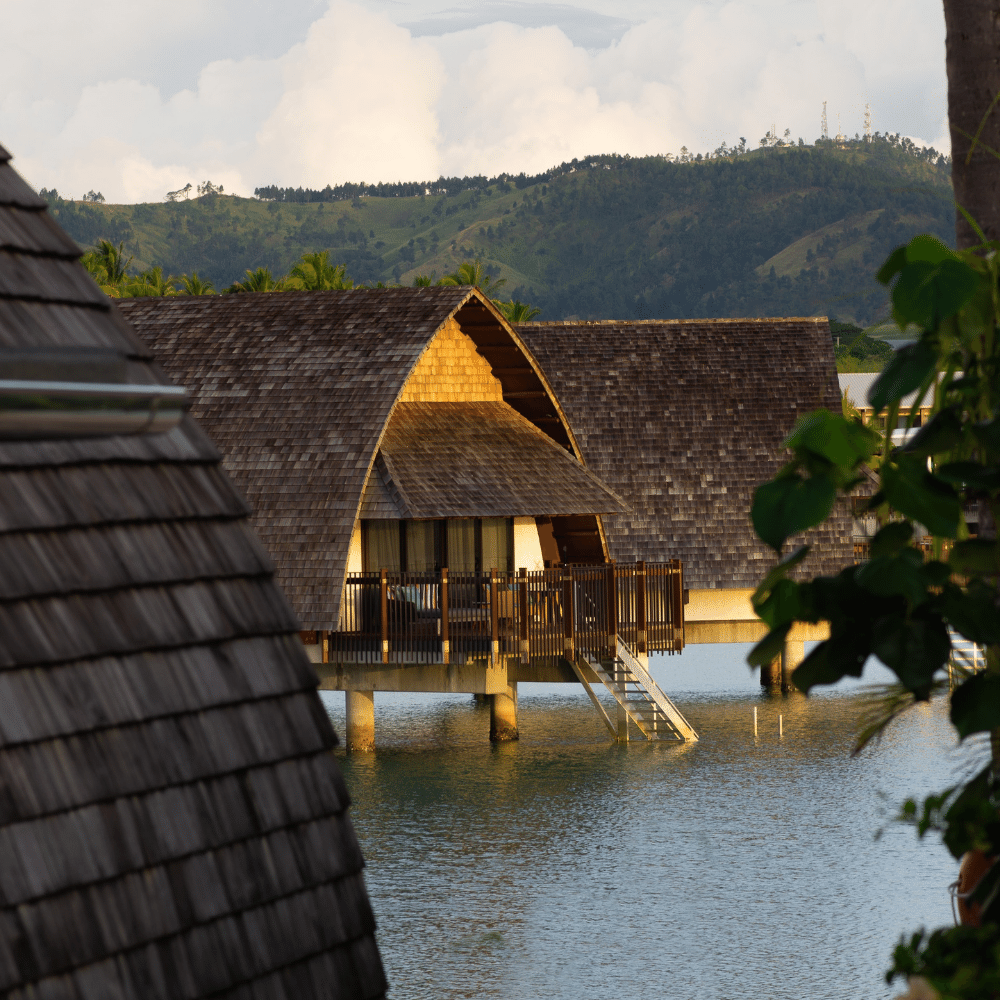
Why Visiting Fiji at the Wrong Time Could Ruin Your Holiday
Fiji is known for its beautiful, idyllic weather and waters during the dry season from May to September. But it's important to be aware that Fiji has a wet season too, from October to April, with frequent rain showers that can disrupt travel plans and potentially bring on cyclones in December.
While some travelers may take advantage of the lower crowds during this period, those looking for sunny days should consider visiting outside of these months. For those who do plan on traveling during the wet season, it's best to prepare accordingly by researching potential risks such as tropical storms or typhoons and preparing alternative activities in case inclement weather arises.
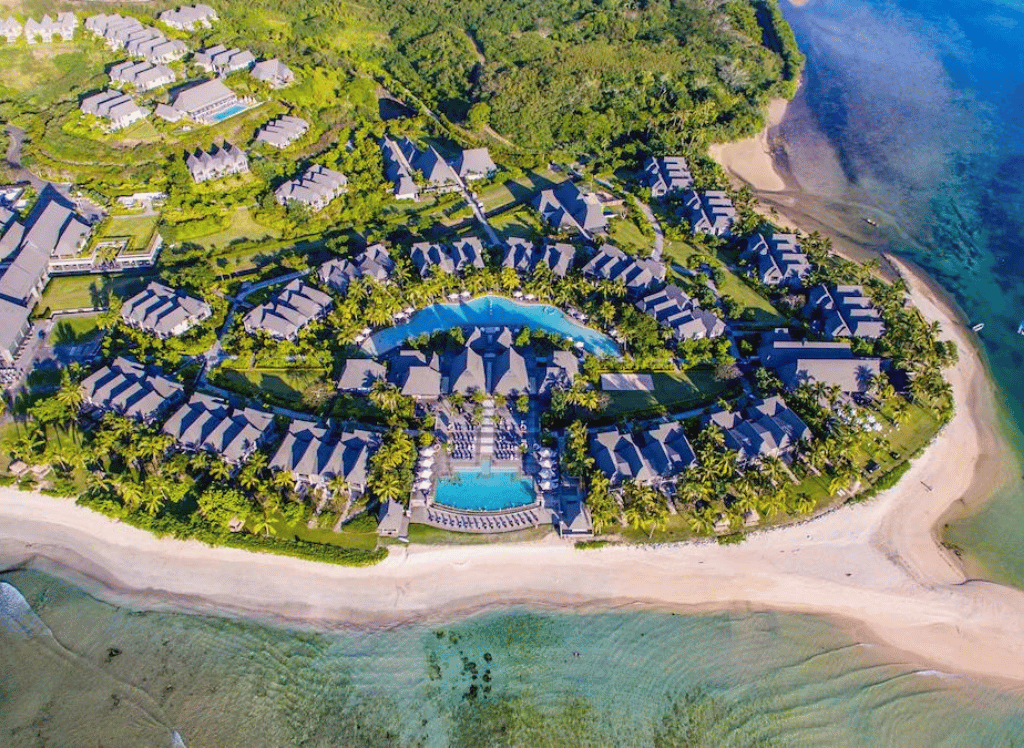
Experience Spring in Fiji
Why we love it.
Experience the magic of Fiji in the springtime! During this season, temperatures are pleasantly warm and days become longer. Despite wet weather conditions due to the start of rainy season, visitors will still be able to enjoy outdoor activities with daily rainstorms usually only interrupting plans for an hour or so. Tourists can also join a variety of festivities such as Diwali Festival of Lights and Fiji Day in October and holiday celebrations throughout December. Enjoy ‘Fiji Time’ at its finest - come explore one of the most beautiful countries in the world during its off-season when things slow down and you can truly relax away from it all.
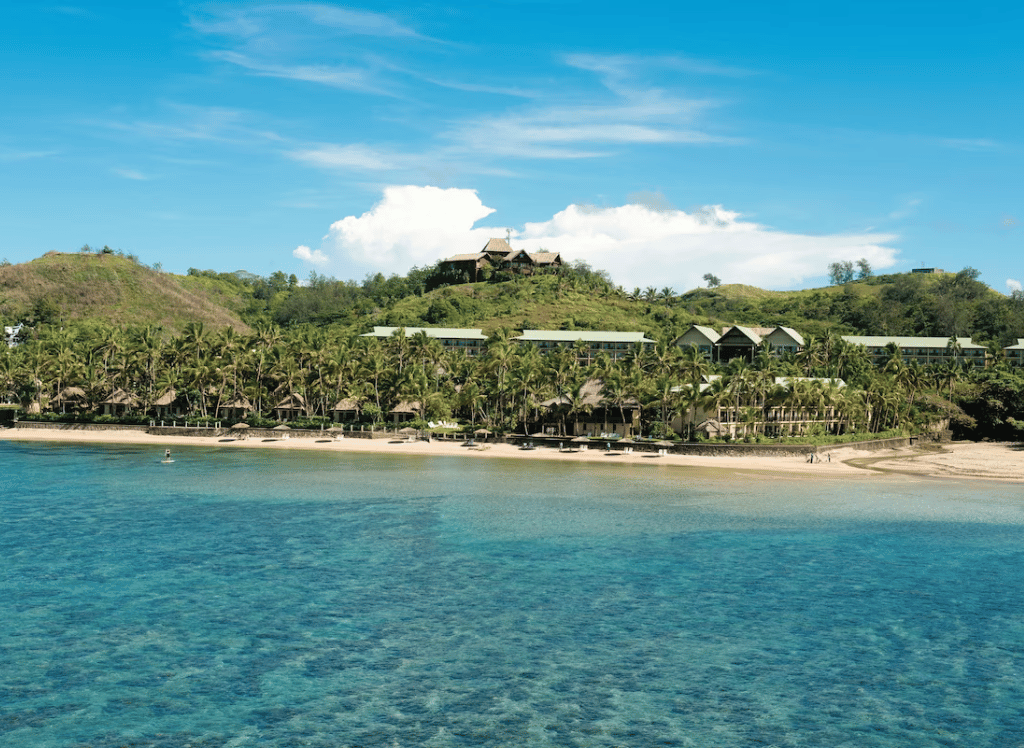
Escape the Heat and Enjoy a Summer Paradise
Fiji is an ideal destination for those looking to escape the summer heat and enjoy a paradise-like atmosphere. With days that can reach up into the 90s°F and nights in the 80s, its hot, tropical climate is perfect for those seeking warm weather. However, visitors should remember that Fiji experiences heavy rainfall during these summer months from January to March, increasing humidity levels throughout the day and occasionally leading to cyclones.
Despite this wet season being considered low travel by most standards, there are still some great advantages if you decide to visit at this time of year. There will be more than 13 hours of sunlight each day giving you plenty of opportunity explore your surroundings or take part in some water sports like kayaking or snorkeling over coral reefs. But it’s not all about outdoor activity – there’s also festivals throughout summer such as Holi Festival which celebrates colour and joy with music and dance!
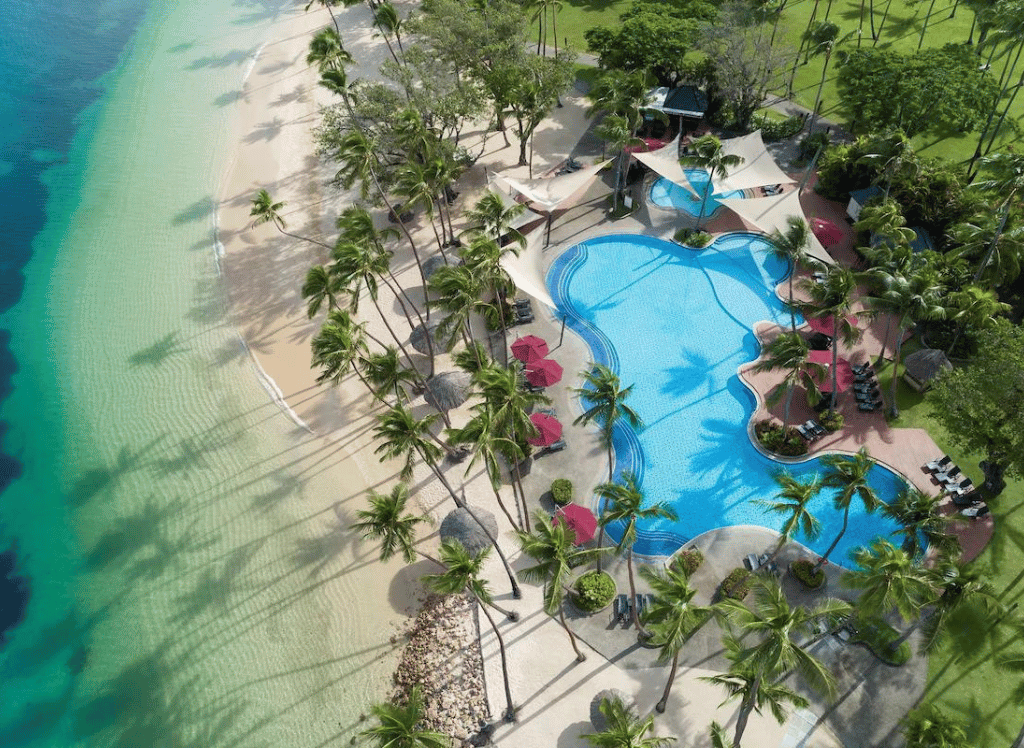
Fall in Love with Fiji: An Unforgettable Autumn Experience
Fiji is the perfect destination for travelers seeking an unforgettable autumn experience. From April to June, visitors can take advantage of favorable conditions while avoiding the tourists crowds that arrive in later months. The weather starts to cool in April and rainstorms become less frequent, leading up to balmy temperatures in May.
June marks the beginning of peak season when outdoor activities are ideal with 10-11 hours of daylight each day. During this time, music festivals like International Jazz and Blues Festival and World Music Festival add a festive touch to your visit. Whether you want to relax or explore outdoors, Fiji has something special waiting for you during these shoulder months.
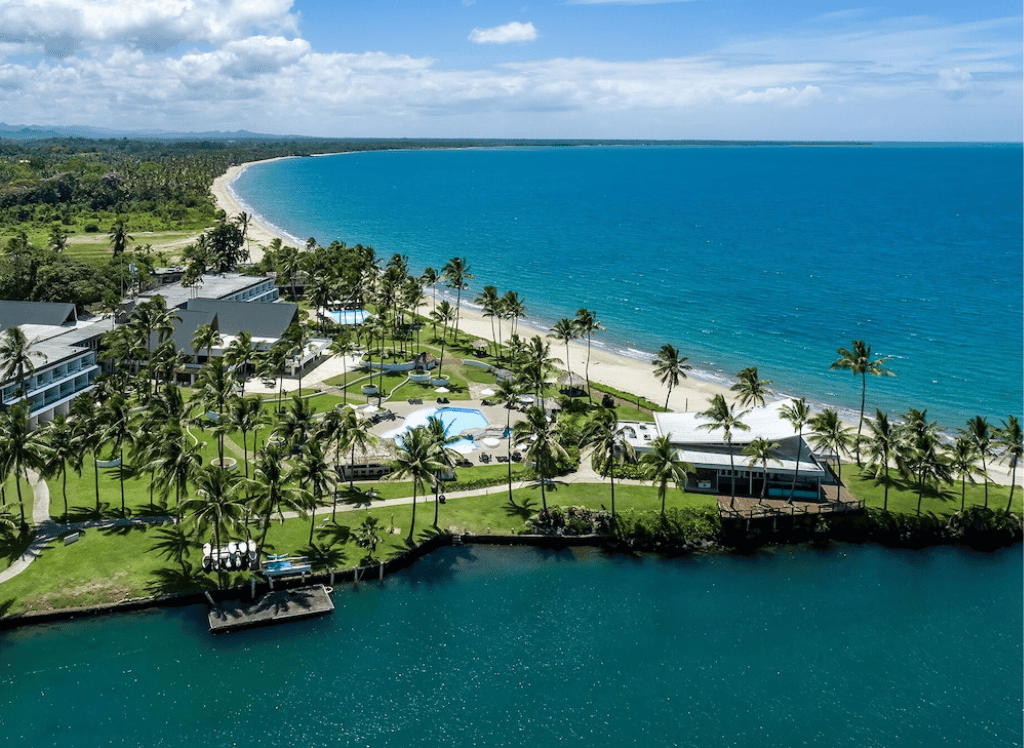
Escape the Cold and Enjoy a Winter Paradise
Winter in Fiji is the ideal time to escape the bitter cold of other parts of the world and experience a winter paradise. From July to September, visitors can enjoy clear skies with comfortable temperatures during the day and cooler temperatures at night. This season also sees little rainfall and humidity, making this an attractive time for outdoor activities like snorkeling, hiking or excursions.
Adding to its popularity are holidays from Australia and New Zealand that occur during these months as well as special events such as Bula Festival in July or August each year and Fiji Regatta Week every September. With all it has to offer, winter in Fiji truly is a unique experience not be missed!
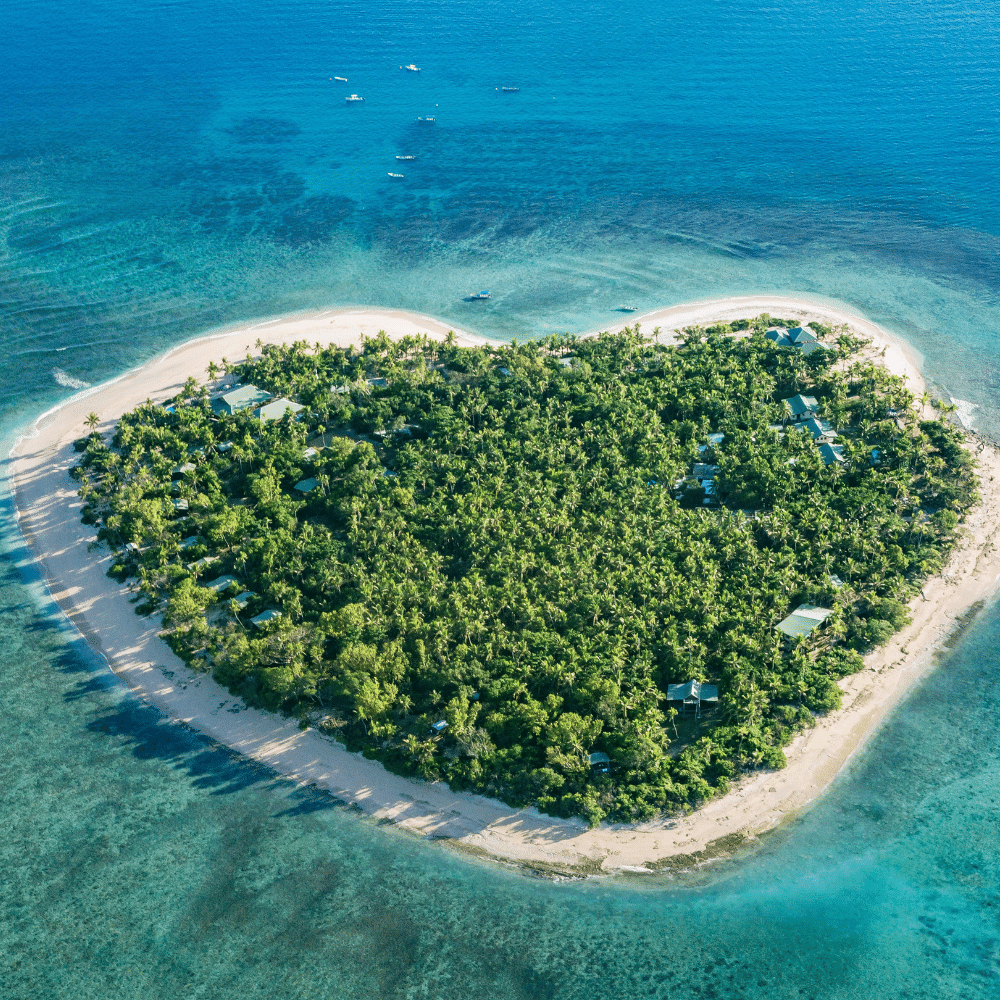
What Activities You Can Enjoy While in Fiji
Fiji is a tropical paradise that offers visitors an abundance of activities to enjoy during their stay. From relaxing on pristine white-sand beaches and snorkeling in the crystal clear waters, to taking part in exciting adventure excursions and exploring its lush rainforests, Fiji has something for everyone. Whether you’re looking for a romantic escape or an action-packed holiday with your friends, Fiji can provide it all. With its warm climate year round and friendly locals, this stunning destination is sure to leave lasting memories long after you depart. Here are some of our favorites:
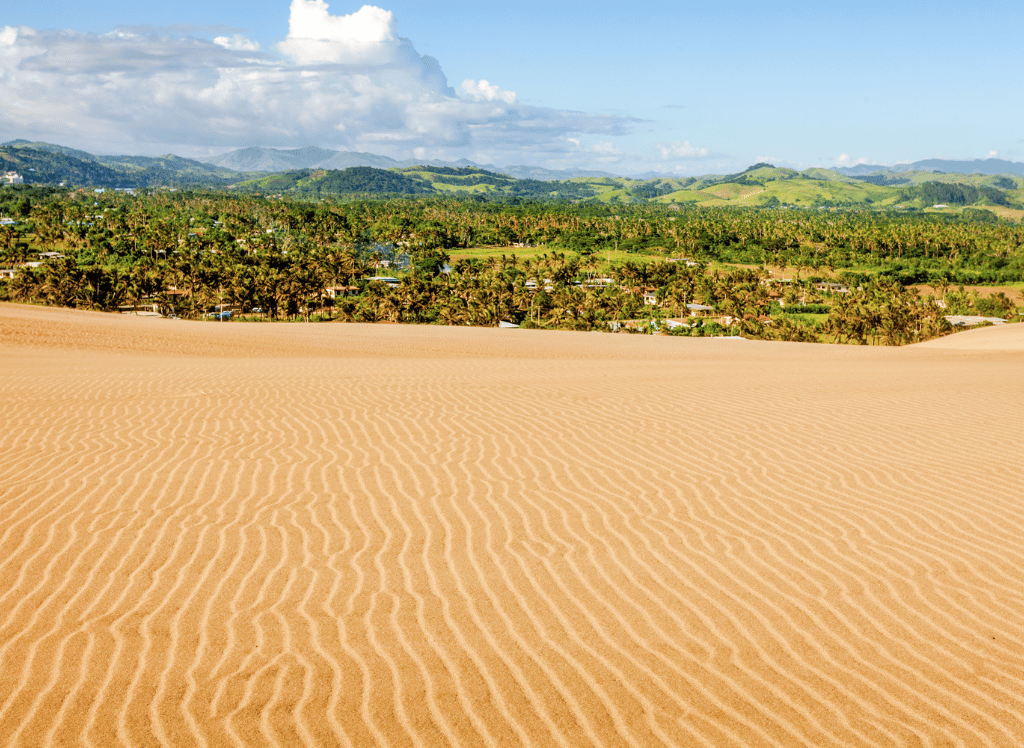
1. Exploring the Majestic Beauty of Sigatoka Sand Dunes National Park
Sigatoka Sand Dunes National Park is an incredible destination for nature-lovers looking to explore unique landscapes. The towering dunes, reaching up to 60 meters in height, offer remarkable views of the Viti Levu Island coast. Hiking trails throughout the park let visitors experience this majestic beauty firsthand and discover a range of plant and wildlife species living here. Whether you're looking for an adventure or just time to take in the stunning natural scenery, Sigatoka Sand Dunes National Park offers something for everyone!
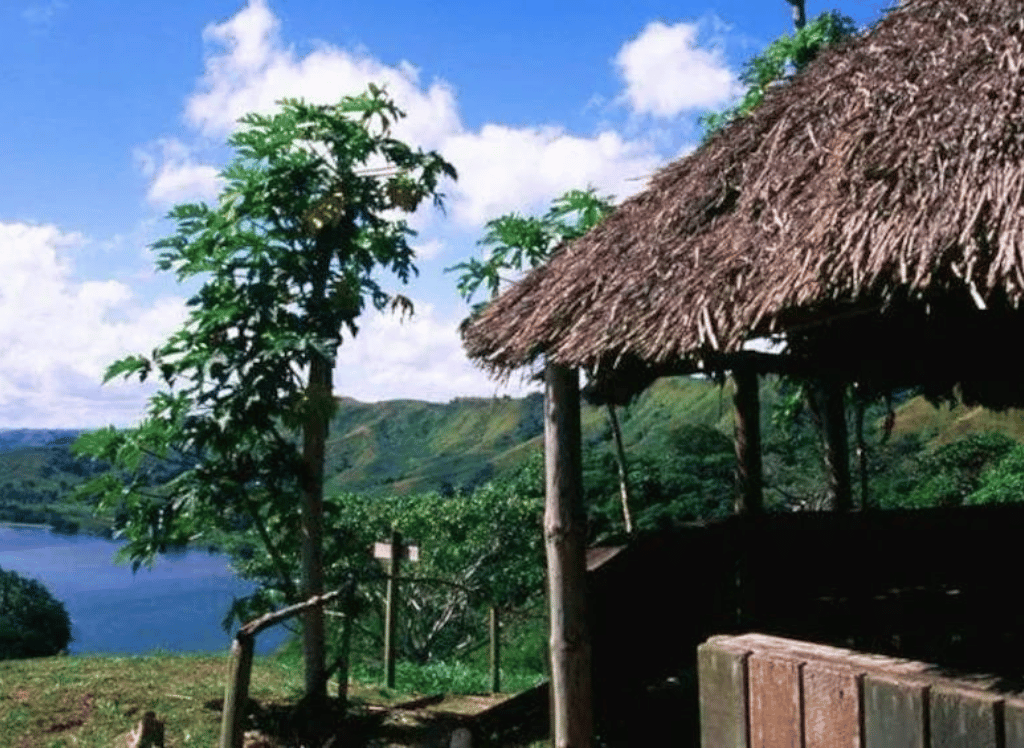
2. Catch a Glimpse of the Wild at Kula Wild Adventure Park
Kula Wild Adventure Park in Viti Levu, Fiji is a one-stop destination for family fun. Whether you're looking for an adrenaline rush on the zip-line course or just want to relax at the water park, Kula Wild has something for everyone. The pathways are also home to friendly crested iguanas that visitors can get up close and personal with, making this unique park a great place to experience some of Fiji's wildlife.
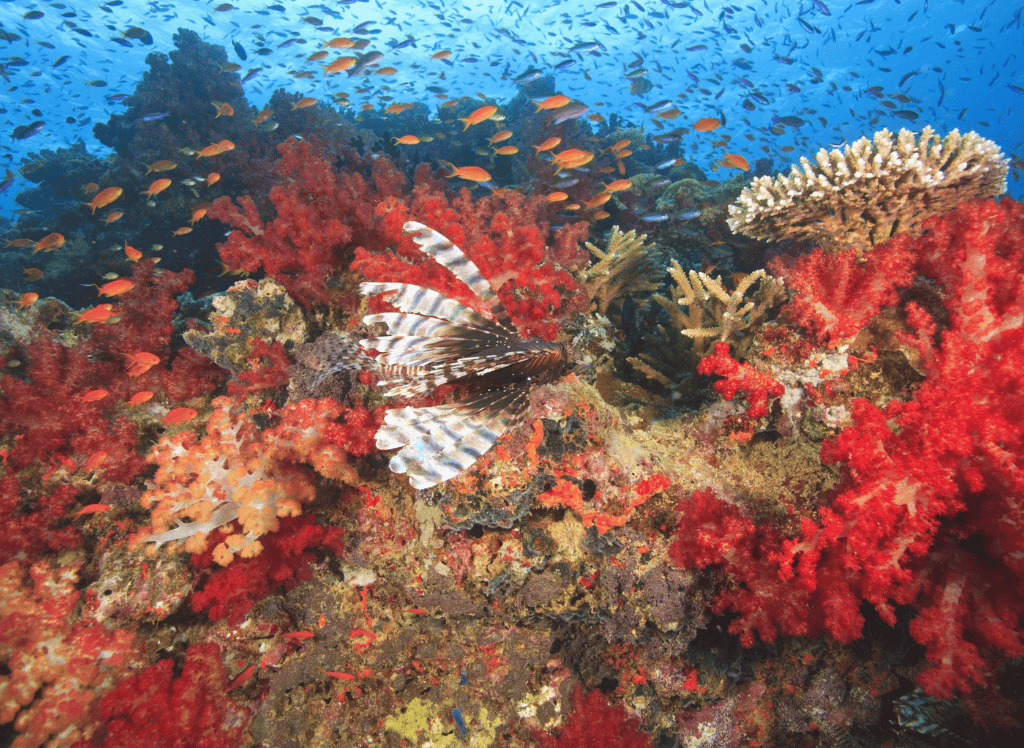
3. Unlock the Wonders of Beqa Lagoon
Beqa Lagoon offers some of the best scuba diving experiences in the world. Located along one of the largest barrier reefs on Earth, Beqa's crystal clear waters give adventurers a chance to explore vibrant coral coast gardens and unique shipwrecks filled with reef sharks and other marine life. Fall and winter are especially popular seasons to dive into this magical underwater utopia.
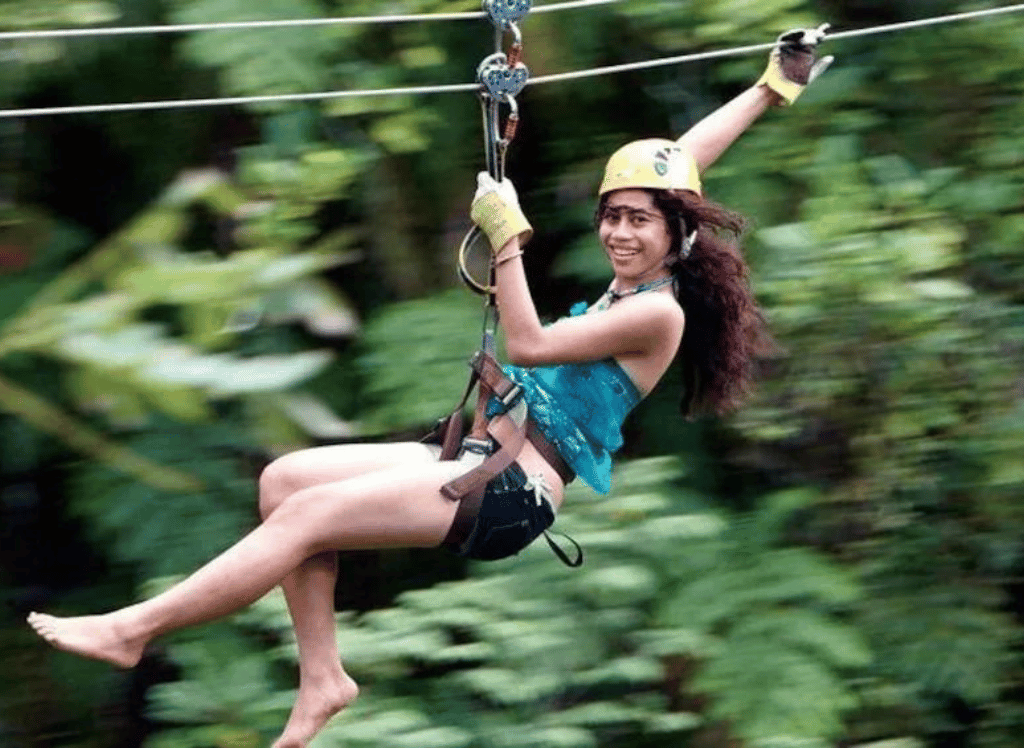
4. Experience Ziplining Through Fijian Canopies
For an unforgettable experience, the Nadi Zip Line Tour is a must-see. Located at Tau Village (Momi Bay), just 35 minutes from Nadi, this adventure offers 5km of zip lines with 16 spectacular zip lines. It's the highest, fastest and longest zip line in Fiji that will take your breath away with its incredible caves and canyons overlooking breathtaking ocean views. The tour runs twice daily at 9:00am and 2:00pm for 3 hours and includes lunch. Explore one of Fiji's most beautiful areas while enjoying some thrilling ziplining!
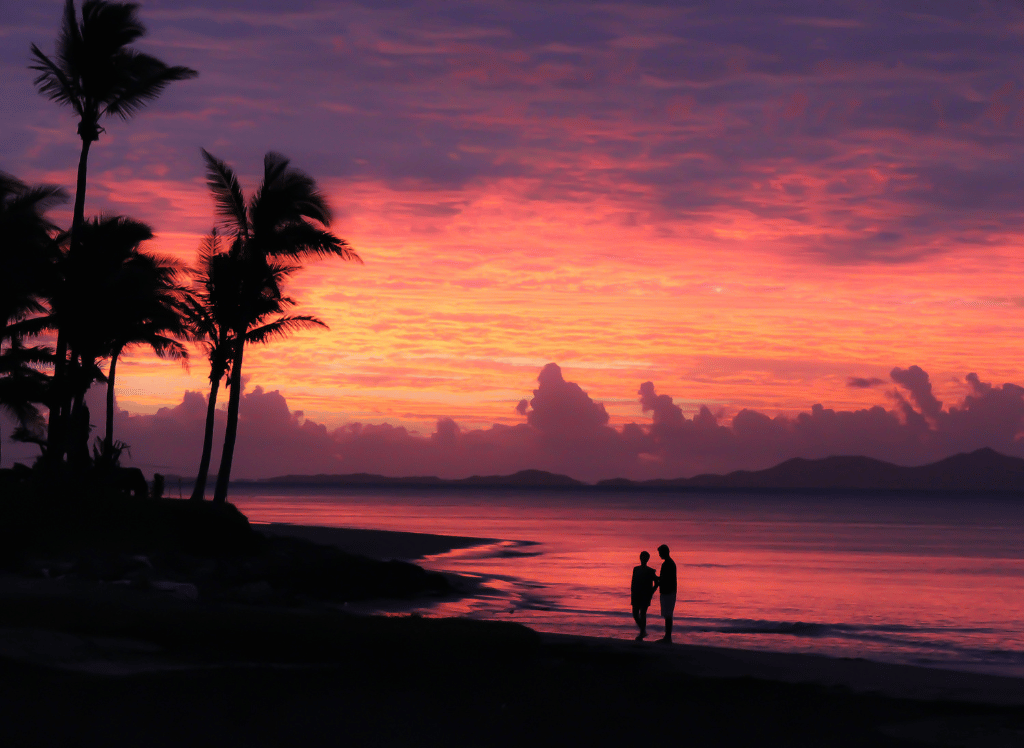
5. Unwind and Recharge on the Picturesque Denarau Island
Denarau Island, in the Fiji Islands, is the perfect place to unwind and take a break from everyday life. From its picturesque scenery to its abundance of activities such as swimming, kayaking and enjoying local entertainment, Denarau offers something for everyone. Those looking to soak up some sun can watch the famous island sunsets while immersing themselves in nature's beauty. Spend a day or two here at this paradise spot, away from the hustle and bustle of city life – you won't regret it!
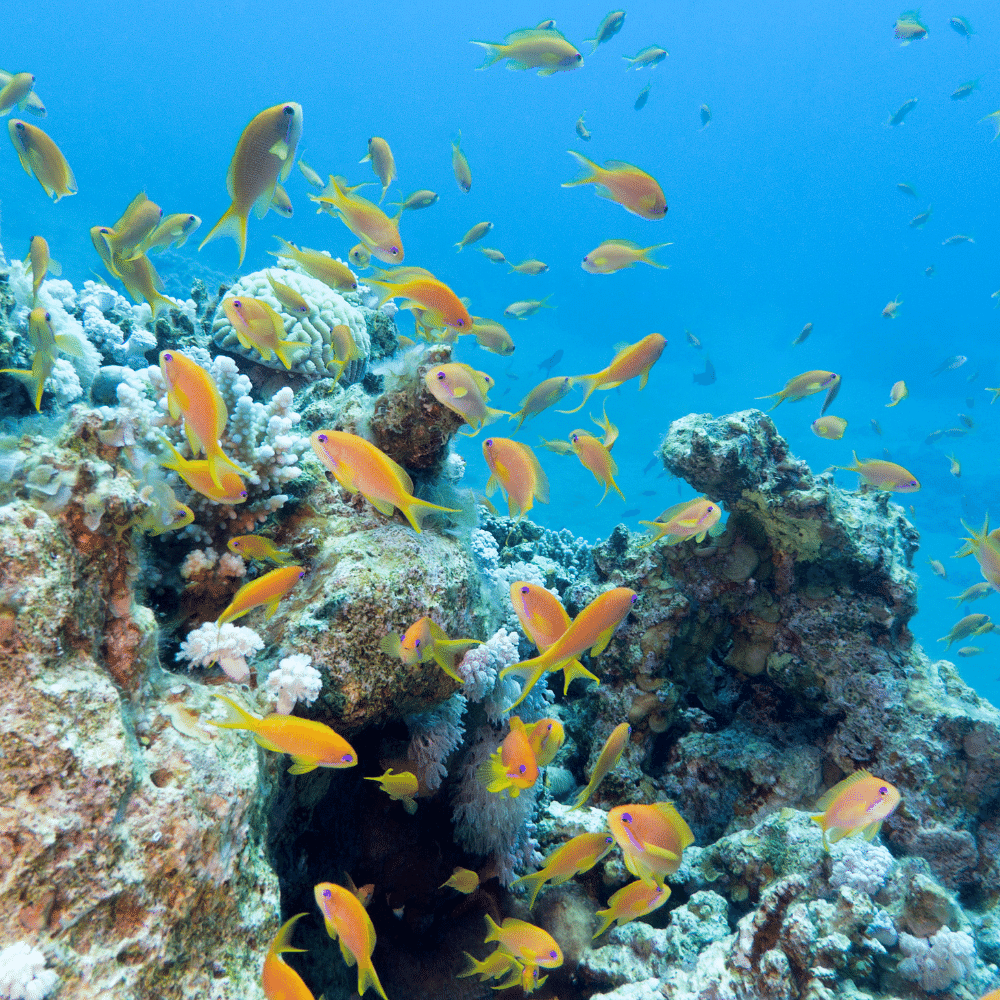
Best Time to Visit Fiji FAQs
It can be hard to make decisions about anything, especially when it comes to traveling.
You have questions, and we have answers! But you don't want to spend hours poring over information that might not even be accurate.
We've got the best time to visit Fiji FAQ for you right here! This list of Frequently Asked Questions will help clear up any confusion and help you make your decision with total confidence.
1. Where to Stay in Fiji?
The best place for you to stay in Fiji will depend on your individual needs and preferences. However, some of the most popular places to stay in Fiji include resorts on the beach, luxury villas with private pools, and eco-lodges nestled in the jungle.
If you're looking for a luxurious beach escape, then one of the resorts on Denarau Island or Viti Levu is a good option. These resorts offer beautiful ocean views, world-class amenities, and attentive service.
If you're looking for a more relaxing and private experience, then consider renting a villa with its own pool. There are many options to choose from, so be sure to do your research and find one that fits your budget and needs.
If you're interested in exploring Fiji's natural beauty, then an eco-lodge may be the perfect option for you. These lodges offer rustic accommodations in stunning locations such as rainforests, volcanoes, or coastal areas. They also typically have activities available such as hiking, swimming, and snorkeling which allow guests to experience all that Fiji has to offer.
2. What are the visa requirements for Fiji?
There are no visa requirements for Fiji for citizens of most countries. For a full list of countries and the length of stay that is allowed, please see the official website of the Fiji government.
3. What should I bring with me when I visit Fiji?
You should bring your passport, sunscreen, insect repellent, swimwear, and a hat. You may also want to bring a raincoat or umbrella, as the weather can be unpredictable.
4. What is the currency used in Fiji?
The currency used in Fiji is the Fijian dollar (FJD). Be sure to exchange your currency into FJD before you arrive in Fiji, as it is not readily available there.
5. What should I expect when I arrive in Fiji?
When you arrive in Fiji, you will be required to have a valid passport and proof of onward travel. You will also need to purchase a tourist visa if you do not have one already.
6. What to Pack for my Fiji Trip?
When planning your vacation to Fiji, it's important to pack appropriately so that you can enjoy your time spent there. A few key items to remember include swimwear, sunglasses, and sunscreen – all of which will come in handy while enjoying the beautiful beaches and tropical climate.
Additionally, it's a good idea to bring along some lightweight clothing such as shorts and tank tops, as well as sandals or other comfortable shoes. If you're planning on doing any hiking or exploring the island, make sure to also pack a hat and insect repellent. And finally, don't forget your passport and other necessary travel documents!
7. How Many Days Do You Need to Experience Fiji?
Fiji is a beautiful and popular destination for travelers from around the world. With over 300 islands to explore, it's easy to see why visitors flock here in droves. But with so much to do and see, how long should you stay? The answer depends on what your goals are while visiting Fiji; however, experts recommend staying at least one week in order to experience all that this stunning country has to offer. From relaxing beach days on resort beaches, exploring Suva or taking day trips between other islands like Vanua Levu or Taveuni - there’s something for everyone! Just remember not to fill up your itinerary too quickly as locals refer to Fiji as “Fiji Time” - allowing time for relaxation and taking things slowly is essential when it comes enjoying all that this paradise has to offer.
Final Thoughts About the Best Time to Visit Fiji
When is the best time to visit Fiji? The answer isn’t as straightforward as you may think. Depending on what you’re looking for, there are several times of the year that would be perfect for a trip to this idyllic island nation. If you want to avoid the crowds and enjoy lower prices, consider traveling from May to October. However, if you want to make sure you catch some of the famous Fijian sunsets, plan your trip between November and April. No matter when you go, we can guarantee that you won’t regret spending your vacation in Fiji!
Looking for a way to spice up your upcoming trip? Look no further than Amazon! With a free 30-day trial of Amazon Prime Music , you'll have access to over 2 million songs to soundtrack your adventure. Or, if audiobooks are more your speed, try out Audible Plus for two free books . And for those looking to streamline their packing process, a FREE 30-day trial of Amazon Prime ensures that everything will arrive in just two days - perfect for those last-minute additions. Don't miss out on these unbeatable offers and make your journey one that you'll never forget!
Happy Travels! :)
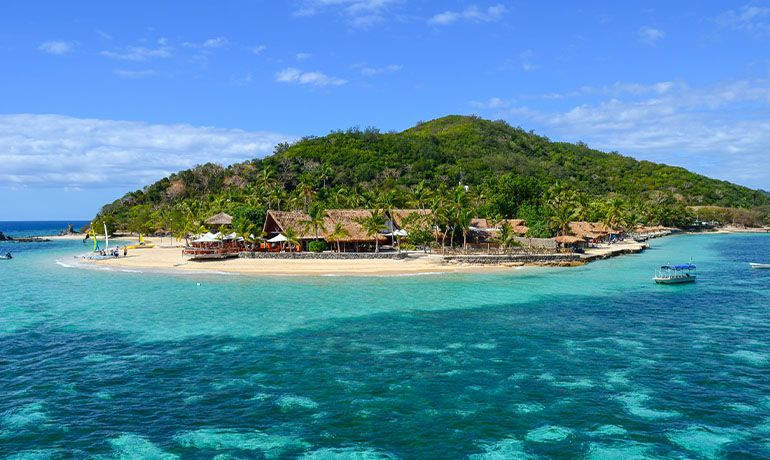
Best Time To Visit Fiji: Climate & Travel Guide | Marchay
Bula! This local salutation is likely the first thing you hear once you touch down in the island paradise known as Fiji. Plan a getaway to this South Pacific destination where you’ll be immersed in the island’s natural beauty and pulsating culture, and learn the true meaning of what it means to be on ‘Fiji Time.’
If Fiji is on the top of your bucket list, you’re likely wondering when is the best time to visit. Find out what to expect when visiting Fiji during the dry vs. wet season, activities to add to your itinerary, and how to make your dream Fiji vacation become a reality.
Table of Contents
When Is The Best Time To Visit Fiji?
Fiji is characterized by two seasons, dry season and wet season. Fiji has thriving tourism all year round. However, some times of year are better to visit than others if you want to maximize your time between its islands.
The best time to visit Fiji is during the dry season. The dry season lasts from May to September. These months have the ideal weather of clear, sunny skies, warm temperatures, and little rainfall, making it feel like paradise.
The dry season spans across the fall and winter in Fiji. If you’re looking for a more laid-back travel experience to indulge in ‘Fiji Time,’ it’s recommended to visit in the fall shoulder months when there are fewer crowds. However, since the weather is still transitioning, there can still be days of rain or high humidity. If crowds aren’t a concern and instead you want to experience the best Fiji weather, the winter season is the best travel time.
Some travelers may prefer to visit Fiji during the wet season. The only downside to the wet season is the chance of rainstorms, which occur daily but are short-lasted. Spring falls within the wet season but features many popular festivals.
When Is The Worst Time To Visit Fiji?
When most people think about Fiji, they imagine the idyllic island weather with clear waters and skies while lounging all day on the beach or enjoying cultural activities with the local Melanesian peoples. And while this sounds like paradise, Fiji isn’t like this all year long. There are times of the year when many people avoid traveling to the island due to the change in weather patterns that can affect your trip itinerary.
The worst time to visit Fiji is during the rainy season, from October to April. The wet season typically has heavy rain showers every day during the afternoon. Along with the rain, the waters have less visibility for popular activities like snorkeling. Although a rare occurrence, Fiji experiences cyclones. December is the worst month to visit Fiji because it has the highest chance of cyclones hitting the island.
Since the rain is brief, some travelers prefer to visit Fiji during the wet season. Fiji’s busiest travel season during the dry winter can be unfavorable for travelers looking to avoid big crowds at the resorts or on the beaches.
Visiting Fiji In The Spring
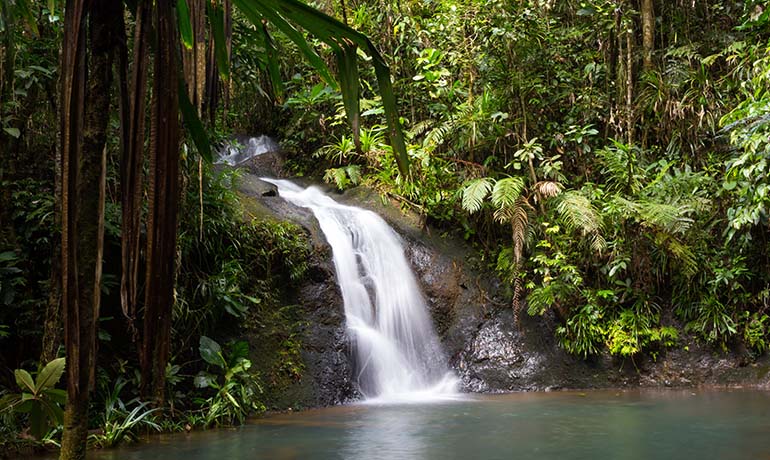
Spring in the southern hemisphere occurs during the months of October to December. These months fall within Fiji’s wet season. The most noticeable characteristic of these months is the daily rain showers across the islands. However, it can still be a great time to visit and enjoy one of the most festive times of the year.
With spring following the cooler winter months, visitors can expect temperatures to rise and the days to get longer. Spring typically has average temperatures in the low-mid 80s and low temperatures in the 70s.
The wet season creates daily rainstorms during the afternoons in Fiji. These showers typically only last for an hour before returning to the normal sunny days. If you have activities planned during the day, be sure to account for the brief change in weather. However, it usually won’t alter plans too much!
Tourism in Fiji begins to slow during the spring. Up until mid-October is the high season. It’s a great time to experience the true ‘Fiji Time’ and participate in the numerous countrywide celebrations. Spring is a popular time for events, including the Diwali Festival of Lights and Fiji Day in October or the month-long holiday and New Year celebrations in December.
Visiting Fiji In The Summer
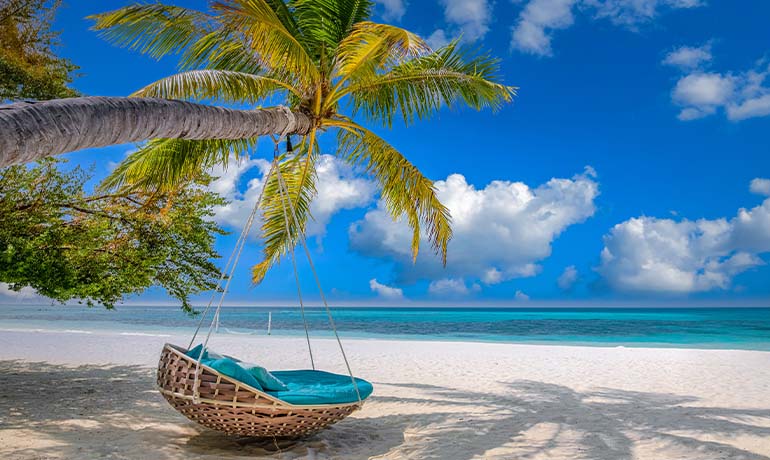
Summer in Fiji occurs in the middle of the wet season. The summer months of January to March receive the most rainfall. These heavy tropical storms increase the chance of cyclones, although they don’t happen often.
Fiji’s summers are a mix of the hottest and wettest times of the year. Temperatures can reach over 90 °F during the day and remain in the 80s at night. January is the hottest month in Fiji. The daily rain showers significantly increase the humidity, so days can feel even warmer.
Summer is the low season for travel since most travelers prefer other favorable weather conditions during their trip. If you’re visiting during these months, there are a few benefits. Summer has the longest days out of the year, with over 13 hours of sunlight. Also, it’s a great time to visit the many waterfalls in Fiji to see them flowing at their maximum capacity.
The top of the year experiences many local religious Hindu festivals, most notably the color-filled Holi Festival.
Visiting Fiji In The Fall
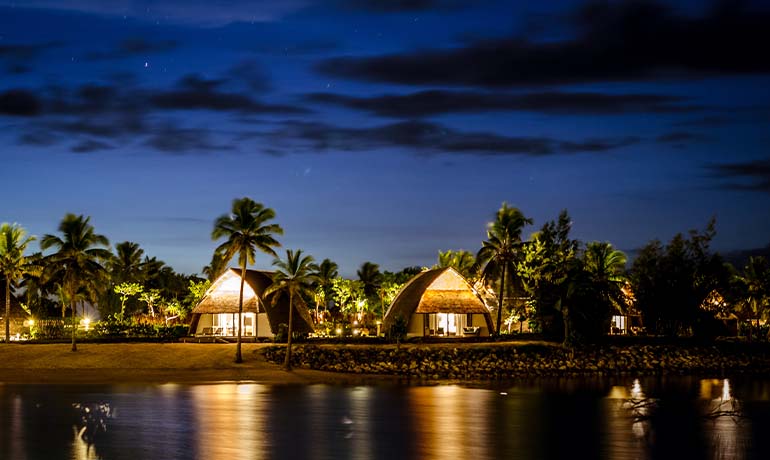
Fall is one of the transitional months in Fiji, where it shifts from the hot, wet summer to the cool, dry winter. These shoulder months of April to June are some of the best times to visit Fiji. You’ll benefit from the changing weather to favorable conditions while avoiding the tourist crowds that arrive during the latter months.
The wet season ends in April, so you’ll start to see a dramatic change in the weather during this month. Temperatures drop below the 90-degree heatwaves in March, and the daily rainstorms begin to settle. However, visiting in April can still have weather similar to winter if visiting earlier in the month.
May is one of the best times to visit Fiji. The weather resembles the islands’ summer temperatures, and it occurs just before the peak season. June, the end of the fall, is the start of peak travel season.
Travelers looking to enjoy outdoor activities in Fiji should consider visiting during the fall. The long days give plenty of time to spend outdoors with an average of 10-11 hours of daylight. In addition, it’s a popular time for music festivals, such as the International Jazz and Blues Festival in May and the World Music Festival in June.
Visiting Fiji In The Winter
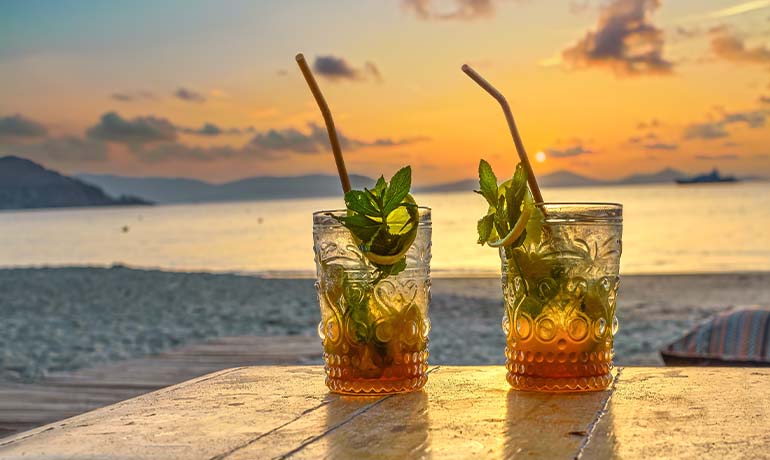
Winter in Fiji is unlike what most people think about. Because for this island chain, it’s the time of year when it experiences the best weather and, as a result, is the most popular time to visit. Since Fiji is in the southern hemisphere, winter occurs from July to September.
The peak season in Fiji is during the winter, when it receives most of its international visitors. It coincides with the holiday travel season for many Australians and New Zealanders, amongst many other international visitors.
The dry season is in full effect during the Fiji winter. You can expect clear skies and comfortable temperatures in the mid-80s during the day and the high 60s at night. In addition, it has little rainfall and humidity. Thanks to the weather conditions, it’s the ideal time to enjoy outdoor activities like snorkeling, hiking, or daytime excursions without the threat of a mid-day rainstorm. In summer, you can also enjoy the famous week-long Bula Festival happening in July or August every year and the Fiji Regatta Week in September.
With its perfect tropical climate, Fiji because very busy in the winter. Its resorts, tours, private islands, and other activities are frequently booked. We assist our Marchay Members in preparing for their trip to ensure they fill their itineraries with the experiences they’re hoping for.
Join Marchay
For travelers who want a bespoke, personalized travel experience, get in touch with an experienced Marchay Travel Advisor to guide and plan all your traveling needs.
Attractions & Things To Do In Fiji
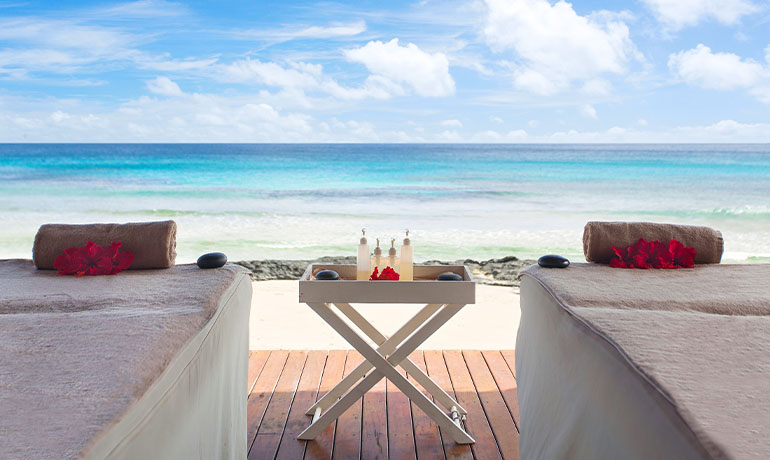
#1. Trek Through Sigatoka Sand Dunes National Park
The Sigatoka san Dunes National Park is one of the smallest in the world but home to some of Fiji’s largest dunes. Hiking trails along these coastal dune landscapes rise to 60-meters tall, providing views overlooking the Viti Levu Island coast.
#2. Participate In A Kava Ceremony
Visit Turtle Island to immerse in one of the most famous local traditions — the Kava Ceremony. Kava is a traditional Fijian dish made from the yaqona root. Watch as the locals grind the root into a communal bowl which is then passed around for everyone to take a drink. Its mild sedative effects make you feel relaxed and truly settle into Fiji Time.
#3. Catch A Big Wave At Cloudbreak
Seasons surfers flock to Fiji every year during the fall and winter months to put their skills to the test at Cloudbreak. This world-famous surf spot has some of the most consistent waves that reach heights of 25-ft and beyond.
#4. Iguana Spotting At Kula Wild Adventure Park
Families will have hours of fun in Fiji’s Kula Wild Adventure Park in Viti Levu. Stroll the pathways between the zip-ling course and water park. Keep your eyes out for crested iguanas walking the same paths that are friendly enough to hold.
#5 Explore The Great Astrolabe Reef
Climb into your wet suit and put on your flippers to explore offshore Kadavu Island in the Great Astrolabe Reef. It’s one of the best places for diving in Fiji, where you’ll swim alongside marlin, sharks, giant trevally, and more.
#6. Scuba Diving in Beqa Lagoon
Fall and winter are the best seasons to explore the coral coast of the Island of Beqa, one of the largest barrier reefs in the world. Scuba dive offshore to swim among the vibrant marine life like reef sharks, explore underwater shipwrecks, and see why it’s nicknamed the ‘Soft Coral Capital of the World.’
#7. Swim With Manta Rays
Dive beneath the surface in the Nanuya Balavu and Naviti Island channels to witness the majestic Manta Rays seemingly ‘fly’ through the water while flapping wings spanning up to six meters wide!
#8. Zipline Through Fijian Canopies
Reach top speeds while zipping over Fiji’s lush jungles in the Sabeto Valley with Sleeping Giant Zip Line. You’ll glide between bases while enjoying views of the verdant landscapes just outside of Nadi, the largest island.
#9. Explore The Oho Caves
Take a Tao Village Tour where local guides take you on a walk through time into the Oho Caves, where their ancestors lived more than 4,000 years ago.
#10. Visit A Traditional Salt Factory
The locals at Vusama Village invite visitors to see firsthand how they produce salt. Tours of their traditional salt factory reveal behind the scenes how salt gets cultivated, harvested, and processed for enjoying in popular dishes like the Kokoda.
#11. Stroll Through The Garden Of The Sleeping Giant
Colorful flowers bloom across the 20 hectares of the Garden of the Sleeping Giant during the island’s wet season. Travel to the Nausori Highlands to see more than 2,000 species of orchids and other native Fiji plants.
#12. Jet Boat Safari Through Sigatoka River
Immerse yourself in Fiji’s history as an expert guide narrates the journey down the Sigatoka River. The award-winning tour lasts a half-day where you’ll cross the coastal town of Sigatoka and navigate with stops at other riverside Fijian Villages, which also use the river as a major transportation system.
#13. Rafting Through The Upper Navua River
Splash your way through the choppy waters of the Upper Navua River as you paddle your way through the Upper Navua Gorge. The river is filled with tons of surprises and thrills while providing scenic views of a thick rainforest surrounding you.
#14. Unwind On Denarau Island
Every hour is Fiji Time on Denarau Island as you delight yourself in the idyllic scenery of Fiji paradise. Whether you want to enjoy water activities like swimming and kayaking, enjoy local entertainment, or witnessing its famous sunsets, there’s always a place for you on the island.
The Bottom Line
Fiji is truly the island paradise that makes the idyllic vacation getaway. With over 300 islands lined with white sand coasts and lush interiors, it’s a place that entices visitors to relax, unwind, and discover the island’s beauty.
We help our Marchay members plan the perfect trip, where you’ll have ideal weather for enjoying all the wonders of the Fiji islands. There is always a reason to visit Fiji, and you now have the necessary resources to find yours. So, make Fiji your next travel destination and see why it’s always considered one of the most beautiful, exotic places in the world.
Frequently Asked Questions
How many days do you need in fiji.
Fiji is a popular travel destination with international visitors arriving from all parts of the world. Many travelers begin their journey on the main island, Nadi, but there are more than 300 other islands to explore. Depending on what you want to do while visiting Fiji, you might have to travel between islands, which can be a short boat ride or even an airplane trip.
While planning your Fiji trip, visit for at least a week. One week is enough time to enjoy all of the best parts of Fiji, including relaxing on the resort beaches, visiting the capital Suva, and traveling to other islands like Vanua Levu and Taveuni. Keep in mind not to fill up your entire itinerary with activities to allow time for relaxation and to take things slowly during your stay — something the locals like to refer to as “Fiji Time.”
What should you avoid in Fiji?
Fiji often comes to mind when you think about a picture-perfect island destination. The palm tree-lined white sand beaches that touch the clear waters of the Pacific are the perfect setting for rest and relaxation. However, there are a few things to keep in mind when visiting Fiji to avoid.
One of the most important things to consider in Fiji is the weather. In addition to its wet season, certain months are considered the cyclone season. This period peaks in December and should be avoided if there are any signs of incoming cyclones.
Tourism is a major industry in Fiji. But with mass tourism comes common tourist scams. Avoid falling for common scams, which may include overcharging on tours and taxi rides, vendors, and theft.
Other things to avoid in Fiji can be culture-related. For example, in some communities, it’s required that your shoulders and knees are covered. Be sure to respect these customs when visiting local villages and religious sites.
What is the best month to visit Fiji?
Tourism in Fiji peaks during the winter, but is it the best time to visit Fiji? If you’re looking for the best weather for enjoying the outdoors, this is the best time to visit the island. Fiji is located in the southern hemisphere, so its winter occurs during the months of July to September.
Although the peak travel time, winter can get crowded with tourists who flock to the island to take advantage of the most beautiful time of year. The best overall month to visit Fiji is in May, which is the start of the dry season, but right before the large crowds arrive. It gives the best of both worlds for enjoying the great weather and the quiet of the island.
Marchay Member Travel
15+ nights in 5* hotel
Private, First or Business Class fights
Minimum $25,000 travel spend /year
One large vacation /year
Loves travel and discovery
Best Fiji Travel Tips
Best time to visit fiji, want to know the best time to visit fiji, as specialists on fijian travel, we’re here to help.
Fiji’s temperate climate, white sand beaches and coconut palm trees create a picture-perfect illustration of an idyllic tropical island, but it’s important to know when the best time to visit Fiji is for your vacation.
The good thing is Fiji weather is never too cold for a lounge on the beach and never too hot for a walk through some of the most well-preserved rainforests in the world.
However, there are a few key factors to consider before deciding when the best time to visit Fiji is for you.
Average Temperatures in Fiji
The climate in Fiji is temperate and warm year-round, with temperatures averaging in mid to high 80-degrees Fahrenheit. Temperatures rarely peak above 90-degrees in the summer or dip below 60-degrees in the winter.
This balmy climate has earned Fiji a reputation as one of the most desirable holiday destinations in the world, with a long ideal vacationing season between late March through early December.
But there are some slight variations in weather throughout these months to take note of when you plan your vacation to Fiji.
From May to October , you can expect pleasant conditions with temperatures staying at about 80-degrees Fahrenheit. Tropical humidity is decreased making for dry, warm conditions that are perfect for swimming, sunbathing, hiking or enjoying any of Fiji’s best tours and activities.
November to April is regarded as Fiji’s summer season. Temperatures are a bit warmer and with an increase in precipitation, tropical humidity begins to rise.
Rainfall in Fiji
People love the natural, lush landscapes of Fiji and other tropical destinations, but they don’t often think about how it stays lush and tropical. Fiji’s tropical climate makes a perfect habitat for more than 100 unique species of thriving flora.
And what makes plants thrive?
Rain – and lots of it.
Like all South Pacific islands, a lack of climate extremes is instead replaced by a distinct wet and dry season.
Rainfall tends to be most common in January and February , but that isn’t to say you’ll be in for a guaranteed wash-out if you visit during the wet season.
The western portion of Fiji including Nadi, Mamanuca Islands and Yasawa Islands get much less rain than the islands to the east, so if you’re planning a trip during the wet season, it may be ideal to stick to these destinations.
Many heavy showers can be localized and temporary. You could have a sunny morning to enjoy the beach and a soothing afternoon nap under the sound of rainfall tapping the roof of your bure.
If it happens to rain during your vacation in Fiji, take the chance to experience a Kava ceremony, a popular custom when visiting any village in Fiji. Taste the Kava, a relaxing beverage made from the Kava root and presented as a gift to chief guests. Or enjoy a lovo feast and partake in a traditional meal prepared in an underground oven. A rainy day creates an intimate atmosphere ideal for experiencing Fiji’s local traditions.
Tropical Storms and Cyclones
Along with the rainfall of the Fijian summer months, the South Pacific is at times subject to cyclones.
Cyclones are tropical storm systems with very low to severe risk levels. While the summer season does have an increase of possible cyclone activity, the chance of cyclones making landfall is mostly a threat during the month of February .
While this might not seem be the best time to visit Fiji, you may have some hope if you’re planning a February getaway. Due to weather patterns and averages, cyclones generally only become a severe risk for the islands every other year, so it is totally possible to know ahead of time and book accordingly.
High – Low – Shoulder Seasons – What’s the best time to visit Fiji?
Does your ideal Fiji visit include warm weather, little humidity, little to no rain and a low cyclone risk?
So does everyone else’s!
You’re certainly not alone in wanting it all on your Fiji vacation. That simple law of supply and demand makes things a bit pricier. However, there are different seasons that may be better suited for your Fiji vacation. It all depends on what you want to do in this tropical paradise.
High Season
Some might say that high season is the best time to visit Fiji. High season occurs during Fiji’s winter months and runs from about June to September , peaking in June, July and August when conditions are dry and the climate is mild.
If you’re looking to warm up under the Fijian sun, early June or late September are best for catching rays during high season. The temperatures remain warm enough to enjoy sunbathing and swimming, or a range of Fiji’s most popular water activities like boat cruises, tours and diving. Though diving in Fiji is great year-round, water visibility is at its best during high season, allowing divers to see more than 100ft on any dive.
It’s also important to note this season falls during winter break for many Australians and New Zealanders. It’s common to see a lot of families vacationing in the tropics, making for a busy season. Accommodation and flight prices will be at their highest, but can you really put a price on an idyllic island getaway? Just think of it as the “paradise tax”.
Low season falls between January and March , square in the middle of the wet season. Rainfall begins to increase, but the upside is that flight costs are at their lowest and accommodations are plentiful.
Keep in mind that you’re not necessarily dooming yourself to spend all your time indoors if you travel in the wet season. Rain in a tropical climate is much more tolerable. Though showers can get heavy, they are generally localized and brief.
Besides, when you’re swimming in crystal clear waters on a private island, who cares if you get a little wet from the rain! It’s important to note that isolated rain showers can and do occur in the so-called dry season.
Remember, it’s what keeps the tropics tropical!
This is also when the seas are most calm and allow for dive boats to access more remote islands and reefs. Water temperatures average at a comfortable high 70-degrees Fahrenheit, ideal for swimming and snorkeling. These temperatures greatly attract marine life, especially manta rays, to the countless dive spots around Fiji.
Shoulder Season
In between the high and low seasons are the shoulder seasons. You’ll find cheaper prices during the months of late-April to early-May and October to early-November , balanced with fewer weather extremes.
Shoulder season is probably the best time to visit Fiji for most people.
The rains of the wet seasons either haven’t yet started or are beginning to dwindle. During this time, tropical humidity hasn’t hit full steam. This makes for pleasant weather and less crowded accommodations.
In the shoulder season between October and early November you can still experience the balmy temperatures of the high season while saving with the lower prices on flights and accommodations.
Late April to early May is ideal for visiting Fiji right before the crowded high season begins.
Let’s face it, there’s no wrong time to take a trip to paradise. Depending on your priorities, you can plan the perfect trip to Fiji any time of year.
The wet season can be relaxing in its own way, with warmer waters perfect for snorkeling, but if you’re after less humid temperatures and lounging on the beach all day, it’s best to stick to the dry season.
We can find the best time to visit Fiji for you and get you there without a hitch.
Feature Photo Credit: Adam Selwood
Copyright © 2019 About Fiji. All Rights Reserved.
JOIN OUR NEWSLETTER

How to Become an Au Pair – Requirements You Should Know
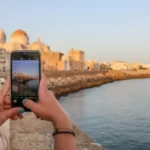
What Is A Travel Enthusiast? – Secrets You Should Know About It

Capital One VentureOne Vs. Quicksilver – Can I Have Both?
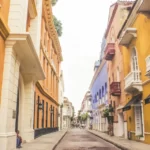
Is Cartagena Safe to Visit in 2023 – What to Pay Attention to

Is Dubai Expensive to Visit – Everything You Should Know
Best time to visit fiji in 2023 – popular time.
- November 28, 2022
- Destinations
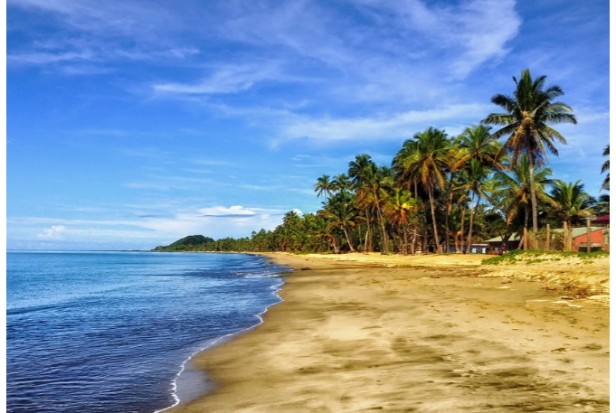
You can find information about visiting Fiji in the dry vs. wet season, activities to add to your itinerary, and how to make your dream A vacation to Fiji becomes a reality.
From June through September, which is regarded as the on or peak season, is the most popular time to travel to Fiji. During this time, a large influx of foreign tourists visit the Fijian islands because it is the dry season.
Table of Contents
When is the Best Time to Visit Fiji?
There are two distinct seasons in Fiji: the dry season and the wet season. All year long, Fiji has a thriving tourism industry. However, if you want to make the most of your time traveling between its islands, there are some seasons that are better to visit than others.
Travel to Fiji is recommended during the dry season. May through September are the drier months. It feels like paradise during these months thanks to the ideal weather of clear, sunny skies, warm temperatures, and little rainfall.
In Fiji, the dry season lasts from fall through winter. Visit during the fall shoulder seasons, when there are fewer tourists, if you’re looking for a more relaxed travel experience to indulge in “Fiji Time.” However, since the climate is still changing, there may still be days with heavy rain or high humidity. Winter is the best time to travel if you don’t mind the crowds and would rather enjoy the best Fijian weather.
The wet season may be when visitors to Fiji prefer to go. The likelihood of rainstorms, which happen every day but are brief, is the only drawback to the wet season. Despite being a wet season, spring has a lot of well-known festivals.
When is the Worst Time to Visit Fiji?
Most people imagine Fiji as an idyllic island with perfect weather, blue skies, and days spent lazing on the beach or engaging in cultural activities with the local Melanesian peoples. Despite sounding like a paradise, Fiji isn’t this way all year round. Many people choose not to visit the island during certain seasons of the year because of the shifting weather patterns that may impact your travel plans.
The rainy season, which lasts from October to April, is not the best time to visit Fiji. Every day during the afternoon during the wet season, it usually rains heavily. Because of the rain, popular activities like snorkeling require less visibility in the water. Fiji is occasionally hit by cyclones, but they are uncommon. Given that there is a higher chance of cyclones hitting the island in December than any other, Fiji is the worst month to travel there.
Some tourists favor visiting Fiji in the wet season because the rainstorms are brief. For visitors hoping to avoid large crowds at the resorts or on the beaches, Fiji’s busiest travel period during the dry winter can be unfavorable.
Where to Go in Fiji
You will have a great time on any of the Fijian islands, but these are some of the most well-liked places to visit while you are there.
Flyers arriving in Fiji will touch down at Nadi Airport on Viti Levu, the largest island in the country. The main island’s attractions, such as Navala Village, Suva, the capital of Fiji, or even rafting down the Navua River, should be visited before rushing off to take advantage of the many delights the smaller islands have to offer.
Despite being one of the bigger islands in Fiji, Vanua Levu is not nearly as populated as Viti Levu. Go to one of the obscure villages or immerse yourself in the verdant rainforests to try and spot some of the unusual birds, reptiles, and mammals that call the forests their home if you’re a traveler seeking an escape to Fiji’s more rural side.
Mamanuca Islands
The Mamanuca islands are the best places to snorkel in Fiji, if that’s something you’re interested in. The Mamanuca Islands, made famous by the movies Cast Away and Survivour: Fiji, perfectly capture the ideal Fijian beach with their turquoise waters and undeveloped white sandy beaches.
Yasawa Islands
The Mamanuca islands are the best places to snorkel in Fiji, if you’re wondering where to go. The Mamanuca islands, made famous by the movies Cast Away and Survivour: Fiji, perfectly capture the ideal Fijian beach with their turquoise waters and undeveloped white sandy beaches.
Denarau Island
Denarau Island, known as the “island of luxury,” is actually connected to the main island by a causeway, making it very convenient for visitors arriving by plane. The best places to go for gorgeous swimming holes, shopping outings, and mouthwatering culinary adventures are on Denarau Island.
Diving Seasons in Fiji
The coral reefs in Fiji are among the world’s most colorful and breathtaking. Thousands of species of marine life and hundreds of different types of coral reside on the reefs that surround the Fijian islands. There are many ways to discover these stunning reefs, from scuba diving for a close-up view to snorkeling with green sea turtles and enormous manta rays. If you’re hoping to see some of these stunning marine creatures, May through October are the best months to go diving in Fiji.
Do I Need a Visa for Fiji?
Here are some crucial things you should be aware of before leaving on your trip to Fiji.
Australians looking to travel to Fiji do not require a travel visa for stays up to 4 months . There are additional prerequisites for entering Fiji. Travellers must have a Passport that is valid for 6 months from the date of arrival , have return or outbound tickets and have confirmation of accommodation for the duration of their visit.
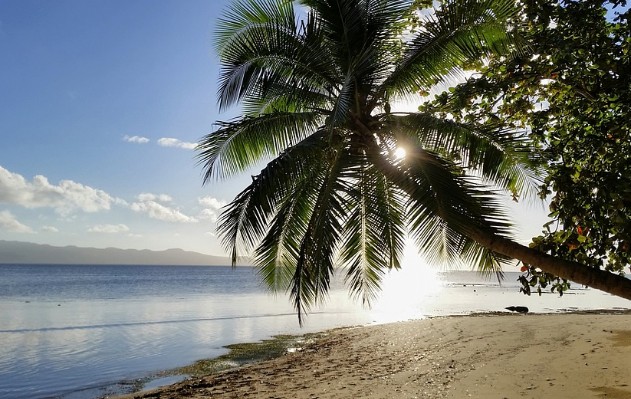
Health Risks in Fiji
Dengue fever.
Dengue fever is contracted through mosquito bites, so there are no vaccines to prevent it. Fever, sore muscles and joints, nausea, vomiting, and headaches are some symptoms.
Hepatitis A
Fever, nauseousness, vomiting, and abdominal pain are symptoms. The liver may be harmed in extreme circumstances.
There are several symptoms, including fever, muscle aches, nausea, abdominal pain, and diarrhea.
What Vaccinations Do I Need for Fiji?
Before departing on your trip, vaccinations must be received. Try to get your shots 4–8 weeks before your trip.
High Priority: Tetanus Diphteria Vaccine
every ten years, it must be done. defends against tetanus, which develops when bacteria enter a wound and release a neurotoxin that causes muscle rigidity and excruciating spasms.
High Priority: Typhoid Vaccine
prevents the transmission of salmonella, which causes typhoid fever when contaminated food or water is consumed.
High Priority: Hepatitis a Vaccine
defends against Hepatitis A, an infection of the liver brought on by consuming contaminated food or water or coming into contact with infected individuals.
High Priority: Hepatitis B Vaccine
defends against Hepatitis B, a liver infection that is spread by contact with infected bodily fluids.
Visiting Fiji in the Spring
In the southern hemisphere, spring occurs from October to December. The wet season is during these months in Fiji. The daily rain showers that cover the islands are these months’ most pronounced feature. Even so, it can still be a fantastic time to travel and take in one of the most joyous seasons of the year.
Visitors can anticipate higher temperatures and longer days as spring arrives after the colder winter months. Average springtime highs and lows are usually in the low to mid 80s.
In Fiji, the wet season brings about daily afternoon downpours. Usually, these showers only last for an hour before the days become as sunny as usual. Consider the brief change in weather if you have any daytime activities scheduled. Plan changes won’t be too significant, though, usually!
The spring season is when Fijian tourism starts to wane. The peak season lasts from mid-October on. It’s a great time to take part in the many national festivities and experience true “Fiji Time.” Events like the Diwali Festival of Lights and Fiji Day in October, or the month-long holiday and New Year’s celebrations in December, are frequently held in the spring.
Visiting Fiji in the Summer
In Fiji, summer occurs in the middle of the rainy season. The most rain falls during the spring months of January through March. Cyclones are more likely to occur as a result of these powerful tropical storms, even though they are rare.
The summers in Fiji are among the hottest and wettest of the year. Daytime highs can exceed 90 °F, while overnight lows stay in the 80s. In Fiji, January is the warmest month. Days can feel even warmer because of the significant rise in humidity caused by the daily rain showers.
The low travel season is during the summer because most people choose to travel during other seasons with more favourable weather. There are several advantages if you travel during these months. With more than 13 hours of daylight each day, summer has the longest days of the year. It’s also a great time to visit Fiji’s numerous waterfalls to witness them flowing at their fullest.
Numerous local religious Hindu festivals take place at the end of the year, most notably the Holi Festival, which is known for its vibrant colors.
Visiting Fiji in the Fall
Fall is one of the transitional seasons in Fiji, where the hot, rainy summer gives way to the cool, dry winter. Some of the best times to travel to Fiji are during these shoulder months of April to June. While avoiding the tourist crowds that arrive in the later months, you’ll gain from the weather changing to more favourable conditions.
The weather will start to drastically change in April as the wet season comes to an end. In March, when the mercury drops below 90 degrees, the daily rainstorms start to subside. But if you go in April early in the month, you might still experience winter-like weather.
One of the best months to travel to Fiji is May. It happens just before the peak season and has weather similar to the summertime on the islands. The busiest travel period begins in June, at the tail end of the fall.
Consider visiting Fiji in the fall if you want to engage in outdoor activities. With an average of 10–11 hours of daylight each day, there is plenty of time to spend outdoors. The International Jazz and Blues Festival in May and the World Music Festival in June are both popular times for music festivals.
Visiting Fiji in the Winter
Contrary to popular belief, winter in Fiji is quite different. It is the most well-liked season to travel to this island chain because it is the time of year when the weather is at its best. Winter in Fiji lasts from July to September because the country is in the southern hemisphere.
Fiji’s busiest time of year is in the winter, when the majority of its foreign tourists arrive. For many Australians and New Zealanders, as well as many other foreign tourists, it falls during the holiday travel season.
During the Fiji winter, the dry season is in full swing. Clear skies, pleasant mid-80s daytime temperatures, and low 60s at night are what you can anticipate. It also receives little rainfall and has low humidity. Due to the weather, it’s the perfect time to engage in outdoor pursuits like hiking, snorkeling, or daytime excursions without the worry of a midday downpour. Along with the Fiji Regatta Week in September, which takes place every year in July or August, there are other summertime attractions to enjoy.
Fiji experienced high winter tourism due to its ideal tropical climate. Bookings for its resorts, tours, private islands, and other activities are common. We help our Marchay Members get ready for their trip so they can make sure their schedules are full of the experiences they’re looking for.
Final Words
Winter can be crowded with travelers, even though it is the busiest travel season, as they swarm to the island to enjoy the most picturesque season. May, which is the beginning of the dry season but just before the big crowds arrive, is the best month overall to visit Fiji. With it, you can enjoy the island’s peace and tranquility as well as its wonderful weather.
Fiji Travelling FAQ
What is the cheapest time to go to fiji.
February is the cheapest month to visit based on the typical cost over the previous five years for both lodging and flights to Fiji.
When is Fiji Cyclone Season?
The risk of cyclones is greatest in the wet season, which lasts from November through April in the Fijian islands.
Is Fiji Expensive?
The cost of your flight and lodging in Fiji may change depending on the season you travel there. Try to schedule your vacation during the rainy season, which runs from October through April, to avoid the more expensive months.
How Many Days Do You Need in Fiji?
Travelers from all over the world flock to Fiji, which is a well-liked vacation spot. Nadi, the largest island, is where many tourists start their journey, but there are more than 300 other islands to discover. You might need to travel between islands while you’re in Fiji, which could require a quick boat ride or even an airplane trip, depending on what you want to do there.
Average Rating
Leave a reply cancel reply.
Your email address will not be published. Required fields are marked *
Save my name, email, and website in this browser for the next time I comment.
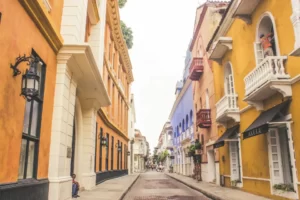
- April 6, 2023
Travelers can go to Cartagena with confidence. Each year, millions of tourists arrive to explore the stunning walled city. The common yellow taxi cab is the most reliable and safest form of transportation.

- April 3, 2023
Dubai is equally as expensive as other global metropolises like New York, London, and Paris. Dubai can be as inexpensive or as expensive as you like; it all depends on you.
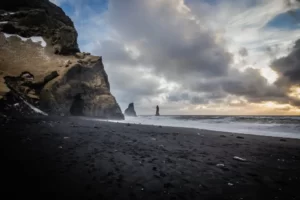
How Expensive Is Iceland – Everything You Should Know
- March 28, 2023
Iceland is incredibly pricey. Iceland is a remote island, so most of their supplies must be imported. The majority of Iceland’s fresh produce is grown and imported elsewhere.

Best Time to Visit Fiji

Climate Overview

General & Geography
Climate in fiji (fiji).
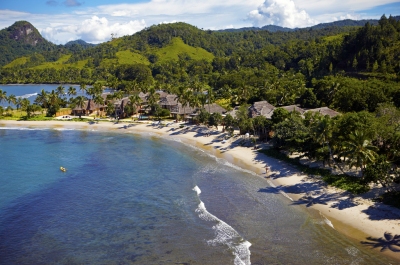
Beach Vacation in February

Best Time to Visit Fiji: Overview
When is the best time to travel to fiji, best time to visit the regions, climate charts fiji.
In the following, you will find climate charts for the regions.
Furthermore, there are some charts you can use for quick comparison of climate between the regions.
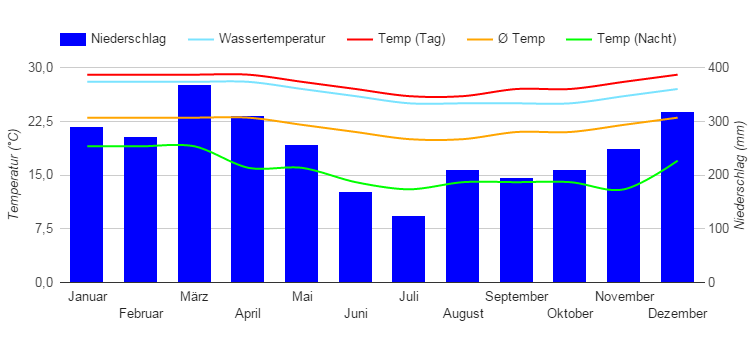
Day Temperatures
Night temperatures, average temperatures, water temperatures, precipitation, hours of sunshine per day.
Source of Data: German Weather Service (Offenbach) and Wikipedia
Climate Tables Fiji
Temperatures, precipitation, sunshine in suva (fiji), temperatures, precipitation, sunshine in rotuma (fiji), popular activities, current weather and forecast.
South Pacific Islands: Regions

Distances to Fiji
Where’s fiji, continent: oceania, share your experience and win.
Fiji: Where happiness finds YOU
Destinations in the vicinity ….
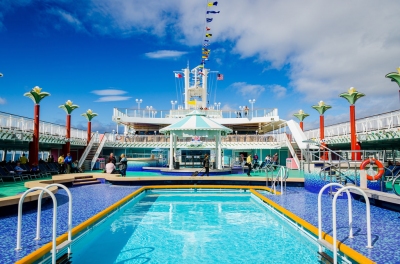
- Imprint / Privacy
- Image Sources

How To Choose The Best Fiji Island For Your Travel Style
F or many people, the mere mention of Fiji conjures up images of sparkling white sands, impossibly blue waters, and plenty of sun and fun at luxury resorts. It has been so for over a century.
Since the islands first began development as a major tourist destination, Fiji's infrastructure and hospitality sector has been geared towards enticing visitors from all over the globe with the promise of a friendly welcome in a tropical paradise. Promoting the islands this way has proven hugely successful; in 2023, the islands received almost 930,000 visitors (almost one for each of Fiji's population) and tourism makes up around 40% of the nation's GDP.
Yet despite its long-standing reputation as an exotic South Seas getaway, there is far more to Fiji than palm trees, sun loungers, and delicious cocktails. The archipelago is made up of 333 individual islands ranging from bustling tourist hubs to idyllically uninhabited, and many of them offer something different for just about every type of traveler.
Needless to say, sunseekers will be well catered for pretty much anywhere they choose, but what are the best Fijian islands if you're the active outdoors type, a culture vulture, a foodie, or want to get well off the beaten track? The good news is that a vacation to Fiji has it all, so let's look at some of the best islands to choose from before booking that long flight to the South Pacific.
Read more: Couples Will Swoon Over These Romantic Destinations In Fiji
The Main Island Has Something For Everyone
If you're looking for a good overall blend of scenery, beaches, and the delights of the city, Viti Levu could be the place for you. As Fiji's most populous island and home to the nation's capital, Suva, there is no shortage of things to do and see.
Fiji's international airport is located in Nadi in western Viti Levu and most visitors enter and leave the country here. Far from just a transport hub, it has interesting things to see, such as the vibrantly-colored Hindu Sri Siva Subramaniya Temple and the array of orchids in the evocatively named Garden of the Sleeping Giant. Just a few miles away is Denaru Island, the "beating heart of Fiji tourism," with its plush world-class resorts, golf course, superyachts in the marina, and top-end dining.
If you are traveling as a family, many resorts and beaches are well-suited for people with children. And there is far more to explore than just sand and sea: Kulu Wild Adventure Park is a great day out with its waterslides, ziplines, and wildlife sanctuary, while more intrepid families can experience the thrill of boat rides and tubing on the Navua River.
Suva is a pleasure to wander around with its blend of grand colonial architecture and post-independence Fijian culture. It's a haven for foodies, too, with a range of international cuisines and tasty quick eats from markets and street stalls. Suva is also one of the top places for nightlife with many bars and clubs.
Fijian Islands Where You Can Relax And Play
The Mamanuca Islands , only a short 20-minute ferry ride from Viti Levu, are a superb option for families and couples alike. It is well-established as a popular vacation spot with all the creature comforts you'd expect from a top-tier destination. There is also plenty to keep the kids happy while parents can relax at Plantation Island Resort or Treasure Island Resort — the latter is famed for its turtle breeding program, always a hit with children.
Meanwhile, exclusive resorts like Six Senses Fiji are the perfect choice for a romantic getaway. With luxurious villas and spa treatments, it's worth the splurge for an unforgettable vacation. Other types of travelers gravitate to this chain, too. Beachcomber Island has a reputation as Fiji's Party Island, a classic backpacker resort that attracts a young and relaxed crowd; and Cloudbreak is a world-renowned spot that draws surfers from all over.
If the Mamanucas are a little too busy for you, perhaps consider the more isolated and peaceful Yasawa island group instead. Getting there requires a bit more effort, but it is still easy enough to reach from Viti Levu — taking the ferry is a cheap and leisurely option. The beautiful islands still have the amenities, with accommodations ranging from swanky five-star resorts to more modest digs for budget travelers. The Yasawas are great for island hopping and are home to the famous Blue Lagoon and the spectacular Sawa-i-Lau Caves.
Adventures On Land And Sea
Although Vita Levu is the most heavily touristed island, there is still an opportunity to escape from the pampered existence of the resorts to the deep wilderness of the island's rugged interior. Vita Levu is graced with three of Fiji's national parks: the spectacular rolling landscapes of Sigatoka Dunes; the dense tropical foliage of Colo-i-Suva Forest Park; and the sweeping vistas and plunging waterfalls of Koryanitu National Heritage Park. In between there are lush rainforests and lofty peaks, making it a great destination for hiking trips and giving you the chance to see how Fijians live away from the resorts. You can head out on your own or hire a guide for the full experience.
For more outdoor adventures, consider wondrous Taveuni, Fiji's Garden Island, for lush forests, crystal waterfalls, and scuba diving at the Great White Wall, a towering coral reef on Somosomo Strait. Diving and snorkeling are some of the must-do highlights of a trip to Fiji thanks to its clear waters, magnificent reefs, and stupendous array of marine life. Indeed, you're almost spoiled for choice when it comes to picking a spot. Natadola Bay on Viti Levu is a great family-friendly option with easy access to its reef from the beach, and you can swim with manta rays on Kadavu Island and in Manta Ray Passage in the Yasawa Islands. If you want an adrenaline rush, check out the guided shark dives in Beqa Lagoon for an unforgettable experience.
Places To Explore The Local Culture
Wherever you go in the world, resorts aren't always the best way to get to know a country's culture. Luckily, there are many ways that you can get a taste of traditional day-to-day life in Fiji. Organized village tours are a good way to support families in rural communities while also getting an authentic experience. A typical tour will pick you up from your accommodation and may include traditional dance, food, and the chance to hang out with the villagers. If you would prefer longer to immerse yourself, village homestays are a terrific and very cost-effective way of really getting to know your hosts. One painful-looking Fijian tradition you should add to your agenda is a firewalking ceremony; to see this feat of bravery and endurance in its most authentic setting, head to Beqa Island.
For a glimpse into Fiji's colonial past beyond the architecture of Suva, head out to Ovalau, the main island of the Lamaviti Group. Here you will find traces of the first Europeans who settled on the archipelago. Levuka, a quaint historic port town, was the nation's capital for a short period during the 19th century and became Fiji's first UNESCO World Heritage Site. It's a quiet place now but it is home to several interesting historic sites such as the Gothic Sacred Heart Church and a ruined Masonic Lodge, and the storefronts of Beach Street have an incongruous Wild West look to them.
Really Get Away From It All
When you arrive in Fiji you will quickly become aware of the concept of "Fiji Time," the laidback notion that things will get done in due course without heaping time pressure on the individuals involved. If you are used to the breakneck pace of life in a big city like, say, London or New York, it can be a little frustrating at first. But if you can let go of your preconceived ideas about how quickly things should happen, Fiji Time adds to the relaxed charm of the country. It's not such an issue in major resorts, but to experience it at its best, head to some of the little-visited islands.
Adventurous travelers seeking unspoiled nature and a break from the rat race of day-to-day life will find their paradise on Kadavu, Fiji's far-flung southernmost island. Asphalt roads are a rumor here, the mail arrives monthly, and phone signals are limited at best on an island largely covered by rainforest and where locals still make a simple living through fishing and farming. Eco-tourists will be rewarded with environmentally friendly resorts to use as a base for a wide range of activities including kayaking, hiking, deep-sea fishing, and scuba diving on the Great Astrolabe Reef, the fourth-largest barrier reef in the world. Kadavu is truly a place to get away from it all and enjoy Fiji Time at its most laid-back.
Read the original article on Islands .
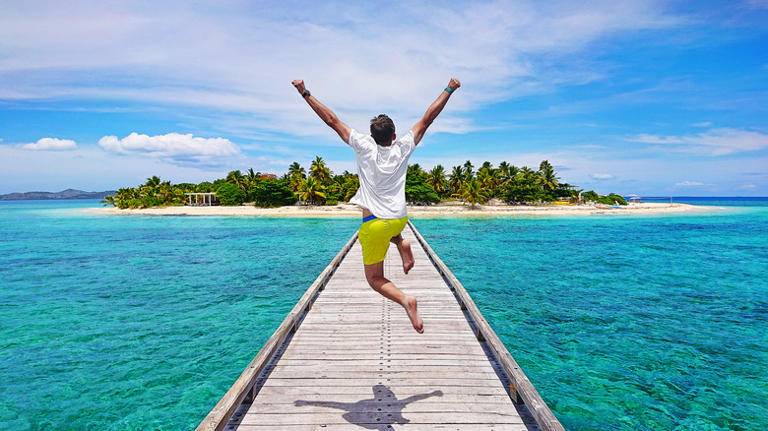

IMAGES
VIDEO
COMMENTS
June to September is the high season in Fiji - and the best time for enjoying some idyllic weather. Fiji has two seasons: summer (the wet season) and winter (the dry season). The latter (generally June to September) is the peak tourist season in Fiji with temperatures hovering between 20-30ºC (68-86ºF).
The wet season runs from November to April, and this is when Fiji is hot and humid. You can expect rainfall but it's often short, although fierce, and it's a good time to visit for lower prices and quieter tourist spots. The best time to visit Fiji is in the dry season, which coincides with winter. This is from May to October, and you can ...
The best time to go to Fiji is whenever you have the chance. This is Fiji we're talking about! Temperatures stay pretty constant through the year, with highs resting in the 80s; however, from ...
In Conclusion: 4 Things to Consider for Choosing a Time to Visit Fiji. As you can see, the best time to visit Fiji is different for everyone. In conclusion, choose the right season that appeals to you based on the four main aspects to consider when choosing the best season to travel Fiji: 1. The Weather. Let's not beat around the bush.
The best time to go to Fiji. Oct 13, 2023 • 5 min read. Tips & Advice. The 9 best places to visit in Fiji. Oct 4, 2023 • 6 min read. Beaches. Fiji or Tahiti: which South Pacific paradise has the edge? Jun 28, 2023 • 6 min read. Tips & Advice. 7 great destinations to consider for your first post-pandemic trip.
The best time to visit Fiji, and the most comfortable, is during the dry season between May and October when temperatures hover around 25°C by day and drop to a pleasant 19-20°C at night. At this time of year the southerly trade winds bring cool breezes off the sea and sometimes blustery conditions on the south and eastern coasts.
Off-Peak Season in Fiji. Off-Peak Season - is between the months of early December and mid-January to March. This is when the quietest and cheapest time to visit Fiji. Festive seasons - during mid-December to mid-January, there is normally a small spike in tourists as the Festive Season intertwines with the Southern Hemisphere summer break.
The best time to visit Fiji depends on what you want to do while you're there. It has a warm, tropical climate year-round, with minimal extremes, but there are distinct wet and dry seasons. The wet season lasts from November to April, and the dry season runs from May to October. Temperatures throughout the year are pleasant, rarely dropping ...
For a stable swell period for Surfing, you can consider a vacation in Fiji during April and October. In this period you can experience good surfing time between 8- 10 feet. You can consider these factors while planning your vacation but if you are not specific about any of the factors, Fiji is a destination to visit any time of the year.
Best time to visit Fiji; When is the best time to go to Fiji? Fiji is a year-round destination with warm temperatures and plenty of sunshine throughout the year. The most popular time to visit is between May and October when the weather is at its best - think blue skies, low humidity and little to no rain. The monsoon season from November to ...
Best Time to Visit by Season. A perfect beach destination, Fiji sees temperatures in the range of 78°F to 88°F throughout the year. The islands of Fiji experience a typical tropical weather system - with a cool, dry period that runs from May to October that the locals refer to as winter and a wet season that runs from November to March.
The best time to visit Fiji is during the dry season, from June to September, which is also the tourist high season. It has the best weather and the best tourist offerings. Visitors coming from places with temperate climates and the standard four seasons will have to adjust to a different climate and seasonal pattern in Fiji, which is a tropical island country.
The best time to visit Fiji: Seasons consideration 1. Fiji Winter (dry) season: The dry season known as Winter in Fiji runs from May to October. The winter months in Australia overlaps with the cooler months in Fiji. However, winter in Fiji or their dry season is warmer than the Australian winter. The daytime temperatures in Fiji at this time ...
The best time to visit Fiji largely depends on your travel preferences and desired weather conditions. Fiji's dry season from May to October offers pleasant temperatures, lower humidity, and less rainfall, making it the peak season for optimal weather. During this time, travelers can enjoy a wide range of outdoor activities and water sports and ...
Best time to visit Fiji. Fiji is a year-round destination with warm temperatures and plenty of sunshine throughout the year. The most popular time to visit is between May and October when the weather is at its best - think blue skies, low humidity and little rain. The monsoon season (November to April) coincides with the off-season, but for ...
The question of when is the best time to go to Fiji is a highly subjective one, as it is generally pleasant to visit throughout the year. However, if you're asking when the best time to visit Fiji weather-wise is, then it's during the dry season from May to October. Temperatures at this time hover around a cool 25C during the day and 20C at ...
Why We Love It. Experience the magic of Fiji in the springtime! During this season, temperatures are pleasantly warm and days become longer. Despite wet weather conditions due to the start of rainy season, visitors will still be able to enjoy outdoor activities with daily rainstorms usually only interrupting plans for an hour or so.
The Best Time to Visit Fiji. If you're looking for optimal tropical conditions and minimal holiday crowds, the best time to visit Fiji is between late October and early November. However, at TravelOnline, our favourite thing about Fiji is the year-round warm weather, twelve months of perfect snorkelling temperatures, and endless sunbathing ...
The best time to visit Fiji is during the dry season. The dry season lasts from May to September. These months have the ideal weather of clear, sunny skies, warm temperatures, and little rainfall, making it feel like paradise. The dry season spans across the fall and winter in Fiji. If you're looking for a more laid-back travel experience to ...
Some might say that high season is the best time to visit Fiji. High season occurs during Fiji's winter months and runs from about June to September, peaking in June, July and August when conditions are dry and the climate is mild. If you're looking to warm up under the Fijian sun, early June or late September are best for catching rays ...
Best Time to Visit Fiji In 2023 - Popular Time. November 28, 2022. Destinations. Fiji. Visit Fiji. Read Time: 11 Minute, 7 Second. You can find information about visiting Fiji in the dry vs. wet season, activities to add to your itinerary, and how to make your dream A vacation to Fiji becomes a reality.
The Republic of Fiji is an independent island state in the southern Pacific, which was a British crown colony from 1874 to 1966 and is now a parliamentary democracy. More than 330 islands form the Fiji-Arichpel with a total area of more than 11200 square miles, about 115 islands of the Republic of Fiji are actually inhabited today. The capital is the city of Suva on the south-eastern coast of ...
Wherever you go in the world, resorts aren't always the best way to get to know a country's culture. Luckily, there are many ways that you can get a taste of traditional day-to-day life in Fiji.
The best time to dive in Fiji is during the winter months, from May to September. During these months, the water temperature is a comfortable 20-25 degrees Celsius. However, you will need to bring some gear with you to make sure you are safe and comfortable while diving. First, you will need a wet suit.